Samsung QN70F is a pretty decent mid-range TV. Its strongest point is definitely the smoothness of the image – thanks to the 144 Hz panel, low input lag, and a host of extras for gamers, we have here the recipe for nearly an ideal gaming screen. It will work just as well for sports fans – the image is fast, clear, and it doesn't tear. When it comes to image quality – it's really not bad. The VA panel delivers good blacks, brightness is above average, and colours look great after calibration. Samsung markets the QN70F as Neo QLED, which means Mini LED, and in a way, you can look at it that way – but only partially. The backlighting is edge-lit, so it’s far from full-fledged Mini LEDs with local dimming. It's a shame because marketing has its way, and the user might feel a bit misled. There are also some minor drawbacks – no USB recording, no DTS support. But still, the QN70F leaves a really good impression. It might not be a “true” Mini LED, but for its price, it's a solid piece of television – especially for gamers and those who enjoy fast, dynamic content.
- Matching (Score)
- Our verdict
- TV appearance
- Where to buy
- Contrast and black detail
- HDR effect quality
- Factory color reproduction
- Color reproduction after calibration
- Smoothness of tonal transitions
- Image scaling and smoothness of tonal transitions
- Blur and motion smoothness
- Console compatibility and gaming features
- Input lag
- Compatibility with PC
- Viewing angles
- TV efficiency during daytime
- Details about the matrix
- TV features
- Apps
- Playing files from USB
- Sound
Samsung Neo QLED QN70F / QN74F / QN77F vs TCL C7K / QM7K
Direct compare
Check the best price offer:
Samsung Neo QLED QN70F / QN74F / QN77FQN70F / QN74F / QN77F
C7K / Q7C / MQLED85K / C79K / C71K / QM7K
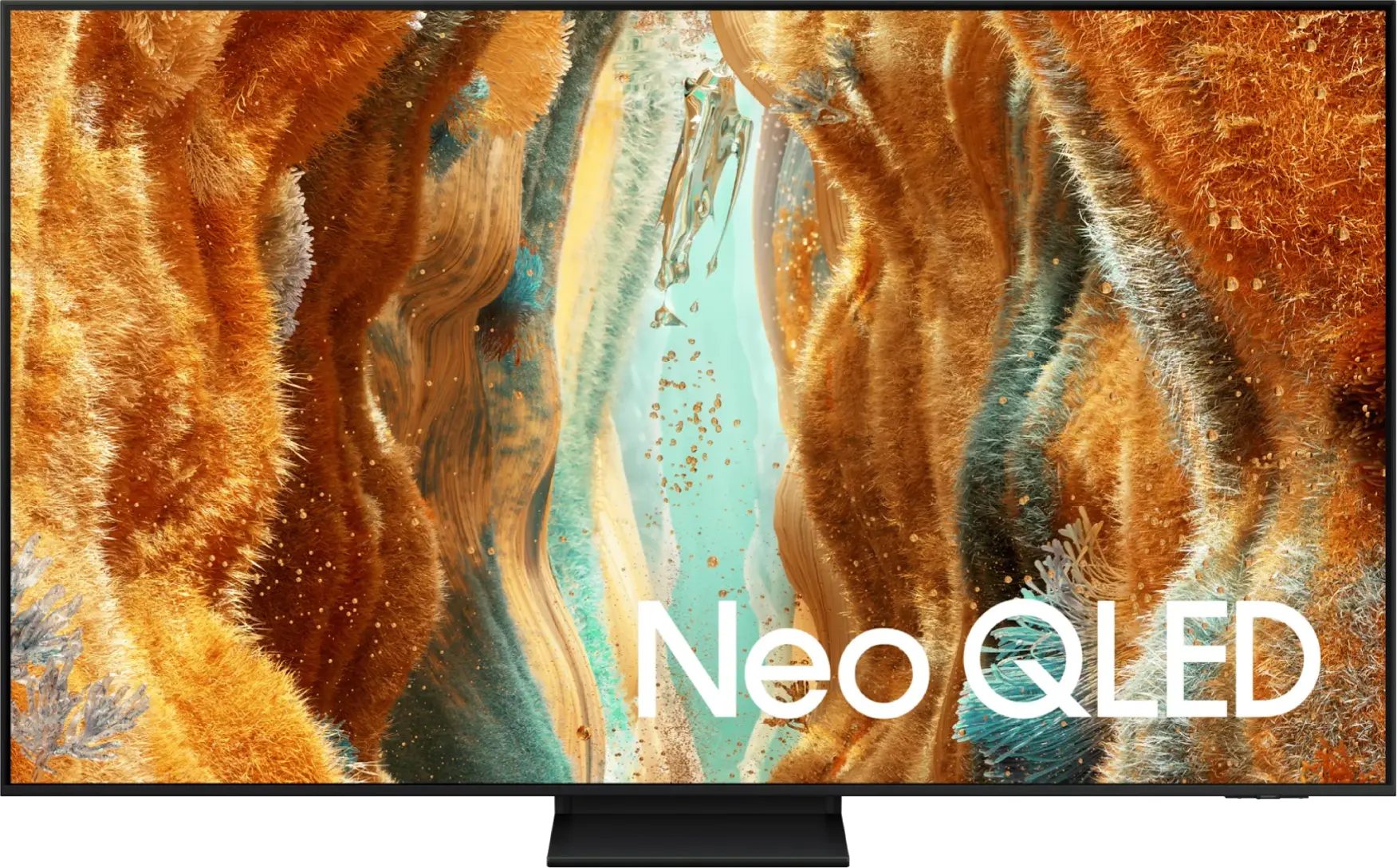
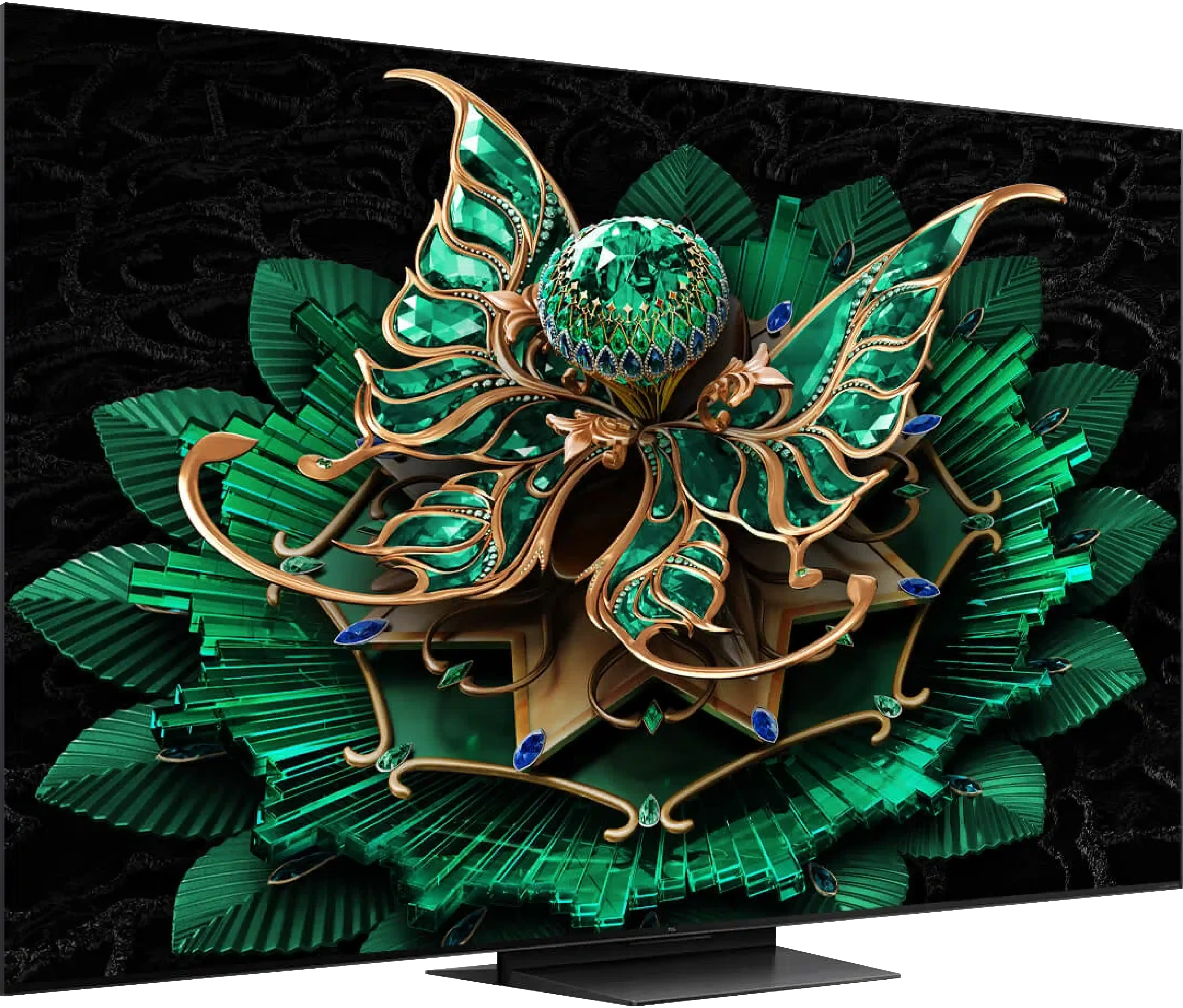
Panel type: LCD VA
Resolution: 3840x2160
System: Tizen
Model year: 2025
Complete the survey to find out the result

Panel type: LCD VA
Resolution: 3840x2160
System: Google TV
Model year: 2025
Complete the survey to find out the result

Overall rating
7.1
7.1
Movies and series in UHD quality
6.5
6.7
Classic TV, YouTube
6.5
6.5
Sports broadcasts (TV and apps)
6.7
6.4
Gaming on console
8.5
8.5
TV as a computer monitor
8.2
8.4
Watching in bright light
6.3
6.1
Utility functions
7.5
7.7
Apps
8.7
9.6
Sound quality
6.4
7.0
Complete the survey to find out what fits your preferences
Advantages
Great black levels and contrast
Above average panel brightness
High refresh rate of 144Hz
Many features for gamers: ALLM, VRR, Game Bar, etc.
Low input lag
4 HDMI 2.1 ports
Feature-rich and smooth Tizen operating system
Super slim design
Very good black - VA panel with a large number of Mini-LED zones
High brightness in HDR - over 1000 nits
Great for gamers - HDMI 2.1, low input lag, VRR, ALLM etc.
Good motion fluidity - 144Hz panel
Support for multiple HDR formats: HDR10, HDR10+, Dolby Vision
Google TV operating system with access to a huge app base
Pleasant sound from built-in speakers
Disadvantages
No USB recording feature
No DTS format
Issues with the HGIG feature (for gamers)
Symbolic local dimming (Is this really MINI-LED?)
Google TV can have minor stutters
No USB recording and PiP function
Our verdict
There are TVs that come for testing, and you immediately think: "oh, just another average one, probably like many others." And essentially... that's true. The TCL C7K doesn't try to dethrone OLEDs, nor does it scream "revolution!" from the box. And yet, after a few days of testing, it's hard not to think: "wow, this is really good gear." And that's exactly what the C7K is. The biggest advantage of the C7K is the decent picture at a reasonable price – MiniLED and quantum dots do their job here. The colours are vibrant, the brightness is satisfactory, the contrast impresses, and with the right settings, you can truly enjoy viewing in the best quality. The second strong point is motion smoothness – both in sports and gaming. Support for HDMI 2.1, variable refresh rate, 144 Hz, and a whole heap of other features makes gaming on this TV a pure pleasure. On top of that, there's Google TV, which – despite some minor shortcomings – offers access to almost an endless library of apps. Voice control, quick access to YouTube, Netflix, AirPlay support – it has everything you need for daily use. Are there downsides? Of course. The Google TV system can have moments of "hesitation," and MiniLED – like any MiniLED – can stumble on very challenging movie scenes. But these are details. After all, the C7K is a mid-range model – and in this class, it performs remarkably well. So if you’re looking for a reasonably priced, modern TV with Google TV that looks good, works well, and sounds pretty decent without breaking the bank – the TCL C7K definitely deserves your attention.
TV appearance
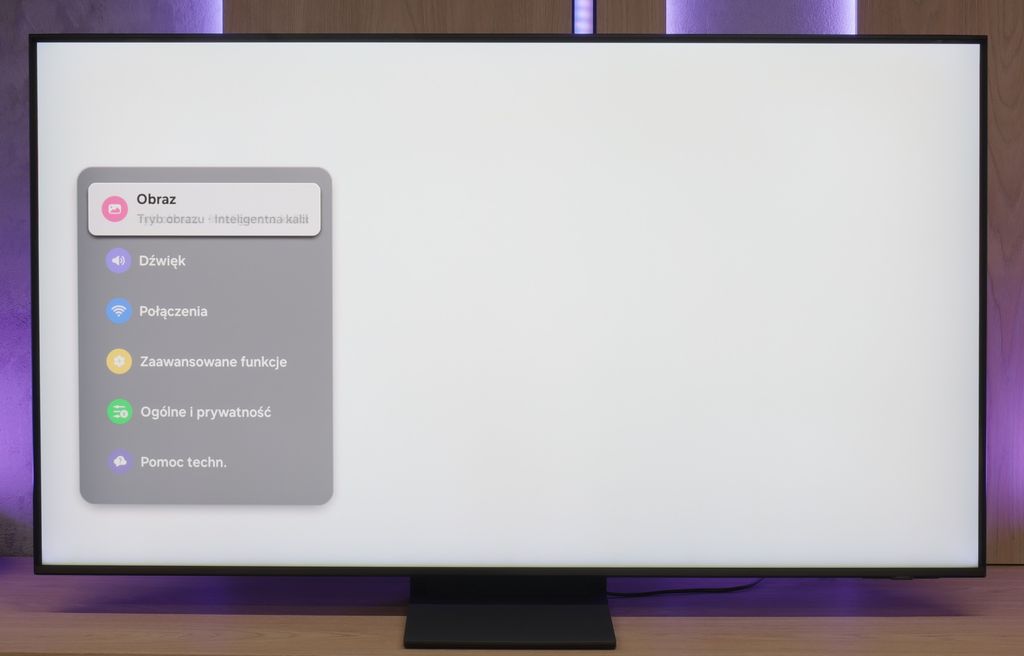
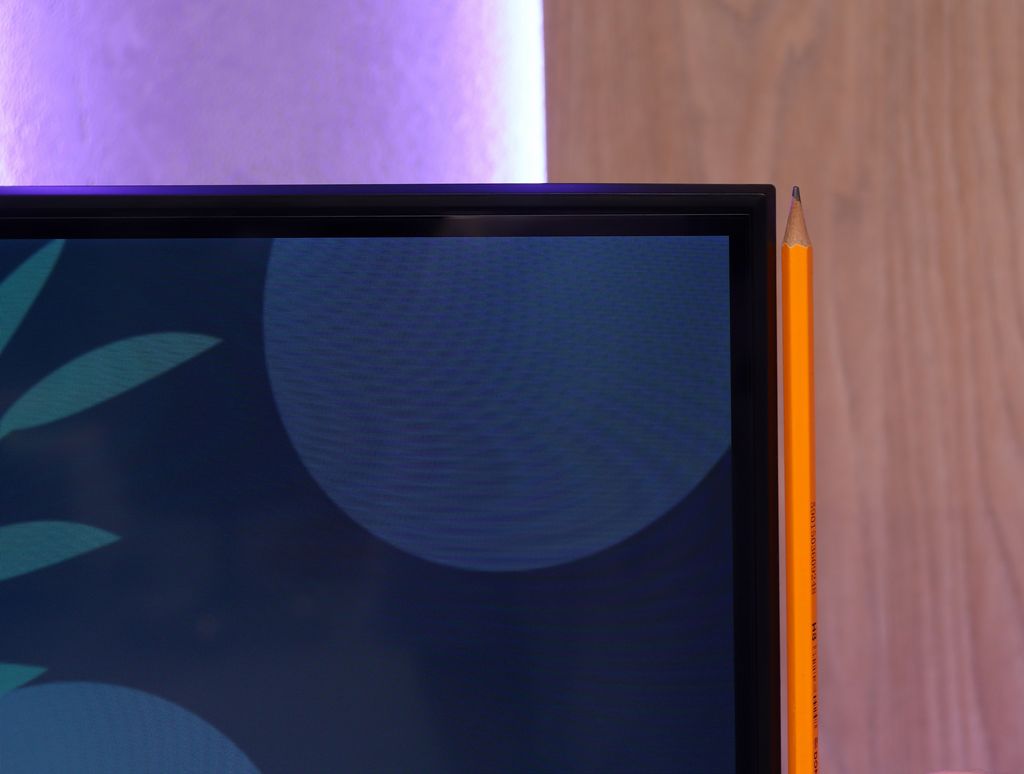
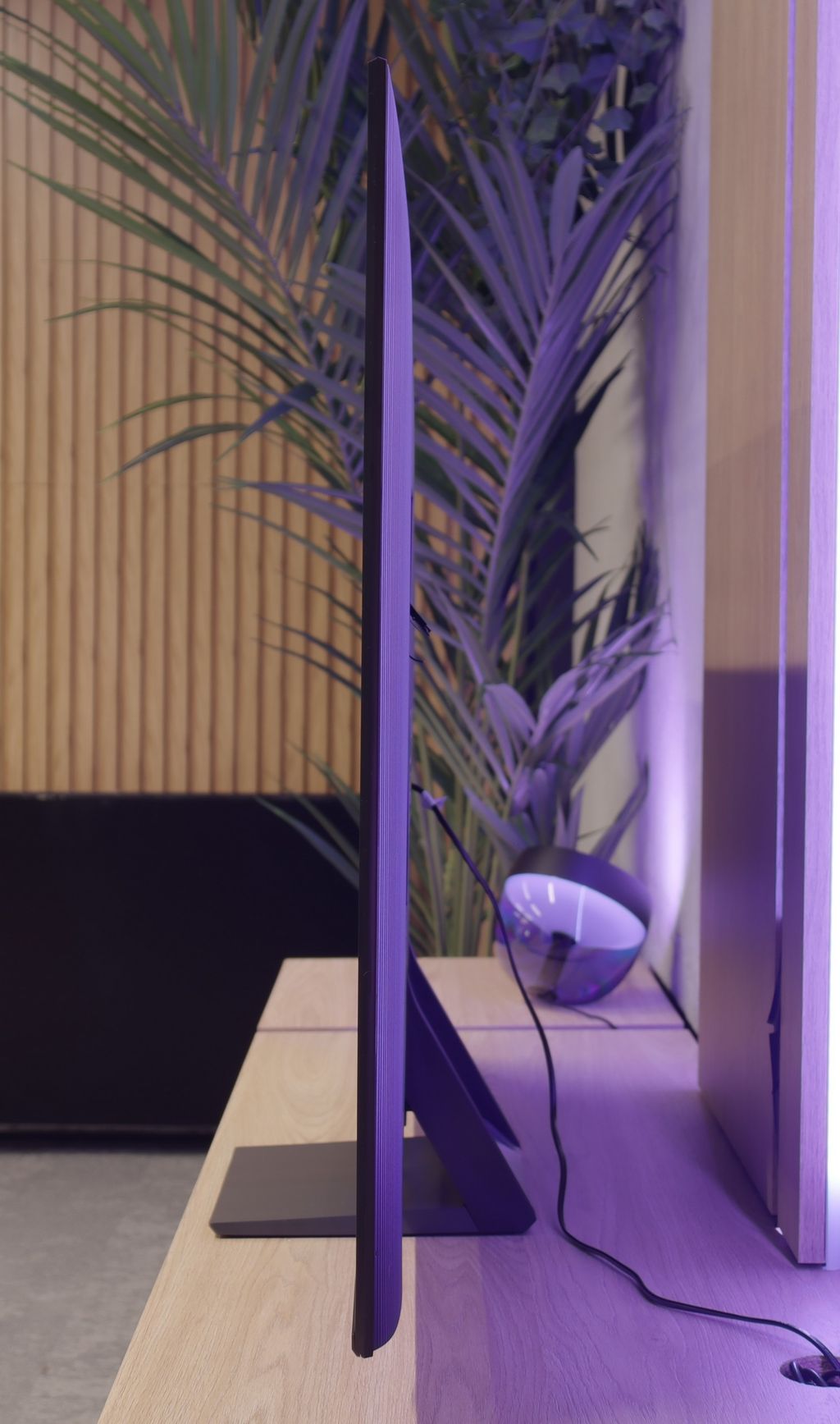
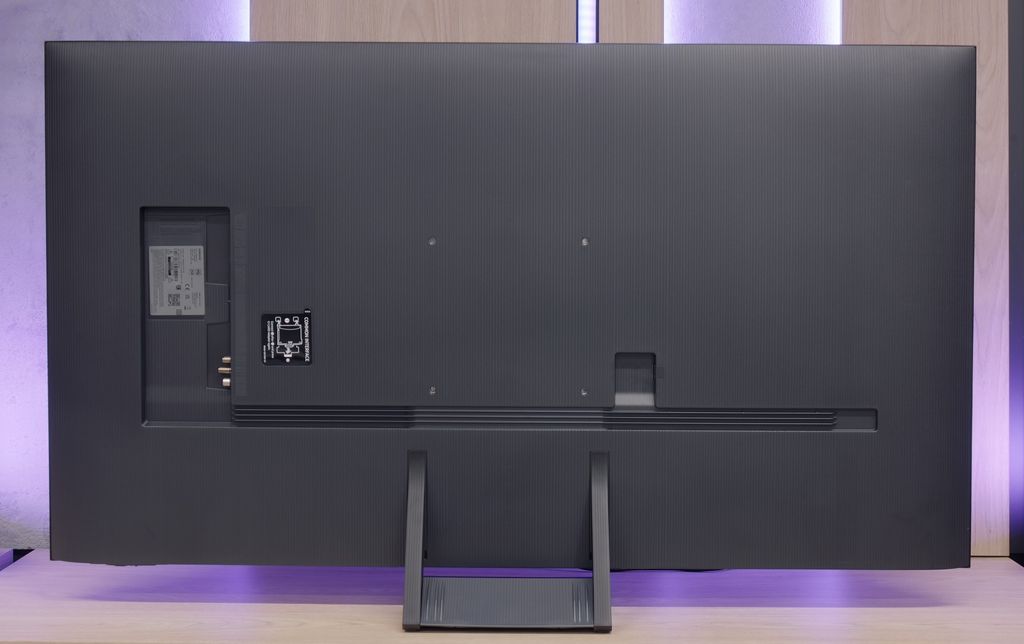

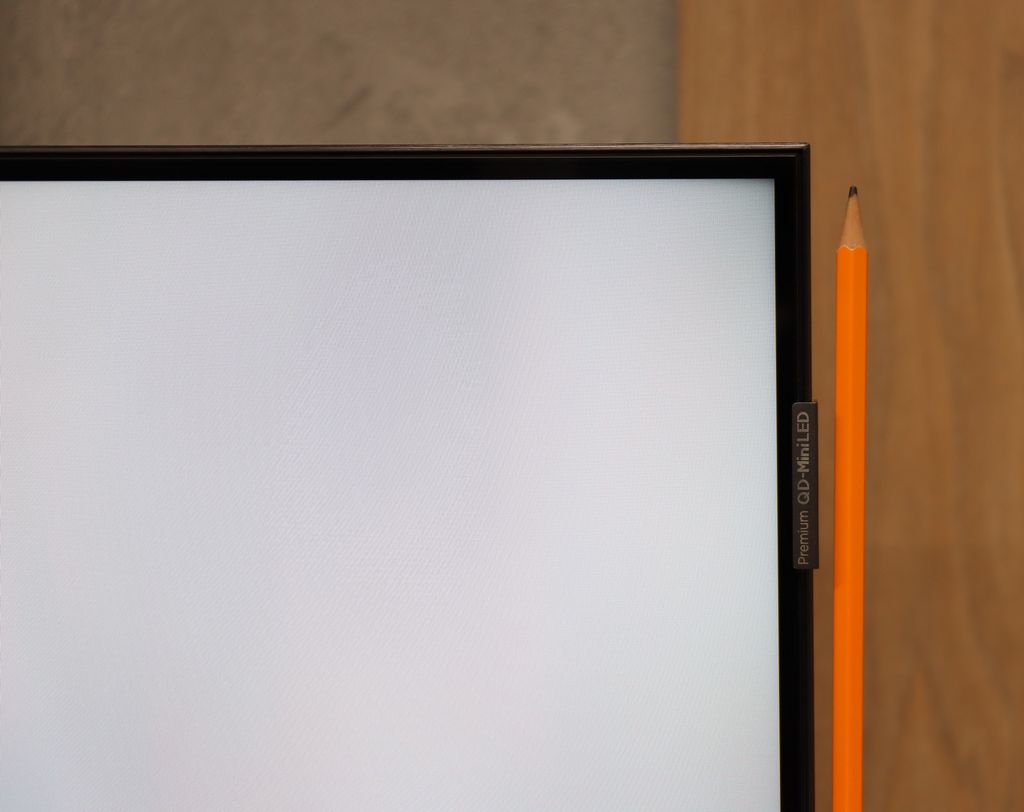
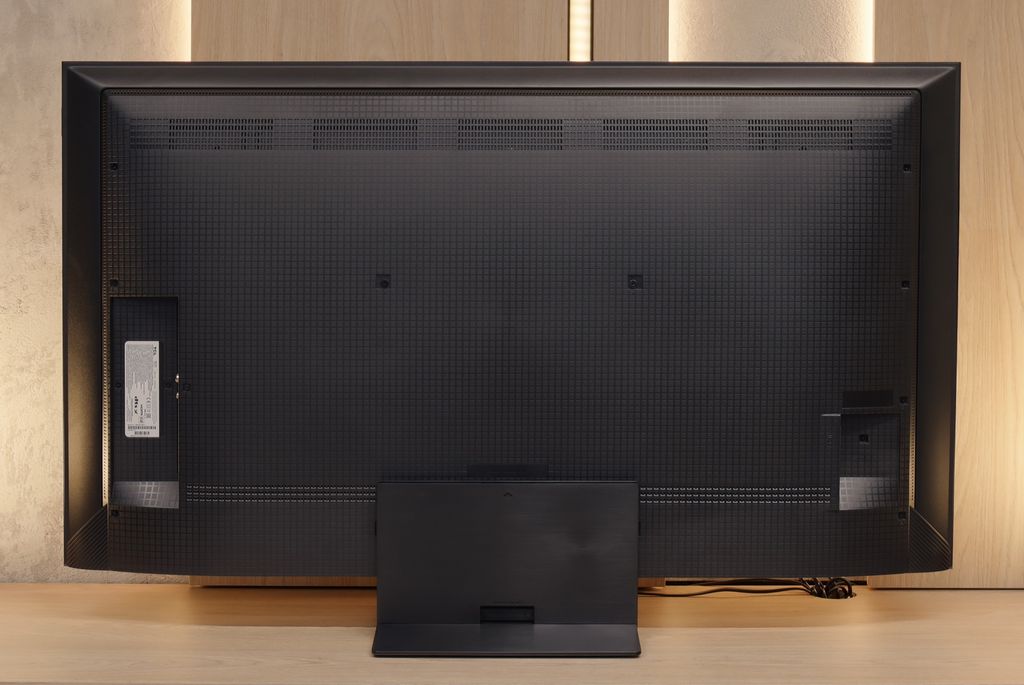
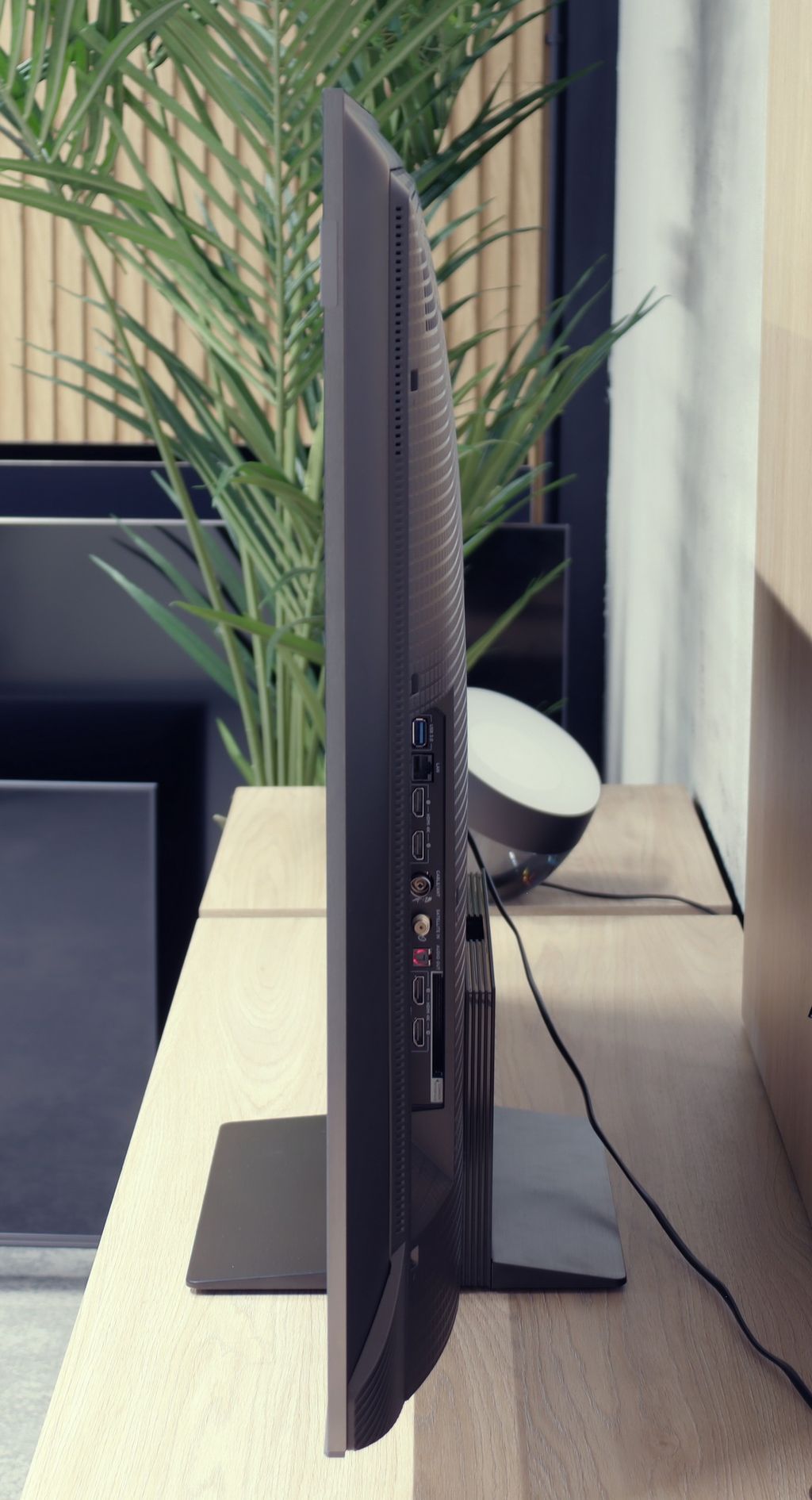
Contrast and black detail
6.2/10
7.1/10
Local dimming function: Yes, number of zones: 20 (1 x 20)
Local dimming function: Yes, number of zones: 336 (14 x 24)
Contrast:

Result
9,200:1

Result
7,000:1

Result
5,350:1

Result
5,700:1

Result
5,300:1

Result
161,000:1

Result
18,750:1

Result
13,150:1

Result
6,300:1

Result
4,200:1
Halo effect and black detail visibility:

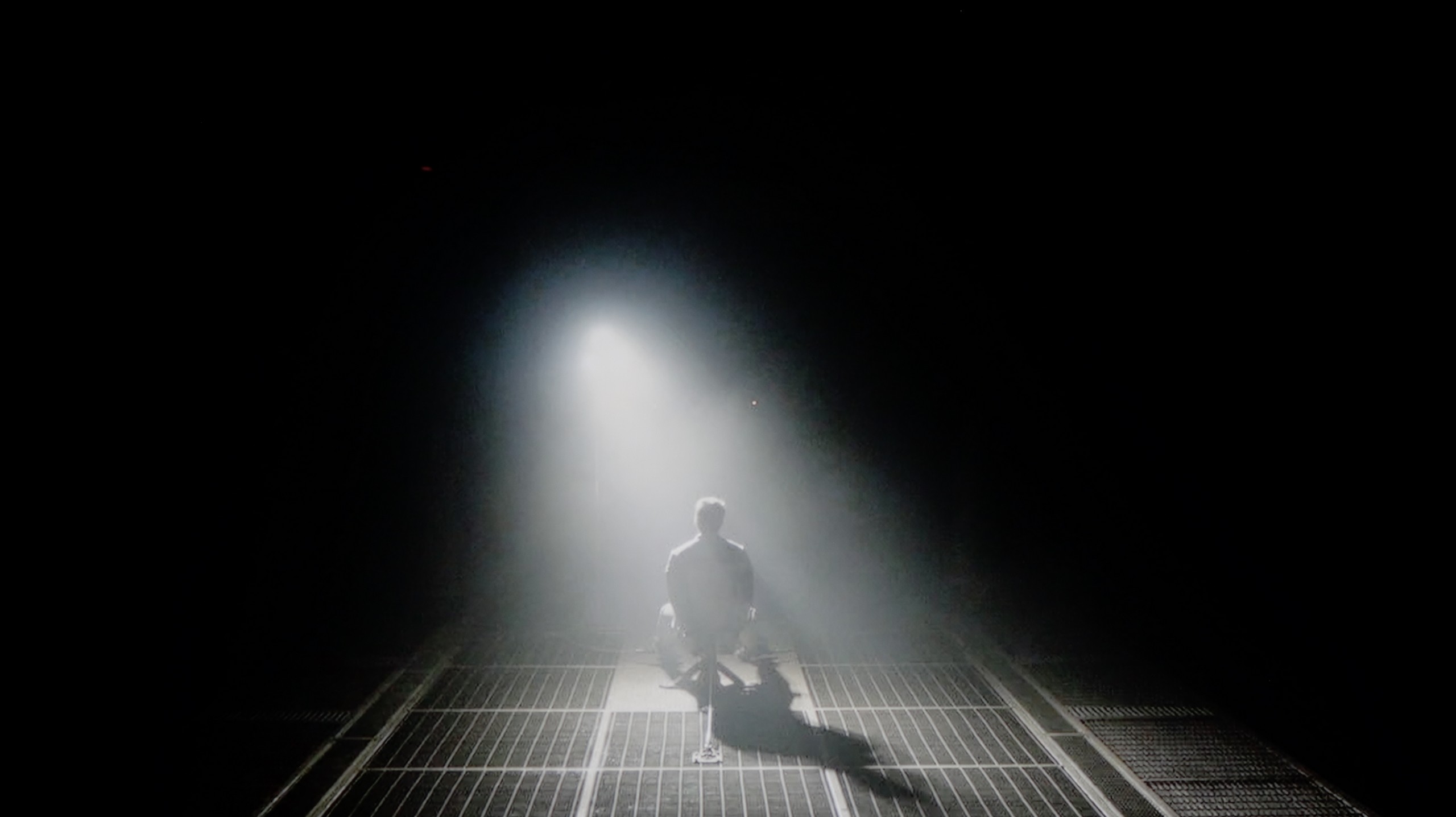
QN70F is equipped with a VA panel, which offers a high native contrast – a good starting point for black, especially for evening viewing. But theoretically, this is just the beginning of its capabilities. The television is branded as Neo QLED, which means it features Mini LED technology and a local dimming system. And indeed – the QN70F has such a function. The problem is that we’re not talking about classic local dimming with LEDs placed directly behind the panel. Instead, edge lighting with an overall dimming mechanism, known as global dimming, has been used. The effect of this is that instead of selective brightness control in individual zones, the entire screen is slightly dimmed when a dark scene appears. In practical terms, this means the contrast is average compared to Mini LED models that offer true local dimming. The black isn't bad – that’s thanks to the VA panel itself – but one can't speak of the precise light control that advanced systems with multiple zones provide. And here arises the question: is the QN70F series of televisions really a Mini LED television, or just a marketing variation on the Q70 series? Looking at the technical aspects – it’s hard to consider this model a full-fledged representative of this technology. But in everyday use, the black looks decent and for many people it can be fully satisfying.
The 50-inch TCL C7K we tested surprised us right from the start – it's the smallest model in the series, yet it's equipped with a VA panel with MiniLED backlighting and – get this – as many as 336 dimming zones. By comparison, many far larger TVs from higher tiers would be happy to boast such a number. Here we have it in a 50-inch version. Sounds promising, right? So how does this translate into real viewing experiences? In the overwhelming majority of tested scenes – very well. The contrast was high enough that in measurements it reached even six-figure values, which in practice means very deep blacks and well-separated highlights. In scenes from films like The Revenant or Oblivion, the effect was impressive, matching the best LCD screens in this class.
Not everything, however, went perfectly. Despite the impressive number of zones, managing them wasn't always exemplary. In more complex scenes, where small light sources or a high level of detail appear, the TV had issues with the so-called halo effect (a glowing aura around bright objects) or overly aggressive dimming of the image. In such situations, contrast could either collapse due to overexposure of some zones or, conversely – details in bright areas vanished because the zones were suppressing light too much. Nevertheless, it's worth emphasising that in the vast majority of scenes the contrast was more than satisfactory. And considering the size of the TV and the price, the final effect will satisfy not only average users.
HDR effect quality
5.6/10
5.4/10
Luminance measurements in HDR:

Result
619 nit

Result
449 nit

Result
500 nit

Result
422 nit

Result
483 nit

Result
1051 nit

Result
185 nit

Result
454 nit

Result
200 nit

Result
836 nit
Scene from the movie “Pan” (about 2800 nits)
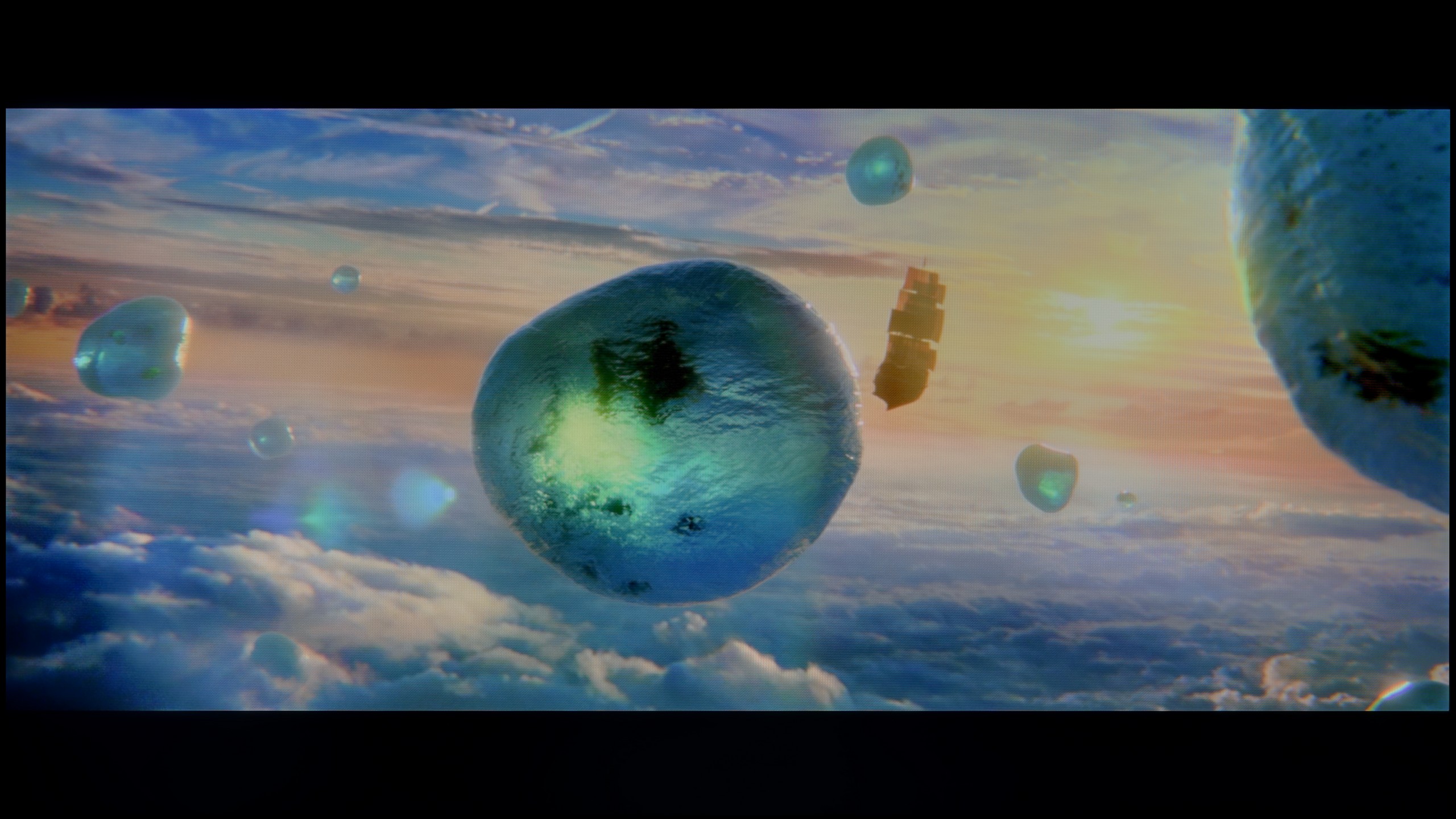
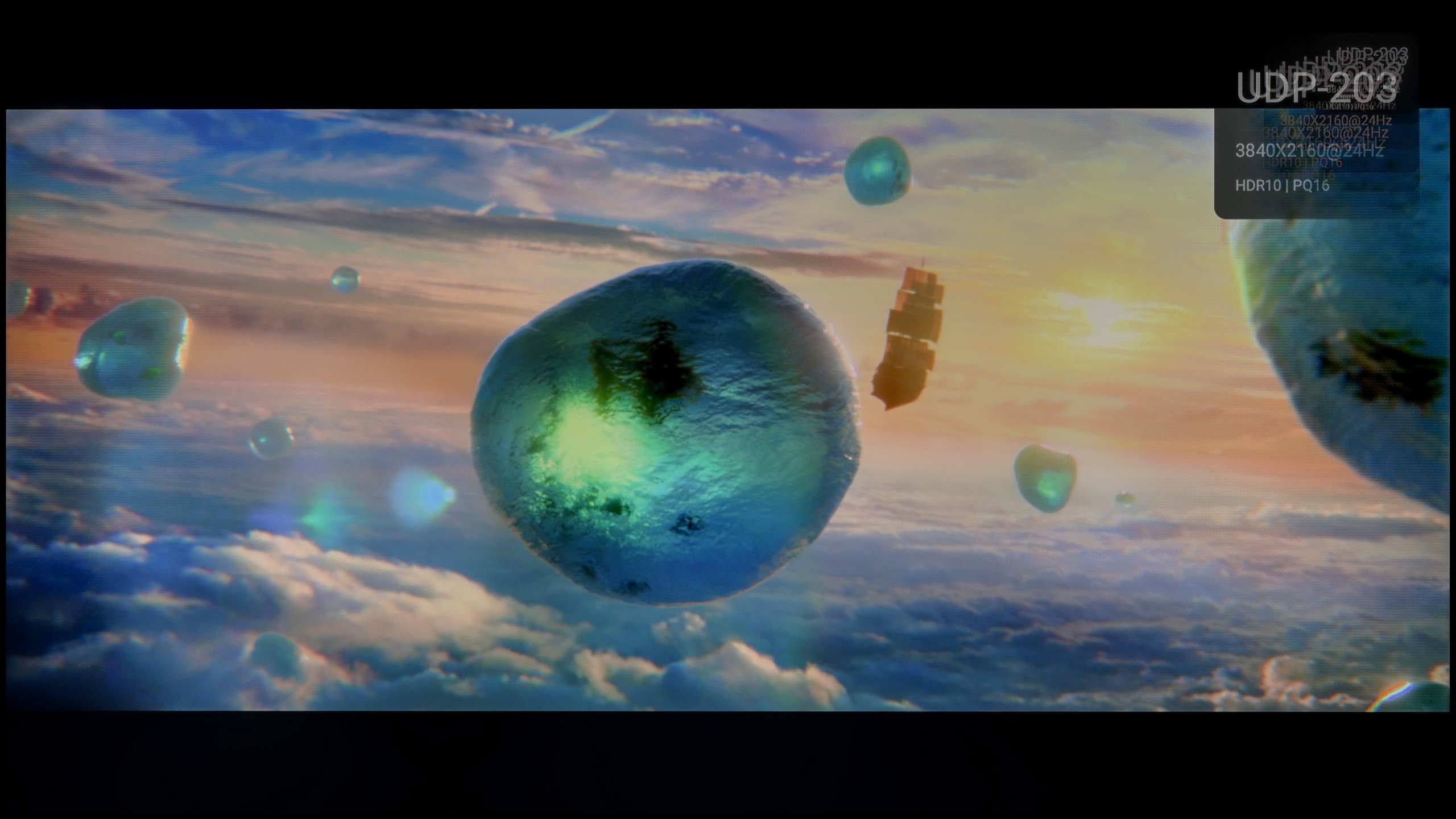
Scene from the movie “Billy Lynn” (about 1100 nits)
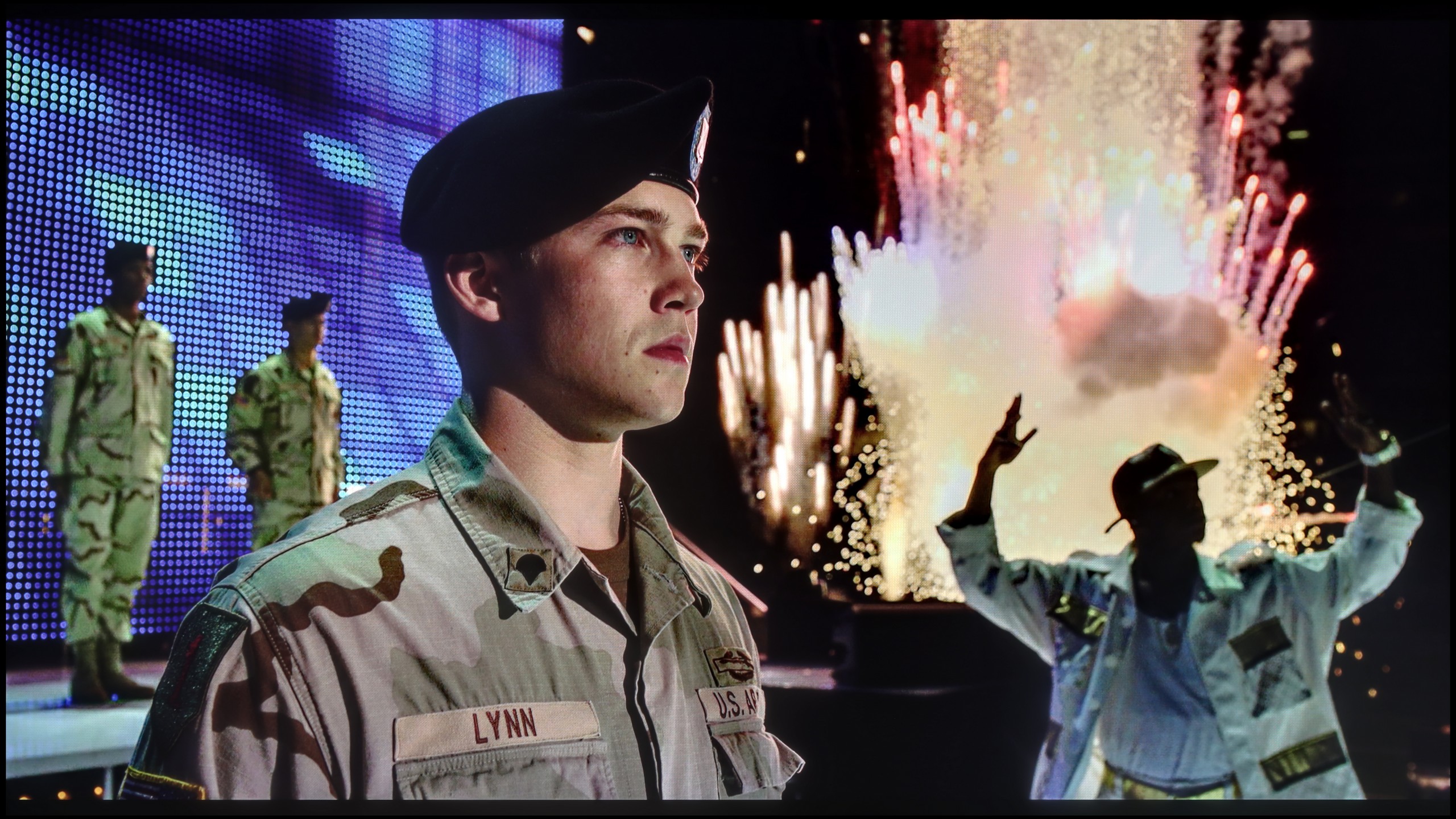

Static HDR10
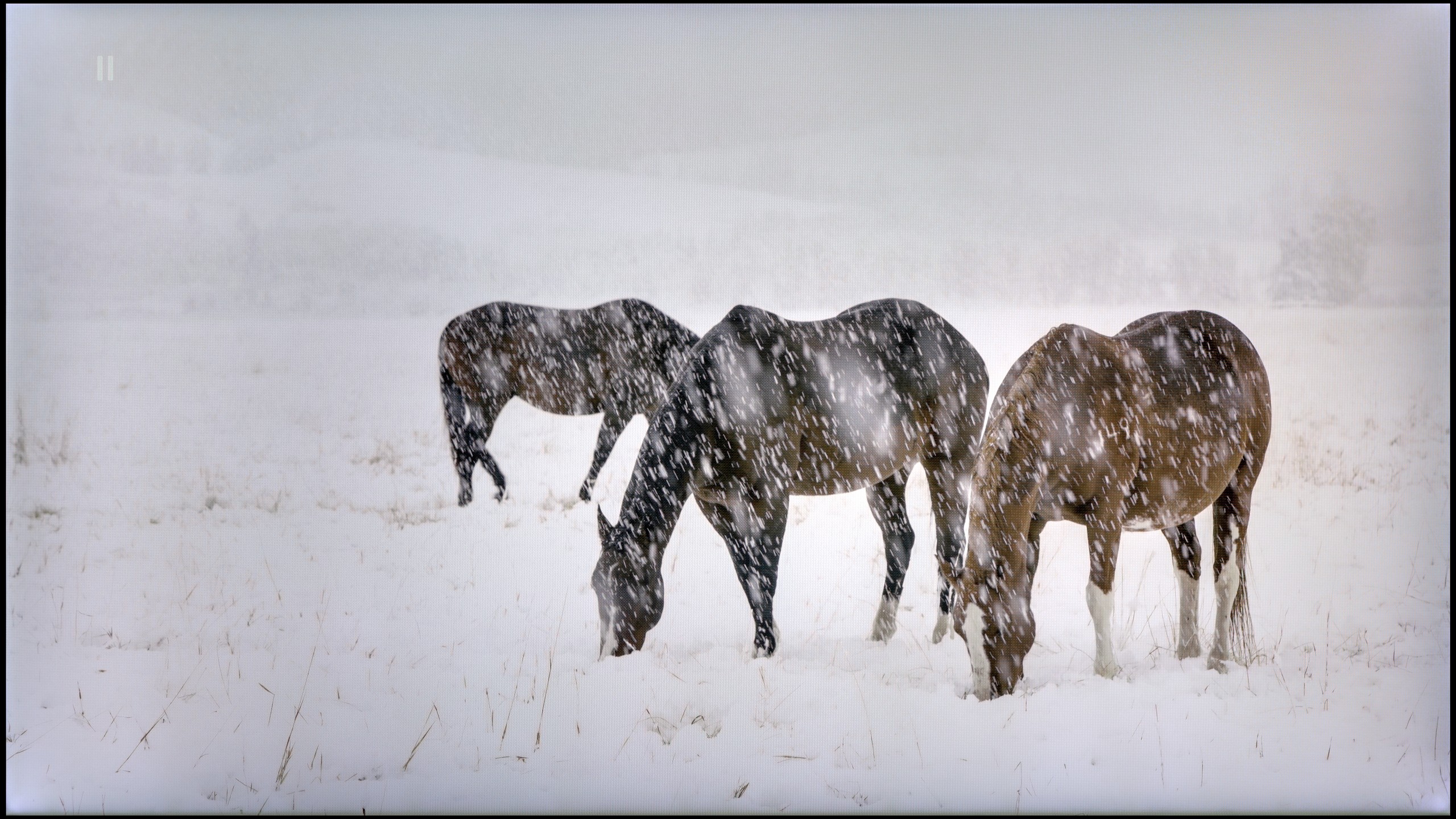
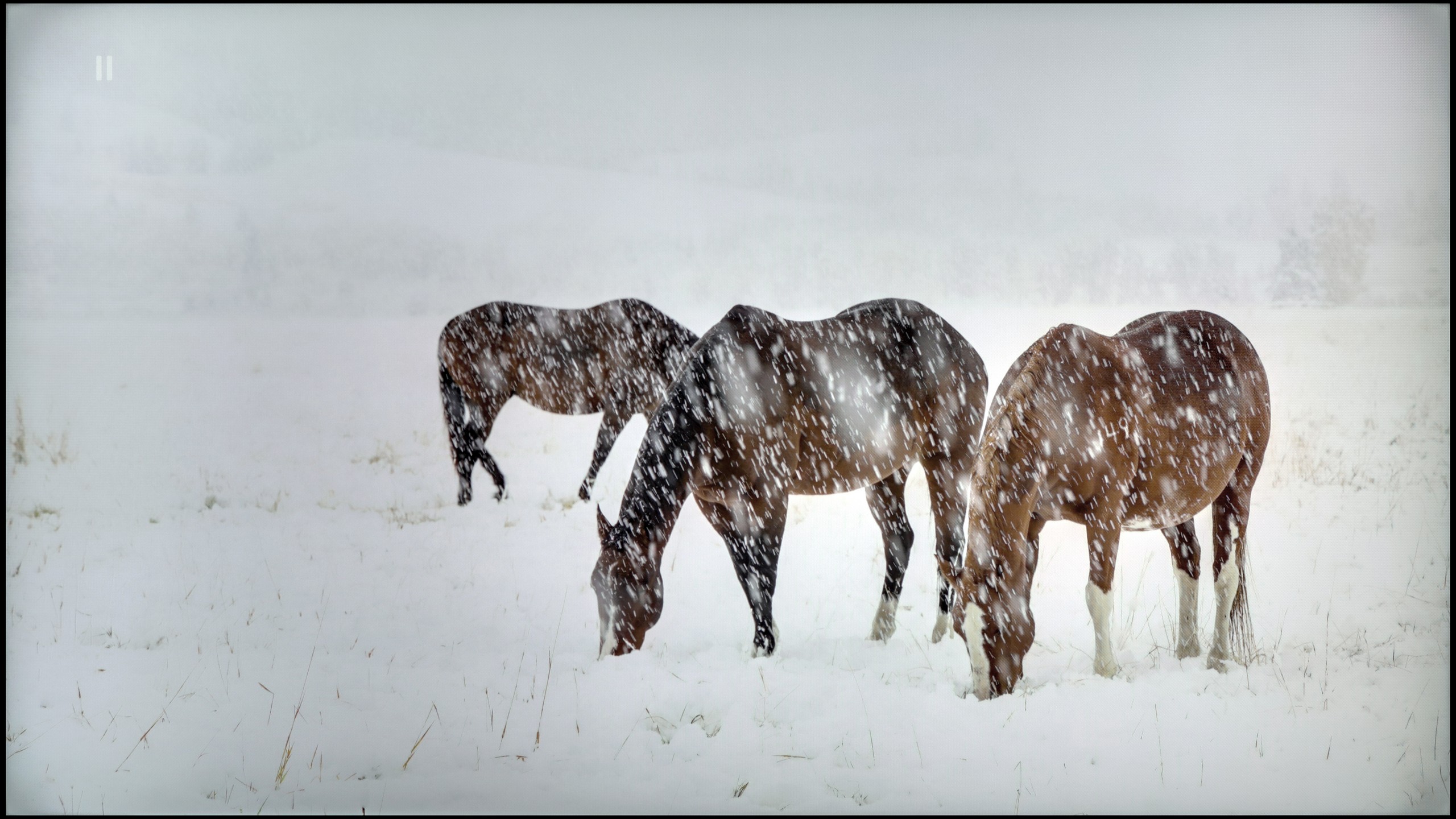
Dynamic: HDR10+
Dynamic: Dolby Vision


HDR luminance chart:
TCL C7K / QM7K
Luminancja HDR
Luminance of RGB colors
Samsung Neo QLED QN70F / QN74F / QN77F
Luminancja HDR
Luminance of RGB colors
QN70F is a television that can positively surprise when it comes to brightness. In ideal testing conditions, it reaches even 800 nits, which – for this price range – is a really solid value. Of course, that’s a result from test patterns, so we decided to check how it performs in practice, on real films. Here, the television somewhat tempers its capabilities. In most of the tested scenes – e.g. in "The Meg" – the actual HDR brightness remained around 500 nits. That’s still a decent result, allowing you to enjoy HDR effects, although it’s far from perfection. On the other hand, we have a QLED screen with a quantum dot layer, which means very good colour reproduction capabilities. Colours are vivid and saturated. QN70F covers about 94% of the DCI-P3 colour space, and in the wider BT.2020 palette, it exceeds 75%, so in this respect, there’s nothing to be ashamed of.
TCL C7K is one of the brightest MiniLED TVs in its price class. Under optimal testing conditions, the screen can achieve over 1200 nits, resulting in impressive, at times dazzlingly bright scenes. And most importantly – this isn’t just a theory from measurements. In practice, even the brightest moments in movies can shine with true cinematic grandeur. Home HDR cinema fans should be really pleased.
The impression is fantastic, especially in scenes with large areas of brightness – a white sky, explosions, sun reflections, or magical sunsets can surprise with an intensity of light that rarely appears in this price range.
However, things get a bit worse when more challenging scenarios appear on the screen, previously described in terms of contrast – that is, images full of details, with small bright elements on a dark background. In such cases, the C7K often opts to preserve black at the expense of brightness. An example? Scenes from movies like Sicario 2 or Life of Pi, where small light sources (like a distant lantern) may become less visible, and details in the lights are simply dimmed or blend into the background.
For many viewers, this may be an acceptable compromise – as we achieve deep blacks and pleasant image depth. Nevertheless, it’s important to recognise that the visibility of small details in bright areas is not this model's strong suit. It’s simply a technological limitation that still exists – even with over 300 zones.
Factory color reproduction
7/10
6/10


Factory Mode
After calibration
We tested the QN70F in the best default picture mode, which is Filmmaker Mode. And it must be admitted that in this particular test unit, the factory settings performed quite well. The picture was calm, natural, and despite slight deviations – pleasant to watch. The biggest error was a slight dominance of red in the white balance, which caused a slight pinkish tint over the entire scene. However, it wasn't a glaring flaw – rather subtle and only noticeable when directly compared to a properly calibrated screen. A slightly bigger issue arose in the brightness characteristics. The TV tends to lower the brightness of parts of the image that should be displayed brighter. As a result, some details can appear slightly dimmed – they don't completely disappear, but they don't stand out as clearly as they should. Nonetheless, as for a TV in this range and in these settings – we consider the result a good starting point for further calibration.
A new feature in TCL televisions for 2025 is the long-awaited Filmmaker mode, which until now has been found in most competing brands. This is great news, as this mode is considered the most faithful to the original vision of the creators and is often recommended by enthusiasts of quality visuals. Unfortunately – as is often the case – the mere presence of it does not guarantee perfection. The Filmmaker mode in the TCL C7K is not without its faults. There are issues with inaccurate white balance, particularly a slight blue tint that resulted in cool, somewhat greyish skin tones. But that wasn’t the biggest problem. The main complaint was excessive brightness exposure, which is clearly visible on gamma and EOTF charts. The image was simply too bright, at times even blown out, which affected not only the texture of scenes but also the overall viewing experience. Some details were just lost, and the entire image looked as if someone had overdone the brightness slider. As always, we decided to see what could be squeezed out of it after calibration. And this is where things started to get really interesting…
Color reproduction after calibration
8.5/10
7.5/10
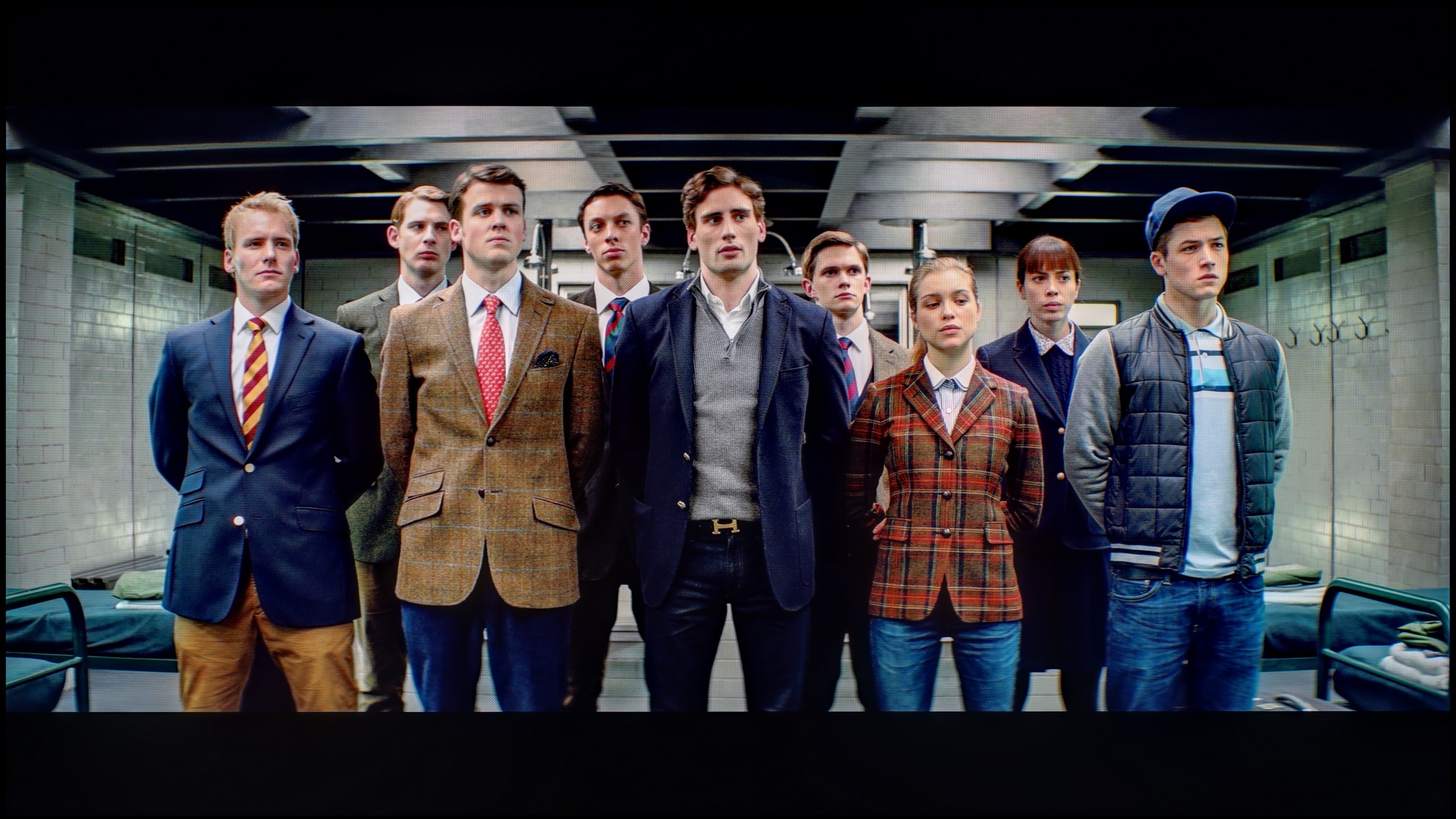
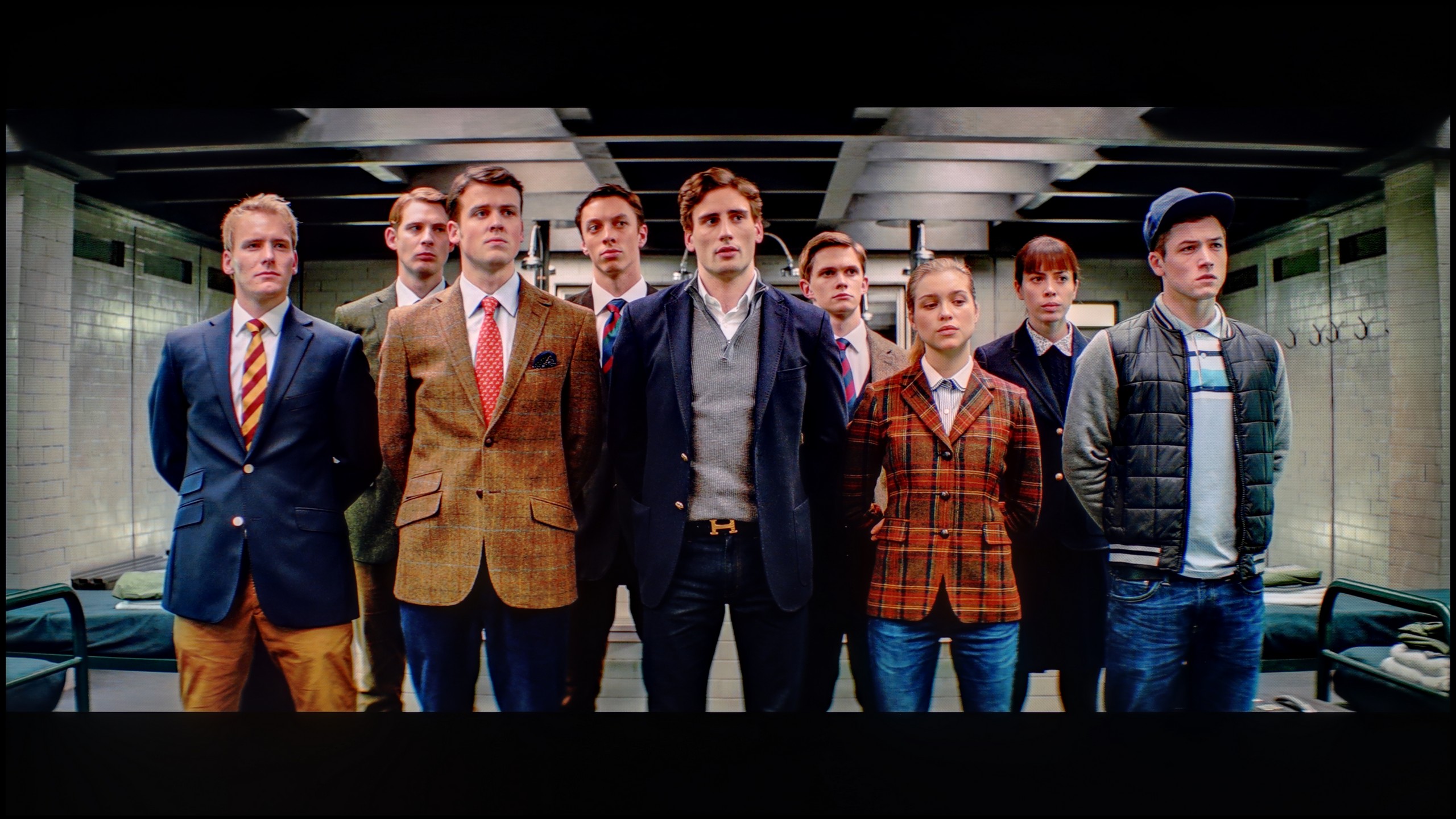
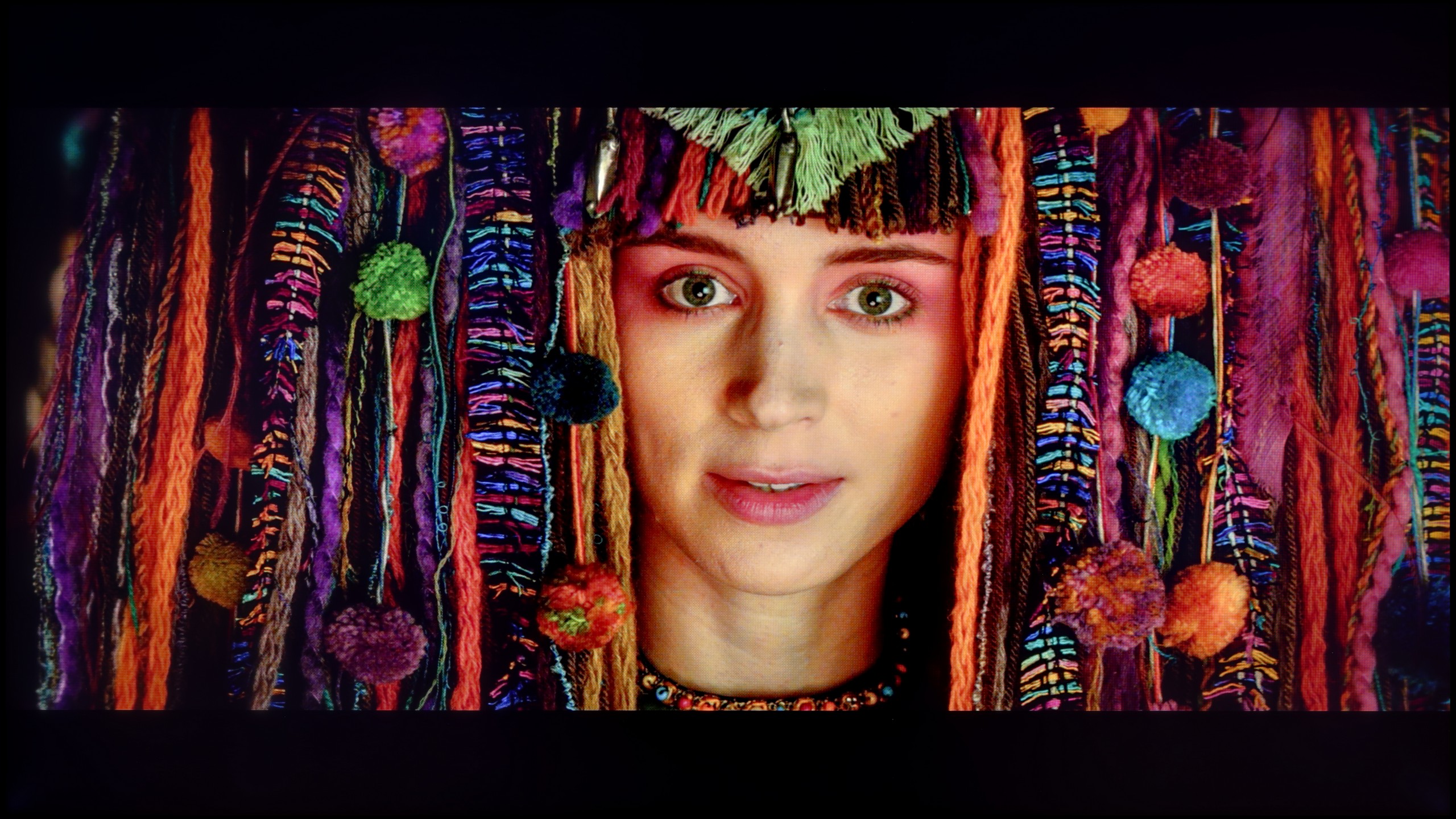
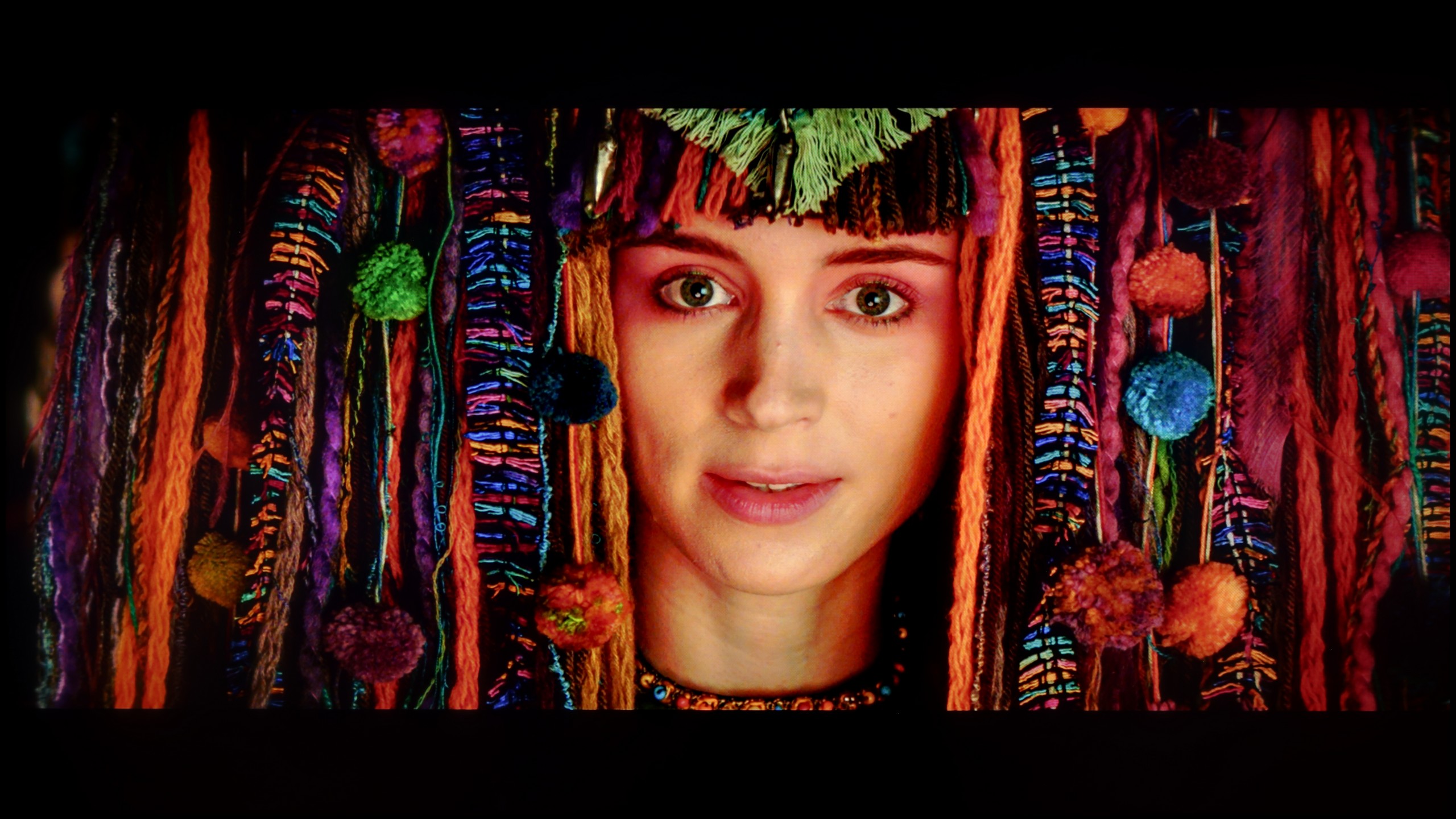
After calibration, the QN70F shows that it can offer a really high level of colour reproduction. It has managed to nearly perfectly balance the white point, and the values in the Color Checker test dropped below level 3 – that is, below the threshold at which the average eye can notice differences. The image looks natural, and the colours are faithfully reproduced, without excessive saturation or the coolness known from factory settings. It must be acknowledged that Samsung provides very extensive calibration options – not only for enthusiasts but also for professionals. The QN70F takes advantage of this potential and, after appropriate settings, can come close to significantly more expensive models in terms of colour accuracy. The only thing that could still be picked on is the brightness characteristic. There is still a tendency to brighten the smallest sections of the image – particularly those that should remain darker. However, this is a design feature of this model, not a calibration error. Despite this, the final result definitely deserves recognition.
After calibration, the TCL C7K showed itself in a really good light, especially when it comes to SDR content. We managed to precisely tune the white balance, colour gamut, and brightness characteristics so that the colour errors on the ColorChecker palette fell below a value of 2. For the uninitiated – this is nearly a perfect result, which means that the image is very close to what the creators intended. Unfortunately, it was a different story with 4K HDR content. While we were able to slightly calm down the white balance and correct its earlier errors, it was still evident that the TV has some "MiniLED traits", particularly in brightness management. When we checked how the C7K handled the EOTF curve on real film scenes, rather than just on synthetic test patterns, it turned out that the screen still had a tendency to slightly brighten the entire image. This affects the overall experience – the black loses some depth, and the image becomes less contrasty than it should be. Despite these minor issues with HDR content, the overall reception of materials – especially in SDR – is really very good. After calibration, the C7K can display an image that can successfully compete with much more expensive models. Good colour tuning, natural skin tones, and pleasant brightness make movie watching and everyday content viewing more than satisfactory.
Smoothness of tonal transitions
8/10
8.6/10
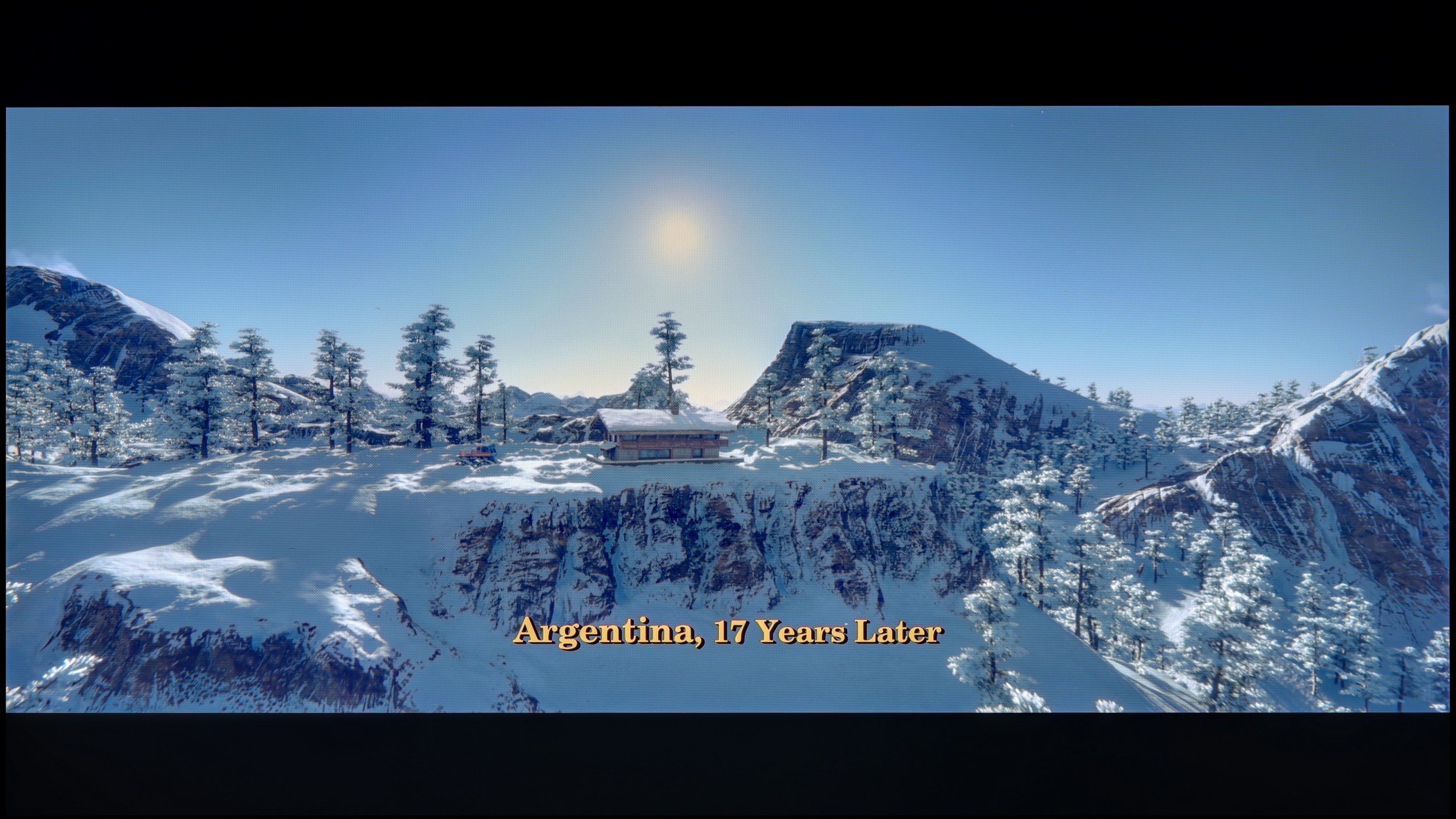

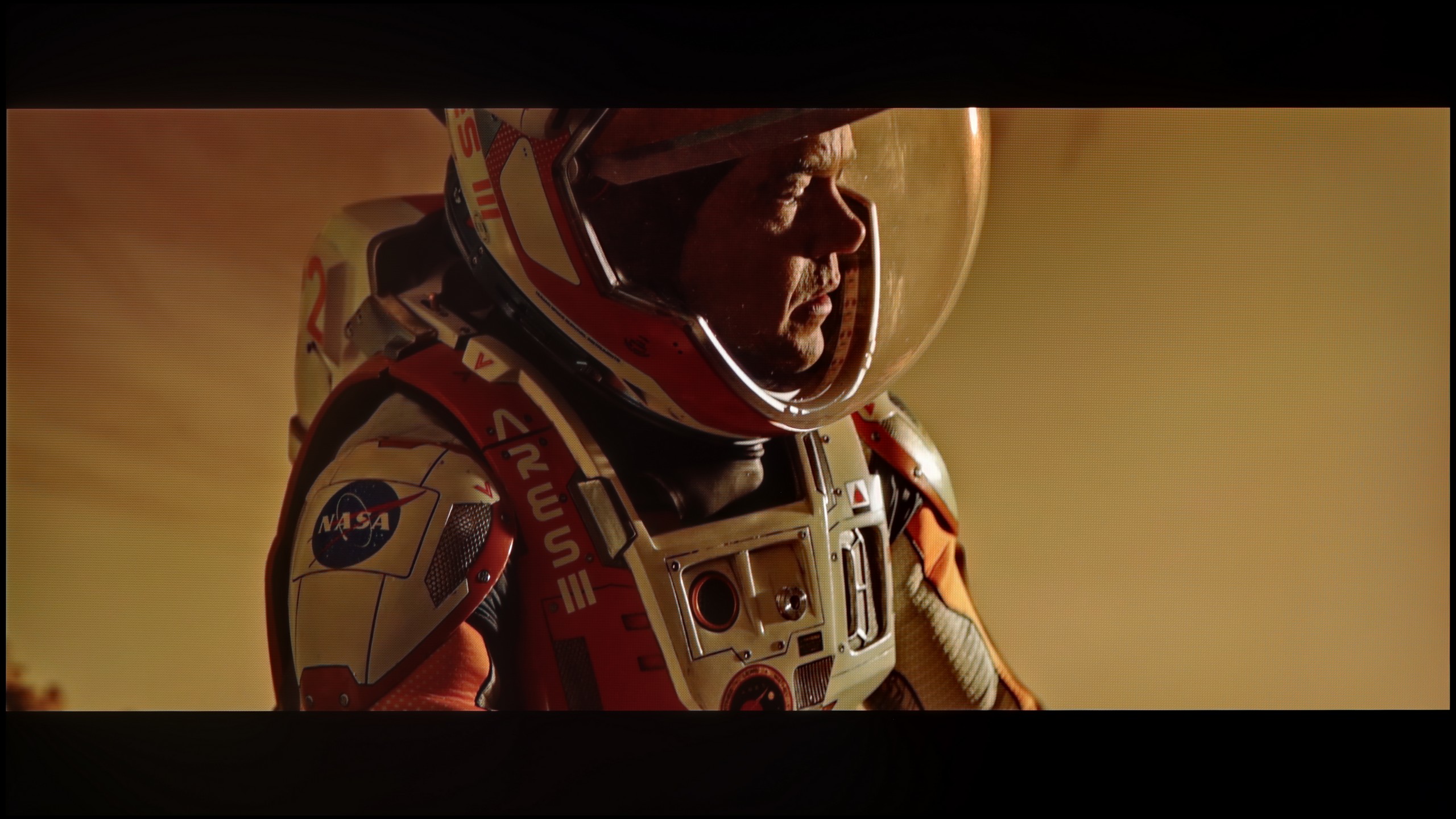
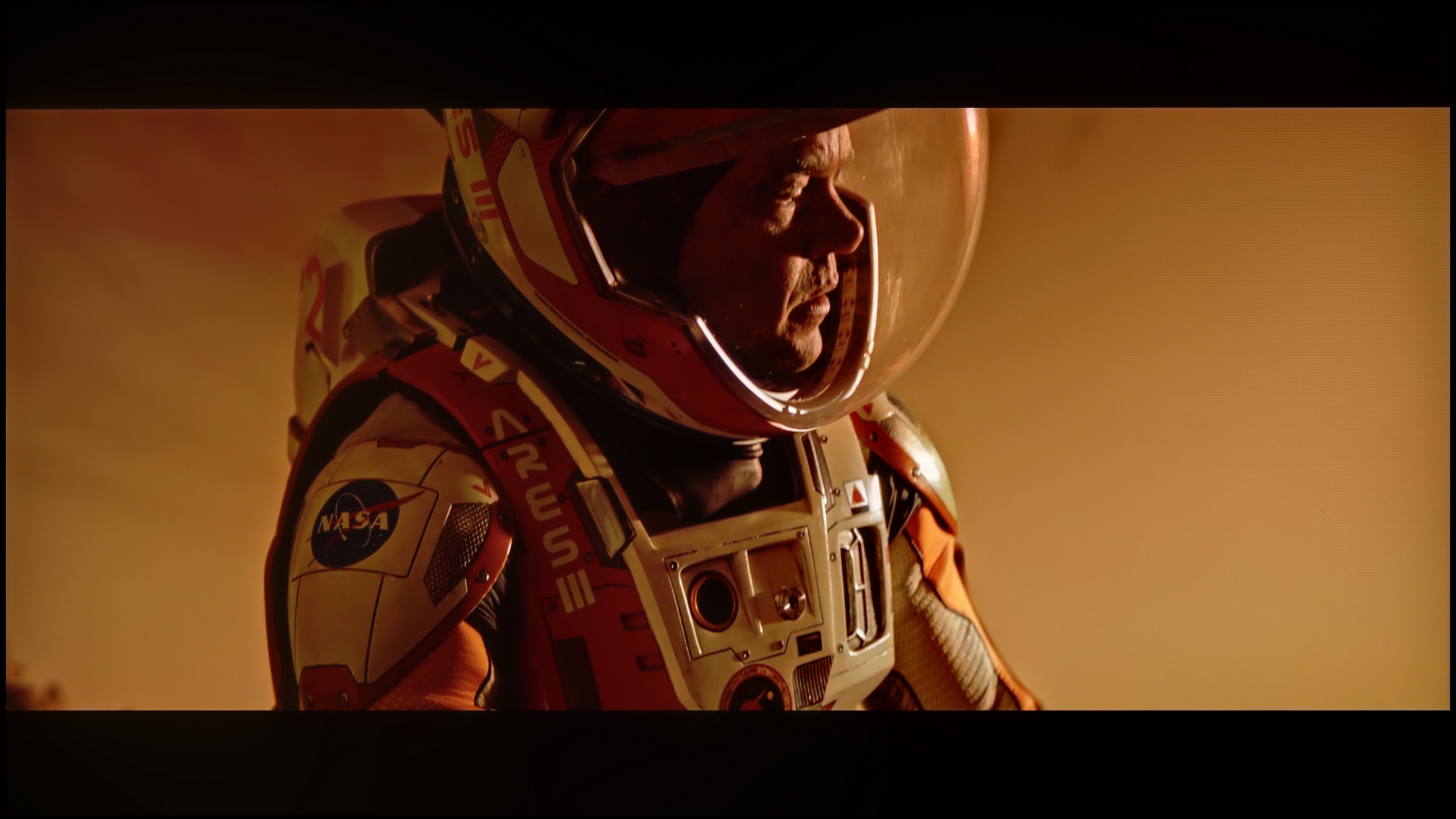



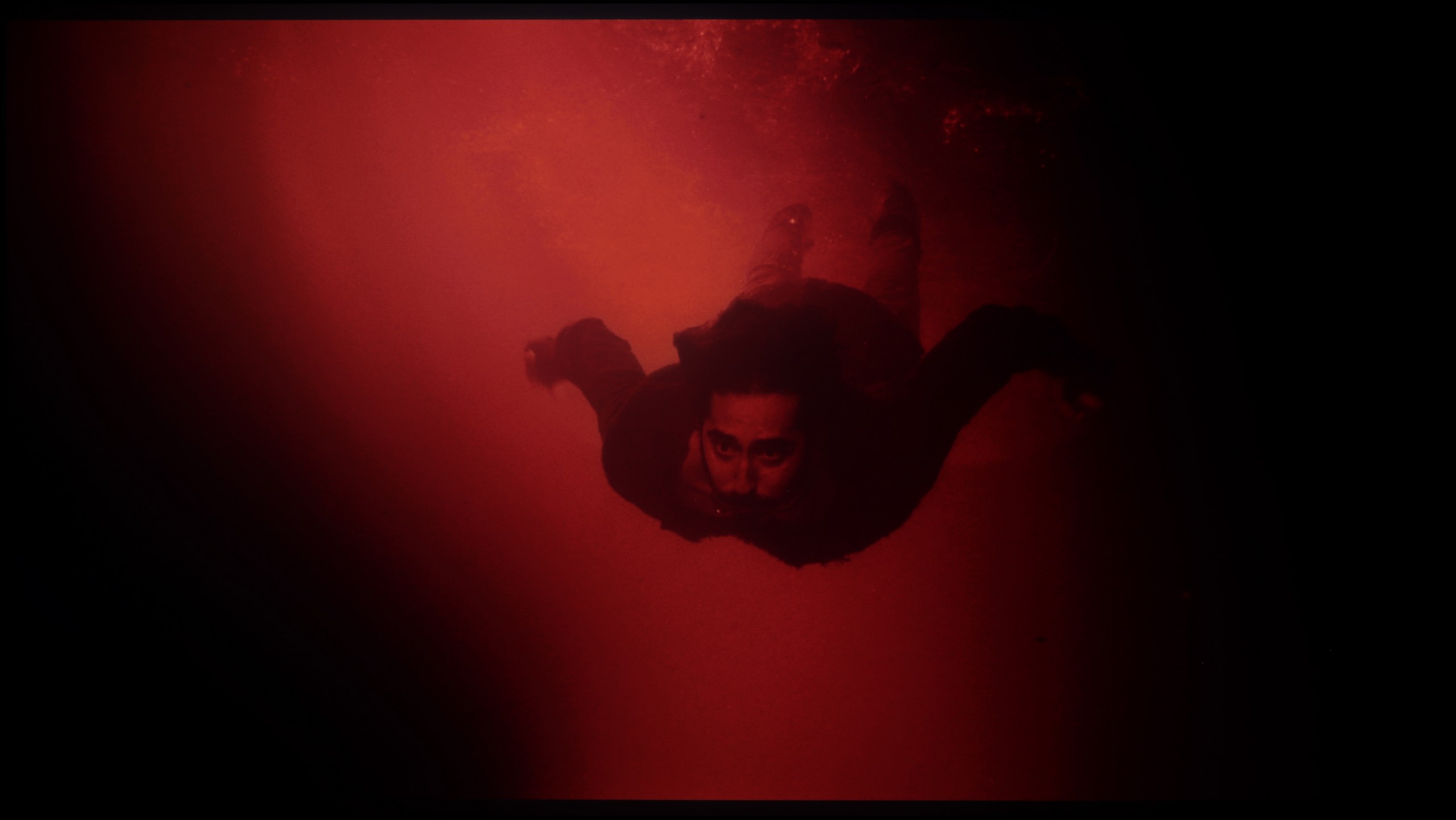




In terms of the smoothness of tonal transitions, the QN70F performs really well. Gradients are smooth, and colours blend into each other without distinct thresholds or banding. Even in more challenging movie scenes – particularly those that are very dark – any potential imperfections are minimal, and you really have to pay attention to notice them. In everyday viewing, most users should not encounter any issues with colour blending. The picture looks clean and cohesive, without artificial smoothing or distortions. This is another aspect in which the QN70F impresses positively.
The TCL C7K performs very well with colour gradation – in most of the scenes tested, tonal transitions were smooth, and colours blended together without visible outlines or the artificial effect of "blotches". In everyday use, it's hard to find any faults – the picture looks natural, without jarring transitions or digital artifacts. Certain limitations only appear in very dark tones – especially in a heavily muted grey palette, where the television may struggle to reproduce the ideal gradation. But that’s absolutely understandable, as even many significantly more expensive models in this range simply can't cope. Fortunately, these situations are rare and don’t really affect the overall perception.
Image scaling and smoothness of tonal transitions
6.9/10
5.5/10
Smooth transition function
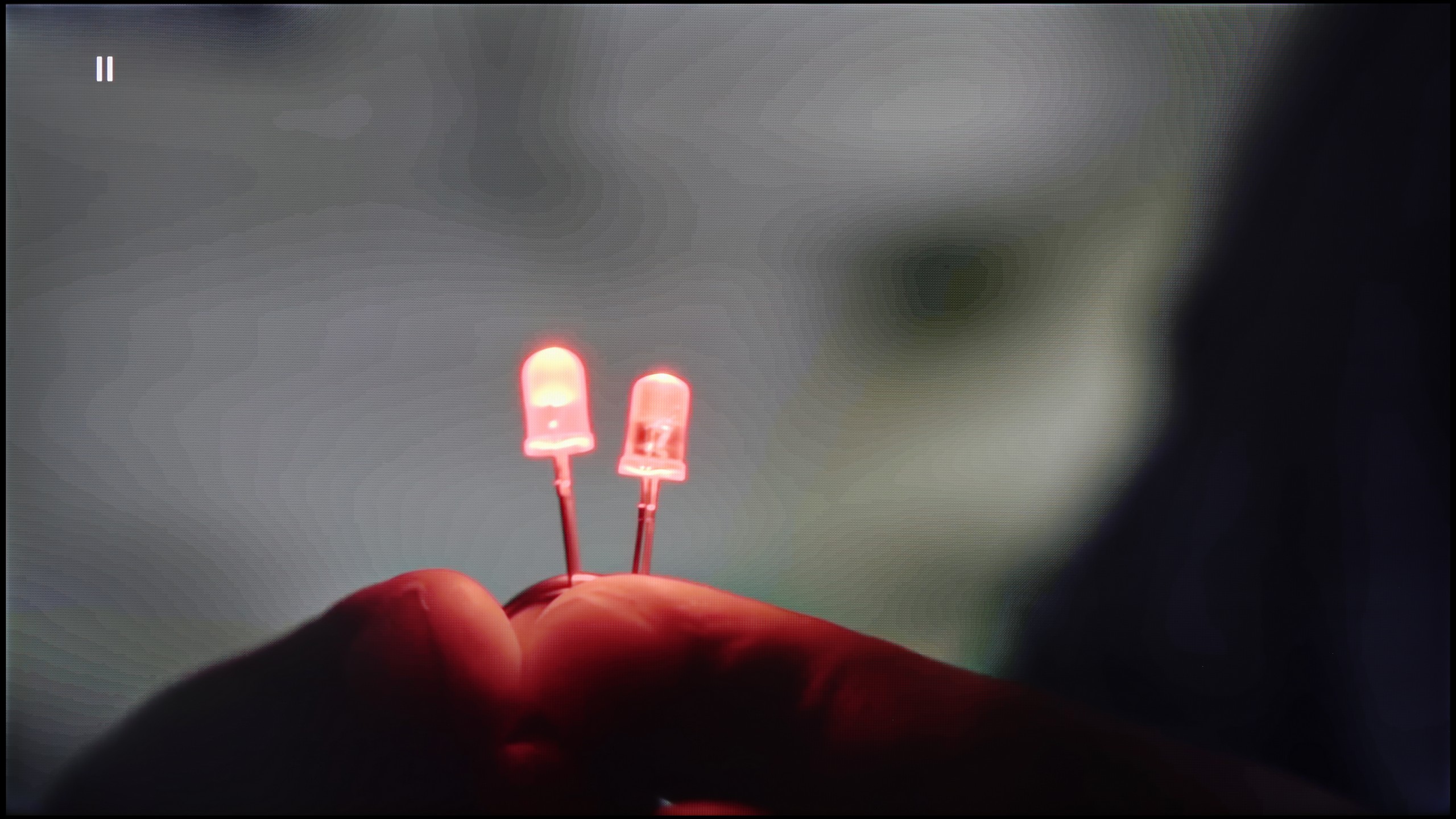

Image without overscan on the SD signal
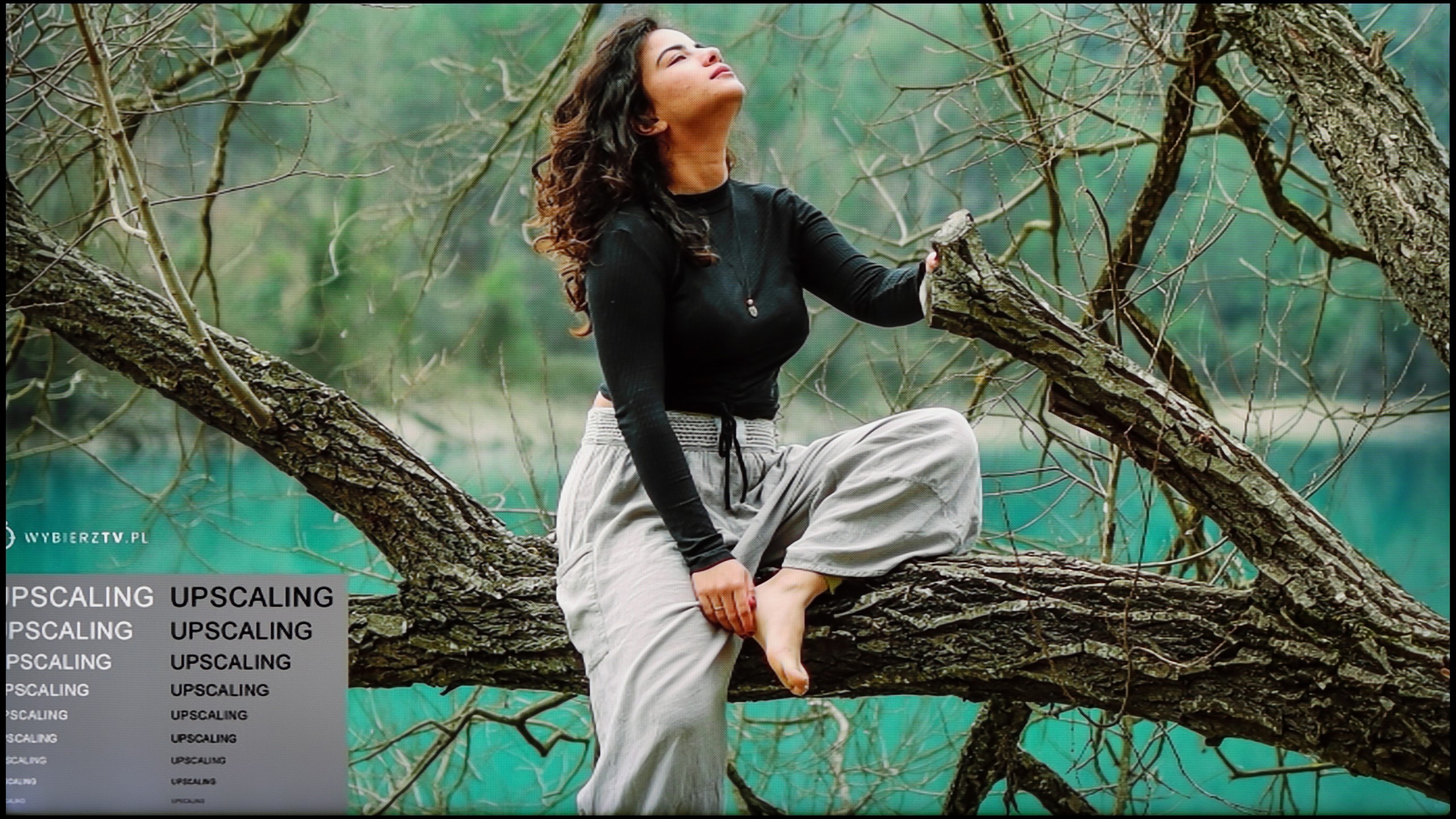

Samsung QN70F offers a distortion reduction feature that improves the smoothness of tonal transitions. In "Standard" mode, it works quite well – smoothing out problematic transitions without significantly interfering with the structure of the image. Film grain is partially removed, but details like texture and skin structure remain visible. "High" mode operates much more aggressively. The smoothing is stronger, but at the cost of a noticeable loss of detail. Therefore, in practice, we recommend sticking with the "Standard" setting or turning off this feature altogether. The improvement in gradation may be less spectacular, but the image retains more naturalness.
When it comes to upscaling low-quality content, the QN70F performs very well. Tests with lower resolution images went really well. Despite some slight aliasing of contours, everything looks clean and clear, even if the original content was very poor quality. It's just a pity that the television has an overscan issue that cannot be completely turned off. As a result, images with very low resolution may be slightly cropped, which is mainly noticeable on subtitles or the interface.
TCL C7K has a feature that, according to the manufacturer, is meant to smooth out undesirable colour transitions – something like a rescue for less successful tonal shifts. It's called "Gradual Smoothing," and... well, it sounds ambitious, but in practice, it works very poorly. Regardless of whether we set it to low or high, the difference is minimal. Worse still – the feature can cut out elements from the image that should remain. Fortunately, film grain remains untouched, so at least it doesn't smooth everything indiscriminately, but even so – it's better to simply turn this option off.
When it comes to upscaling lower resolution content, it's already better. SD and HD materials look quite decent, although at times we had the impression that the image loses sharpness and becomes too soft – as if something took away its clarity. Fortunately, with very low sources (e.g., 576p), there was no overscan effect, meaning the image wasn't artificially cropped – everything fit on the screen as it should.
Blur and motion smoothness
7.5/10
7.5/10
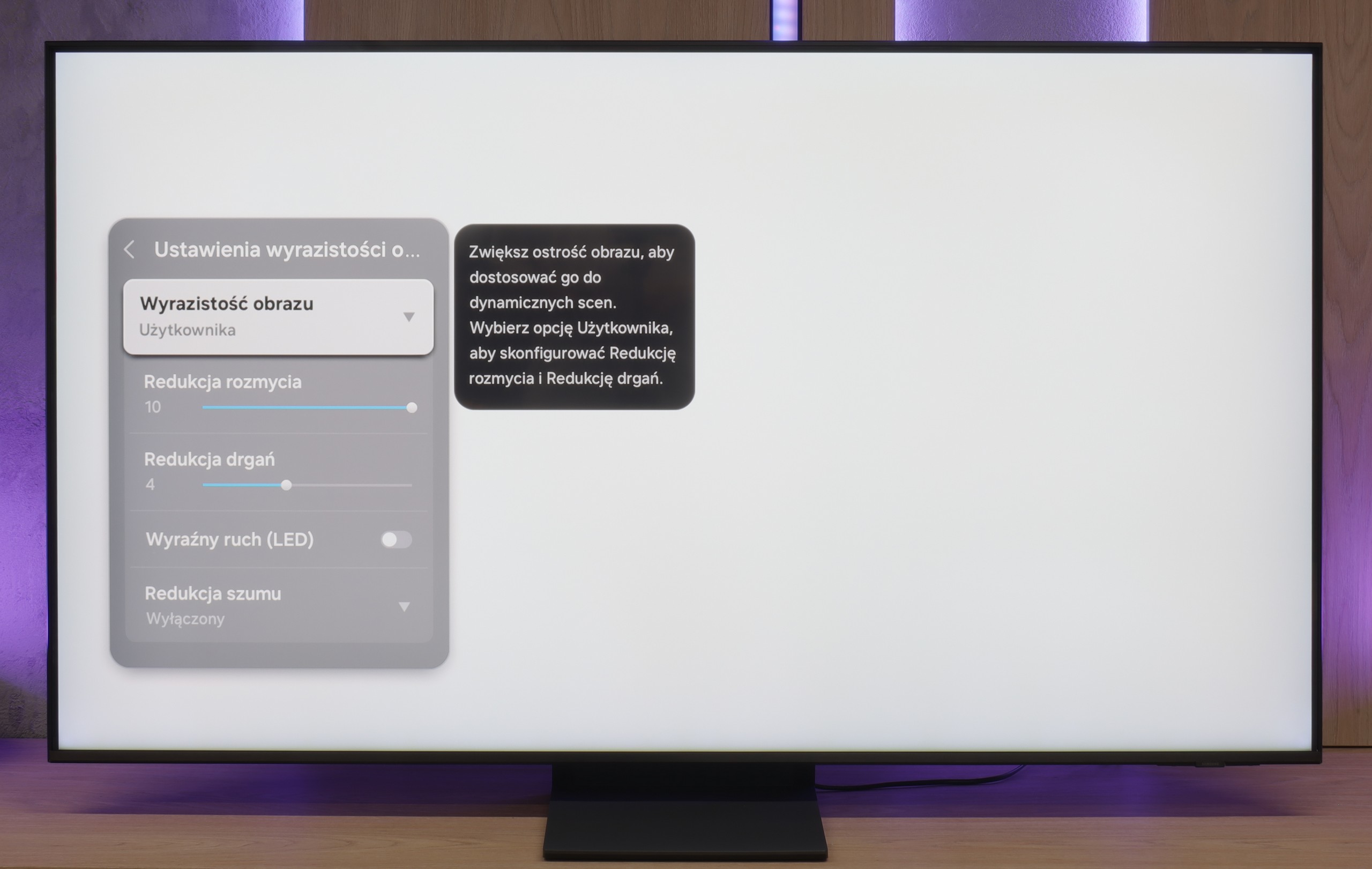
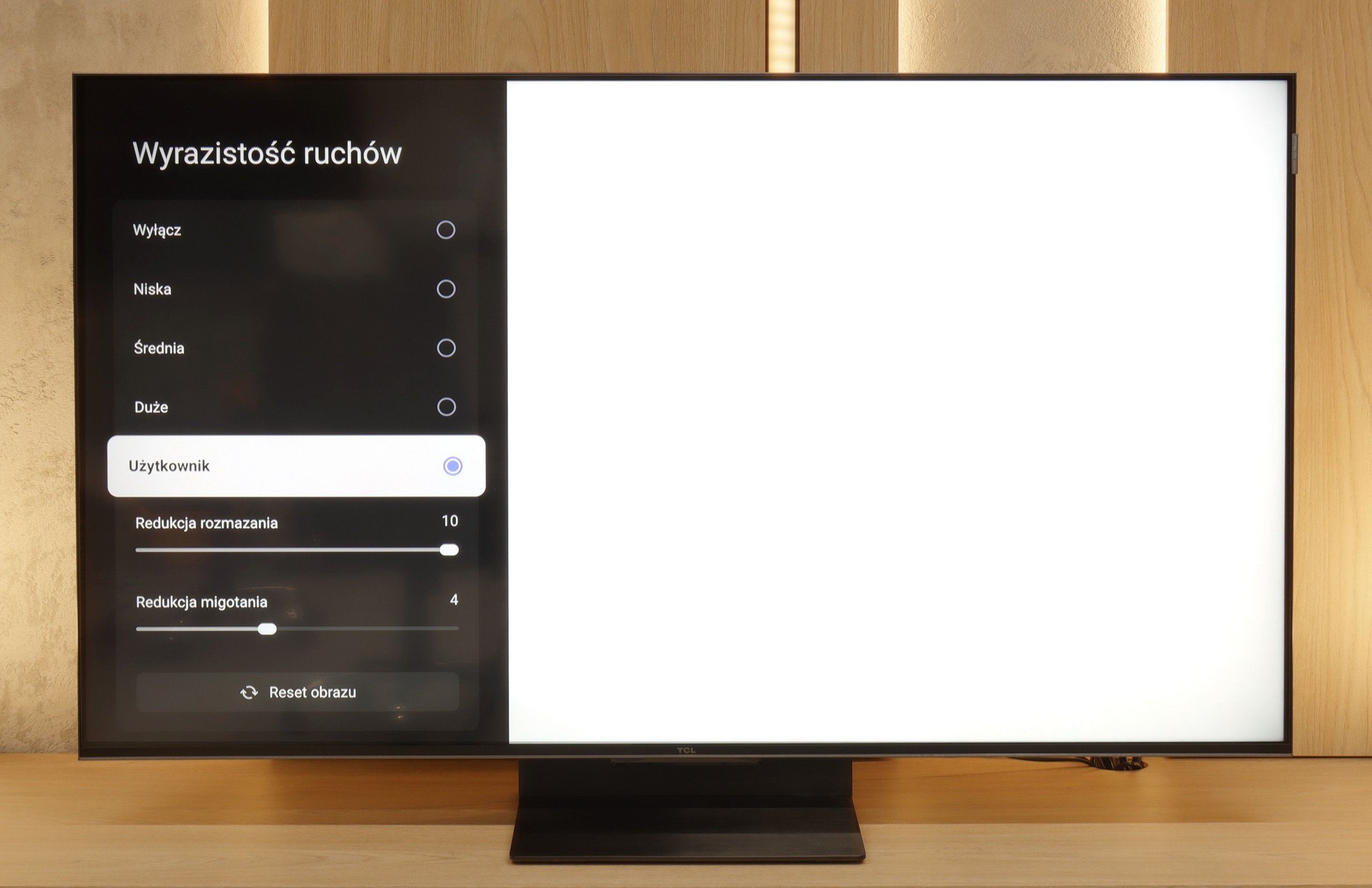
Blur (native resolution, maximum refresh rate):
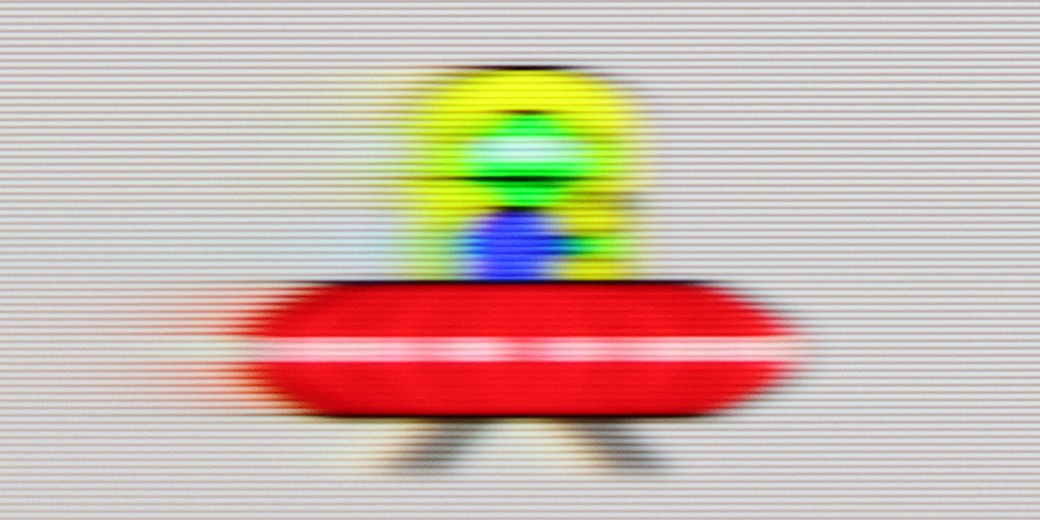
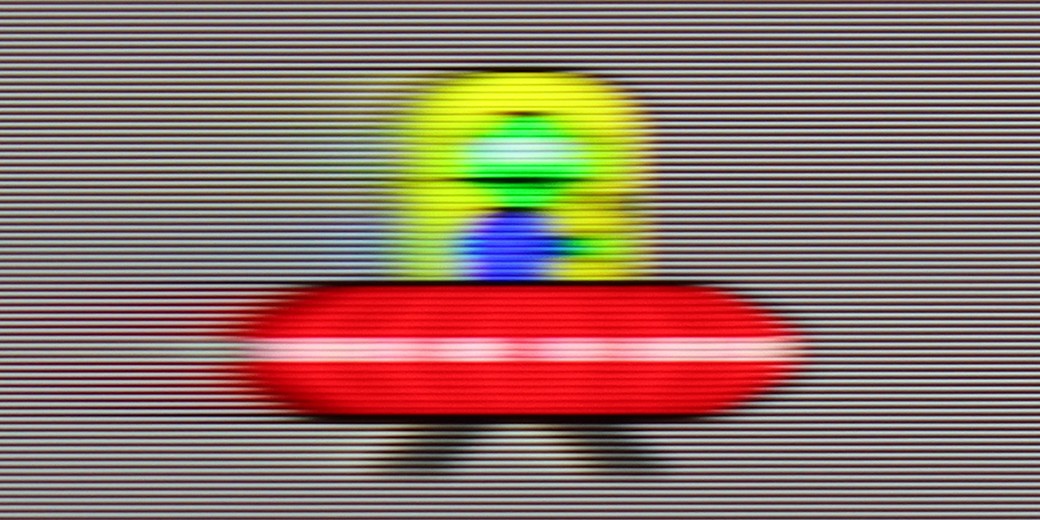
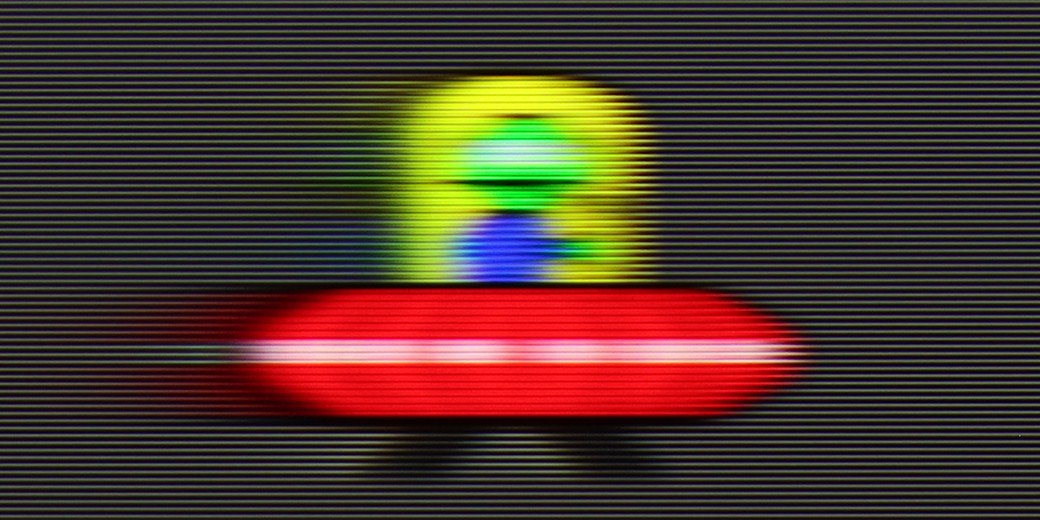
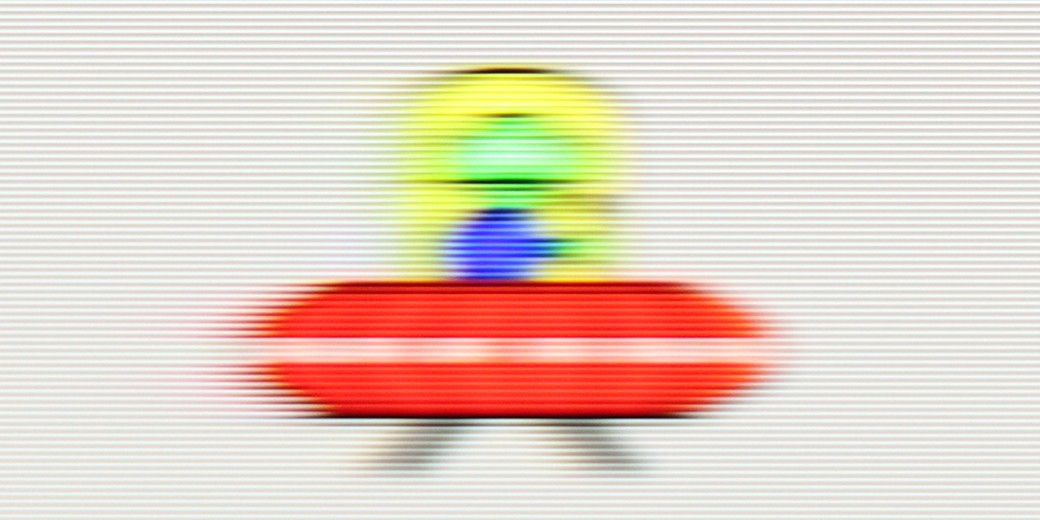
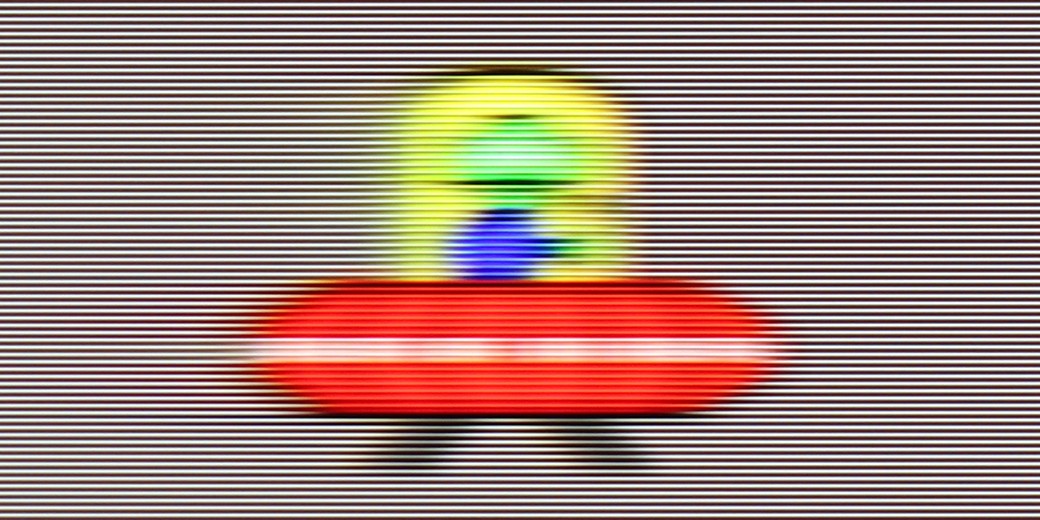
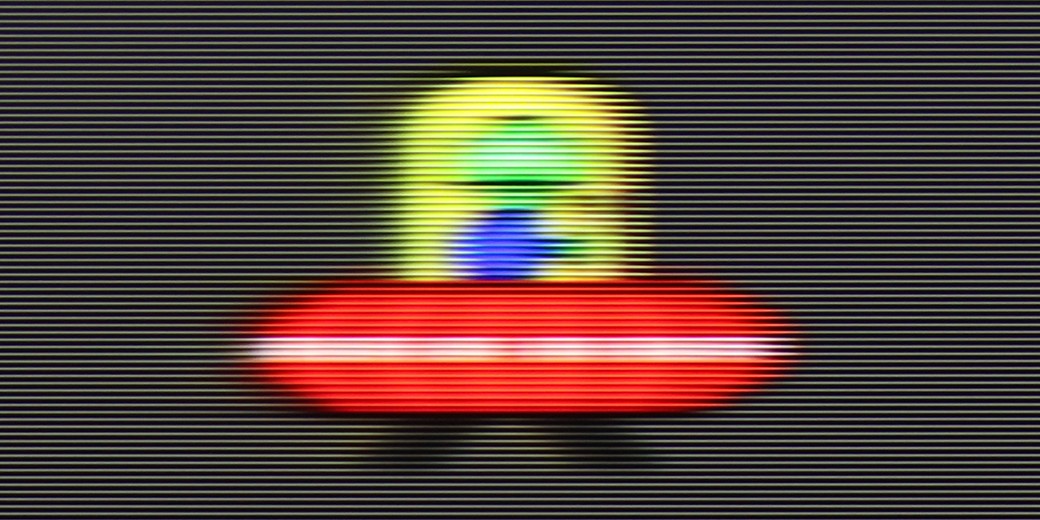
Blur (BFI function enabled):
Image flickers in this mode

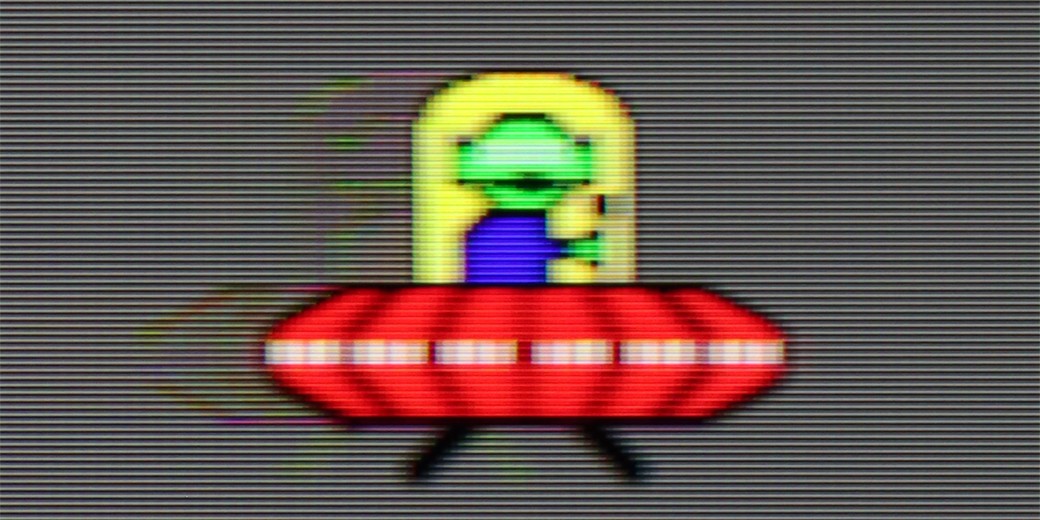




Smużenie (4K 144Hz):
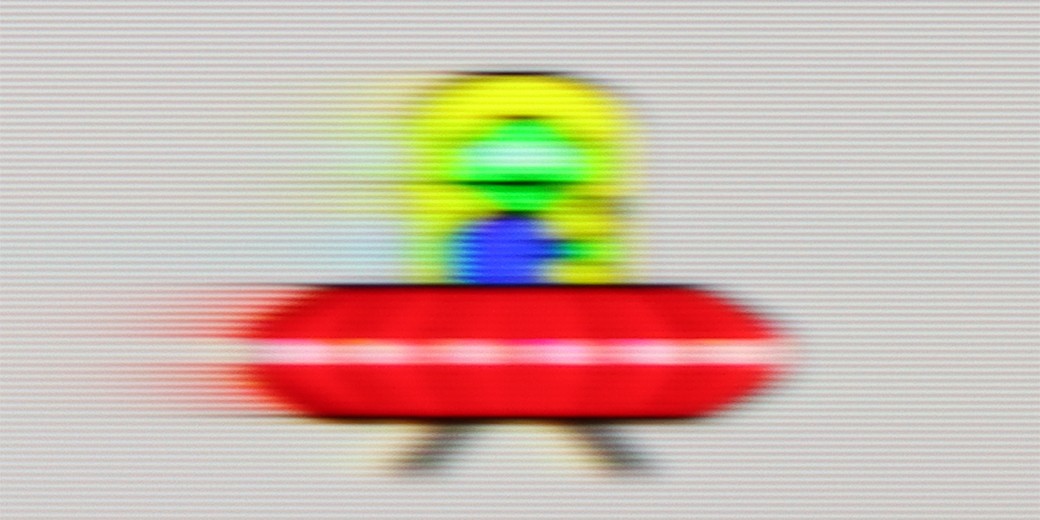
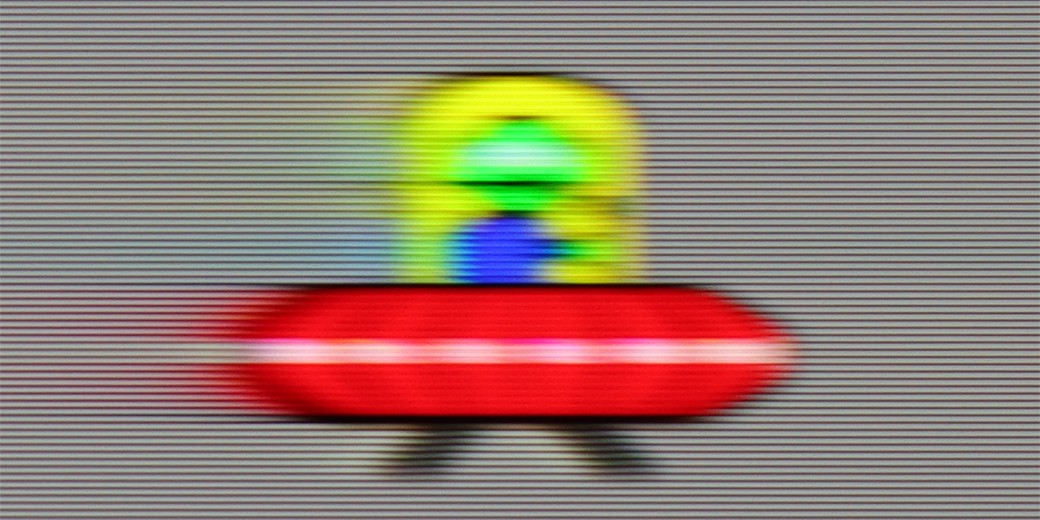
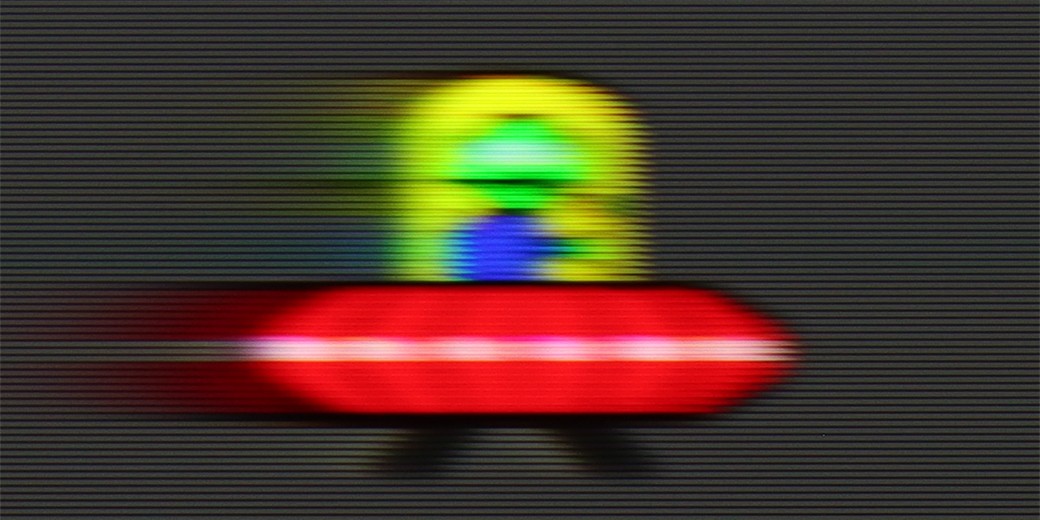
Smużenie (4K 144Hz):

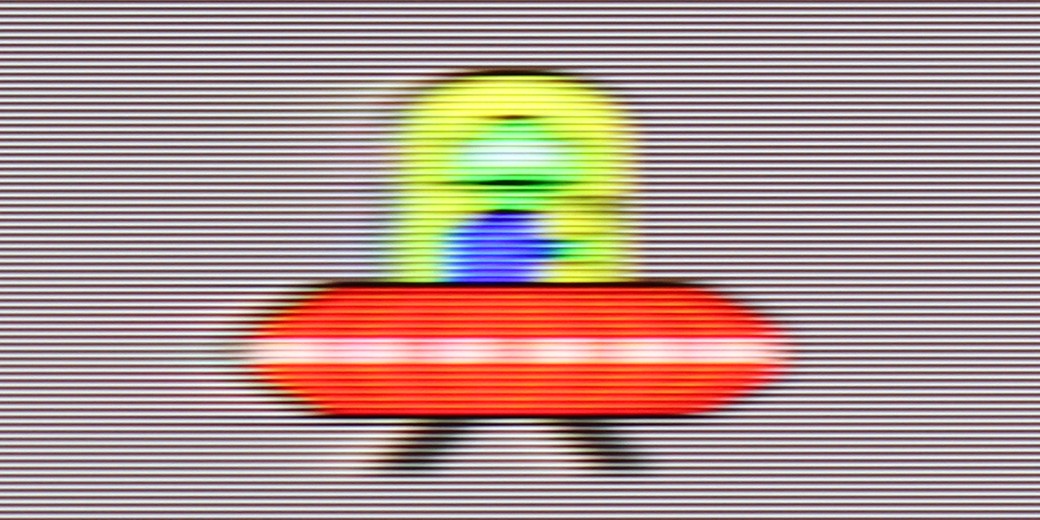
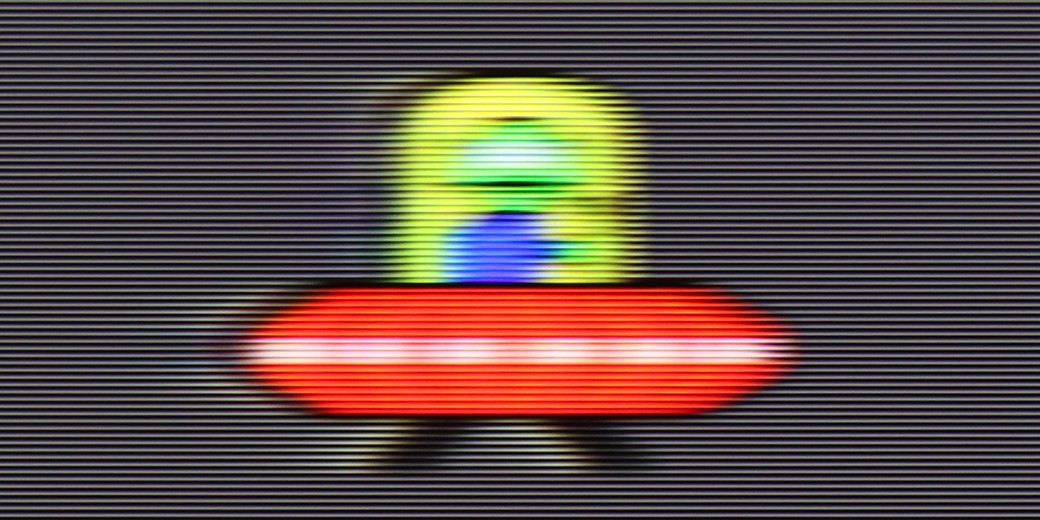
The QN70F is a television with a refresh rate of 144 Hz, which in itself places it among the best when it comes to image smoothness. Whether we're watching fast-paced sports broadcasts or gaming on a console – the picture looks fantastic. There's no sense of stuttering, clipping, or the typical "judder" seen in lower-end models during fast motion. Samsung also allows you to adjust the smoothness to your own preferences. In the picture clarity settings, we find options such as motion blur reduction and judder reduction – each of which can be adjusted independently. This is especially useful when we are watching content with a lower frame rate and want to give it a smoother, more cinematic feel – or conversely, maintain the natural filmic "feel" of 24 frames.
TCL C7K handles motion fluidity really well. The panel it uses offers a refresh rate of 144 Hz, which suggests that this TV is more than just a standard "60 Hz" panel. Furthermore, if we connect the C7K to a computer and set the resolution to Full HD. But we will write more about this in the paragraph on gamers and PC compatibility. Returning to everyday use – both sports and movies look very good here. Thanks to the fast panel and the well-functioning motion smoother, the C7K is great for watching matches, but also for movie screenings. In the menu, we find two sliders – motion blur reduction and flicker reduction – that allow you to adjust the fluidity effect to your own preferences. At lower settings, we get a more cinematic effect, with slight judder. At higher settings – the image becomes more theatrical, fluid to the point of excess. Whatever your preference – everyone can set it their own way.
Console compatibility and gaming features
8.2/10
9.8/10
- ALLM
- VRR
- VRR range48 - 144Hz48 - 144Hz
- Dolby Vision Game Mode
- Correct implementation of HGIG
- 1080p@120Hz
- 1440p@120Hz
- 4K@120Hz
- Game bar
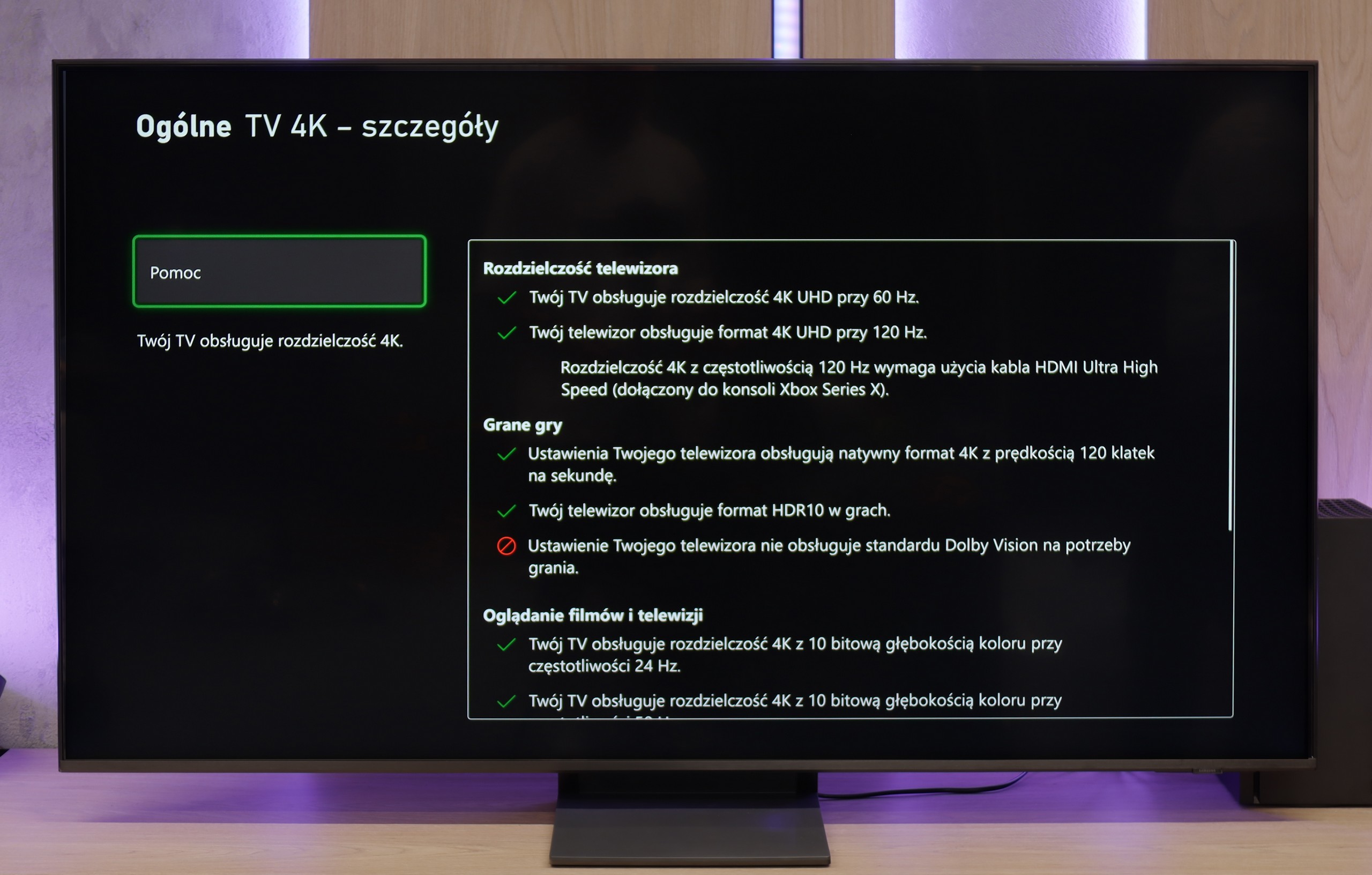
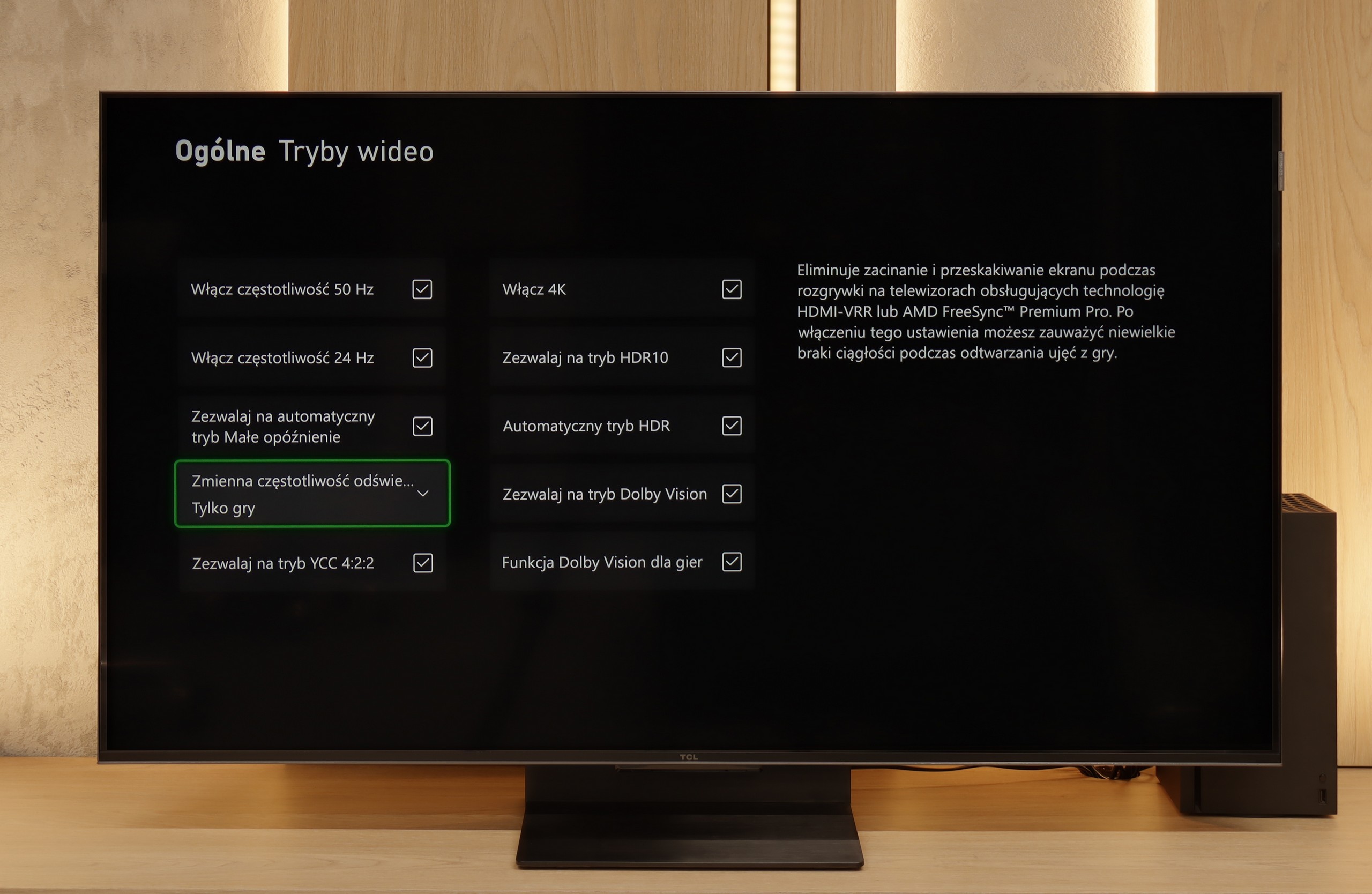
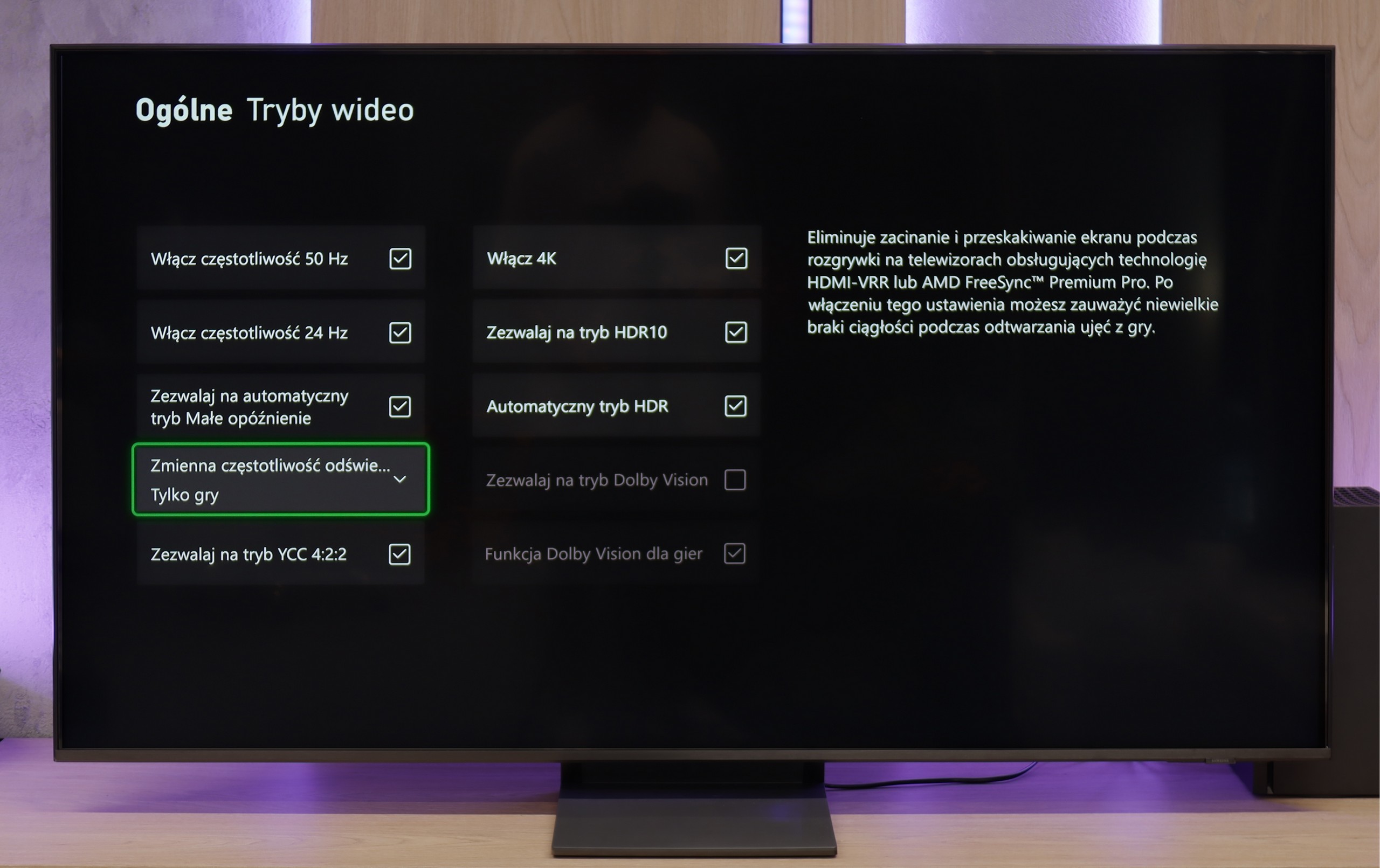
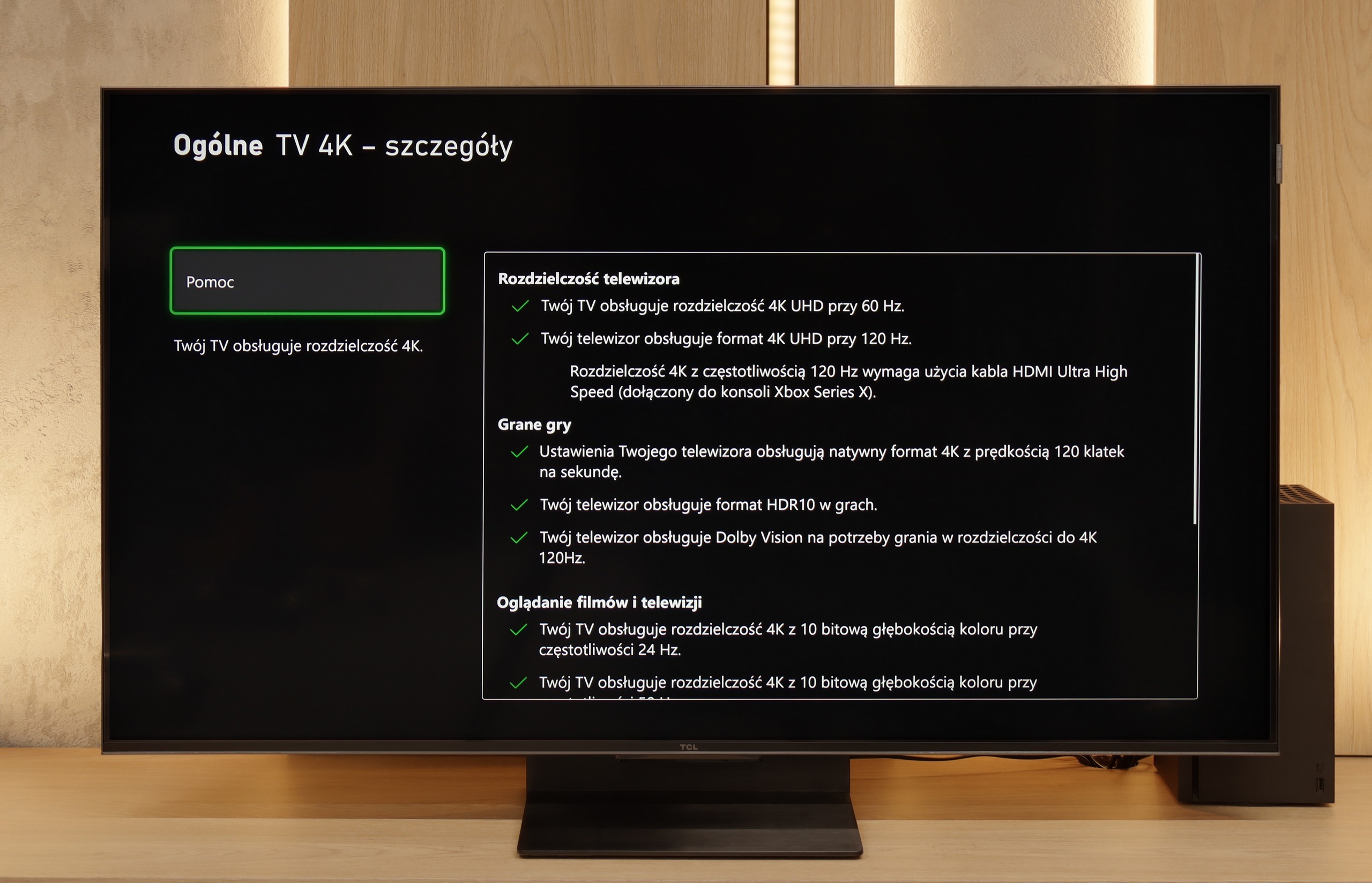
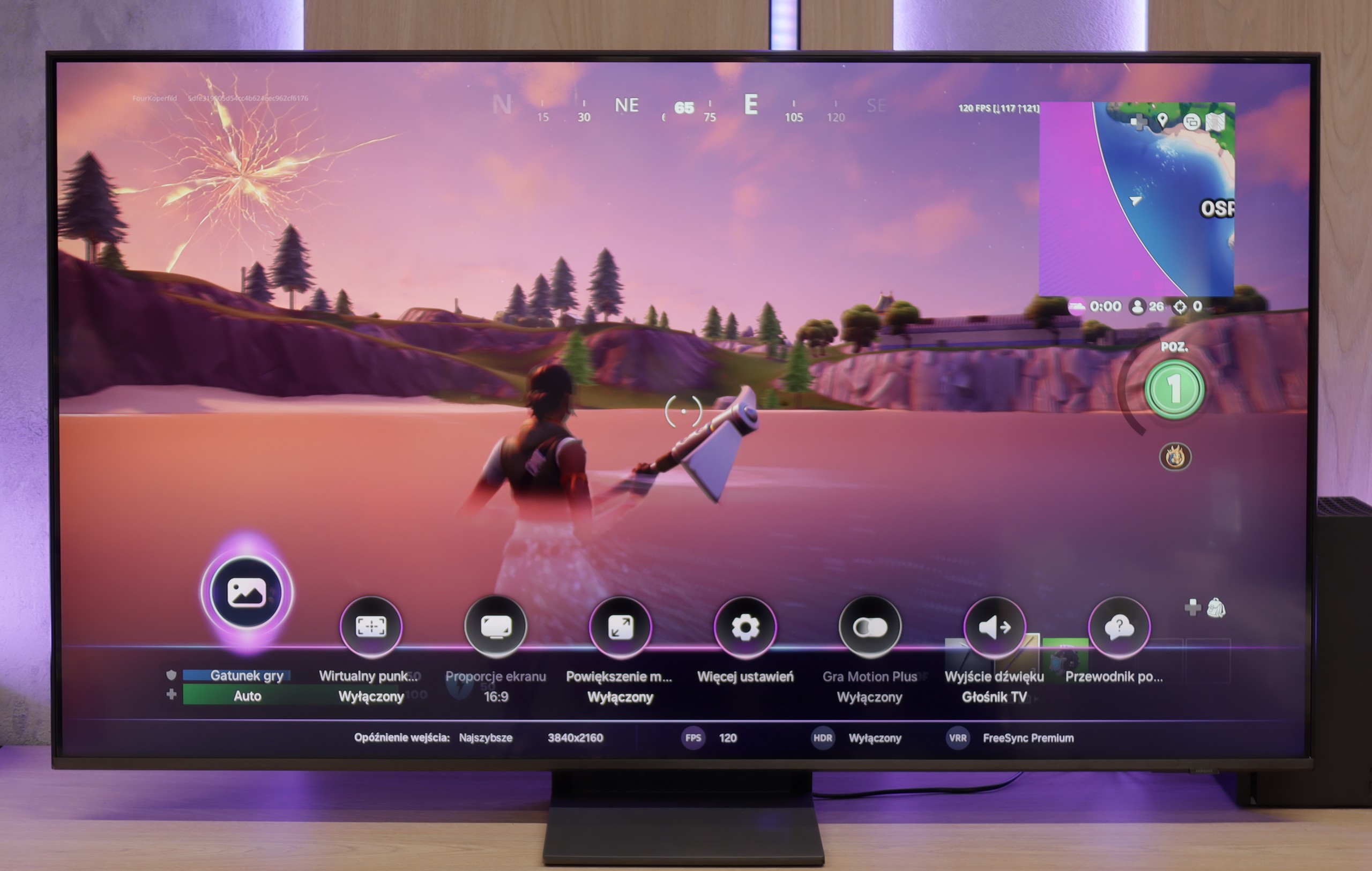
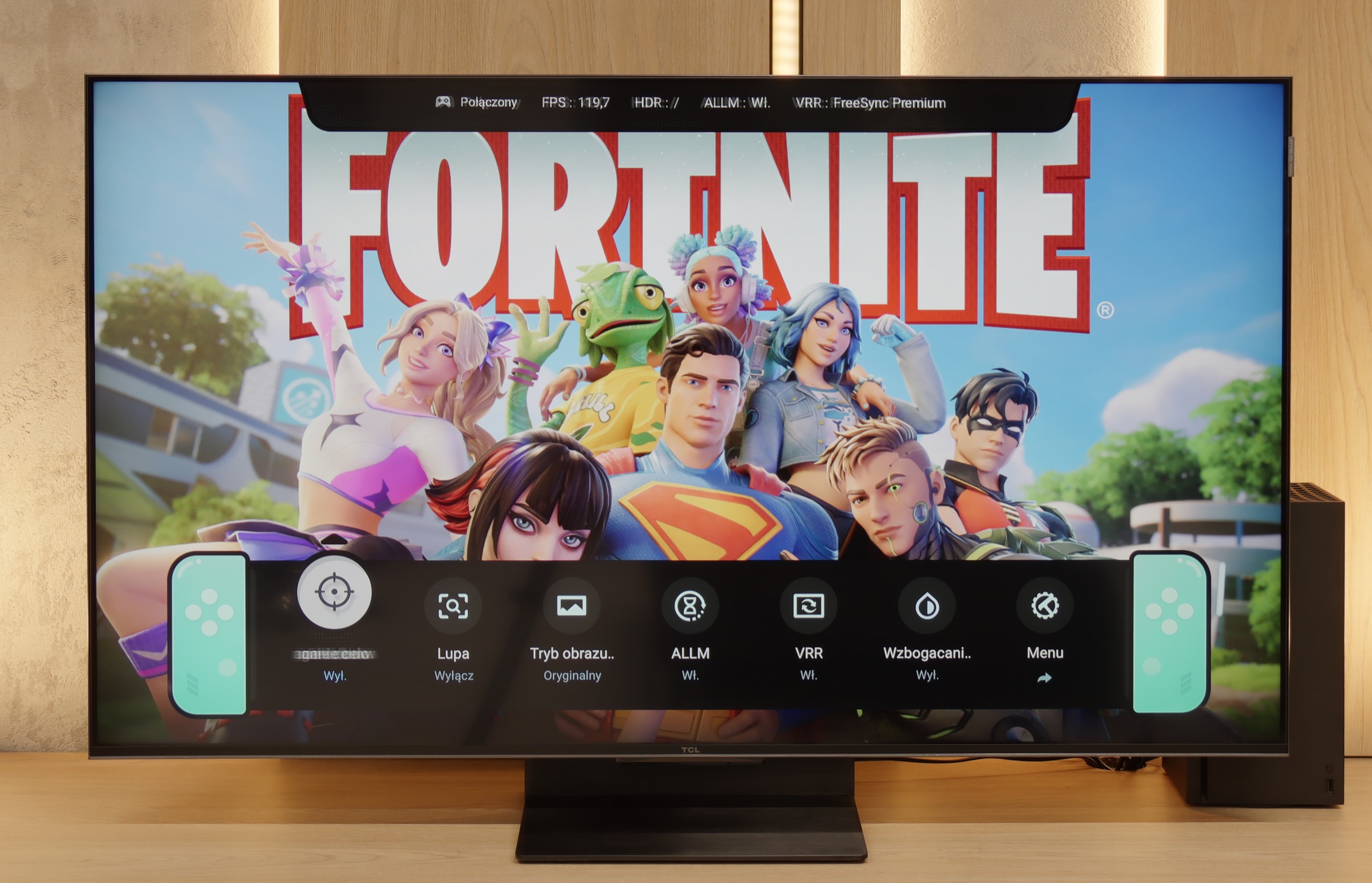
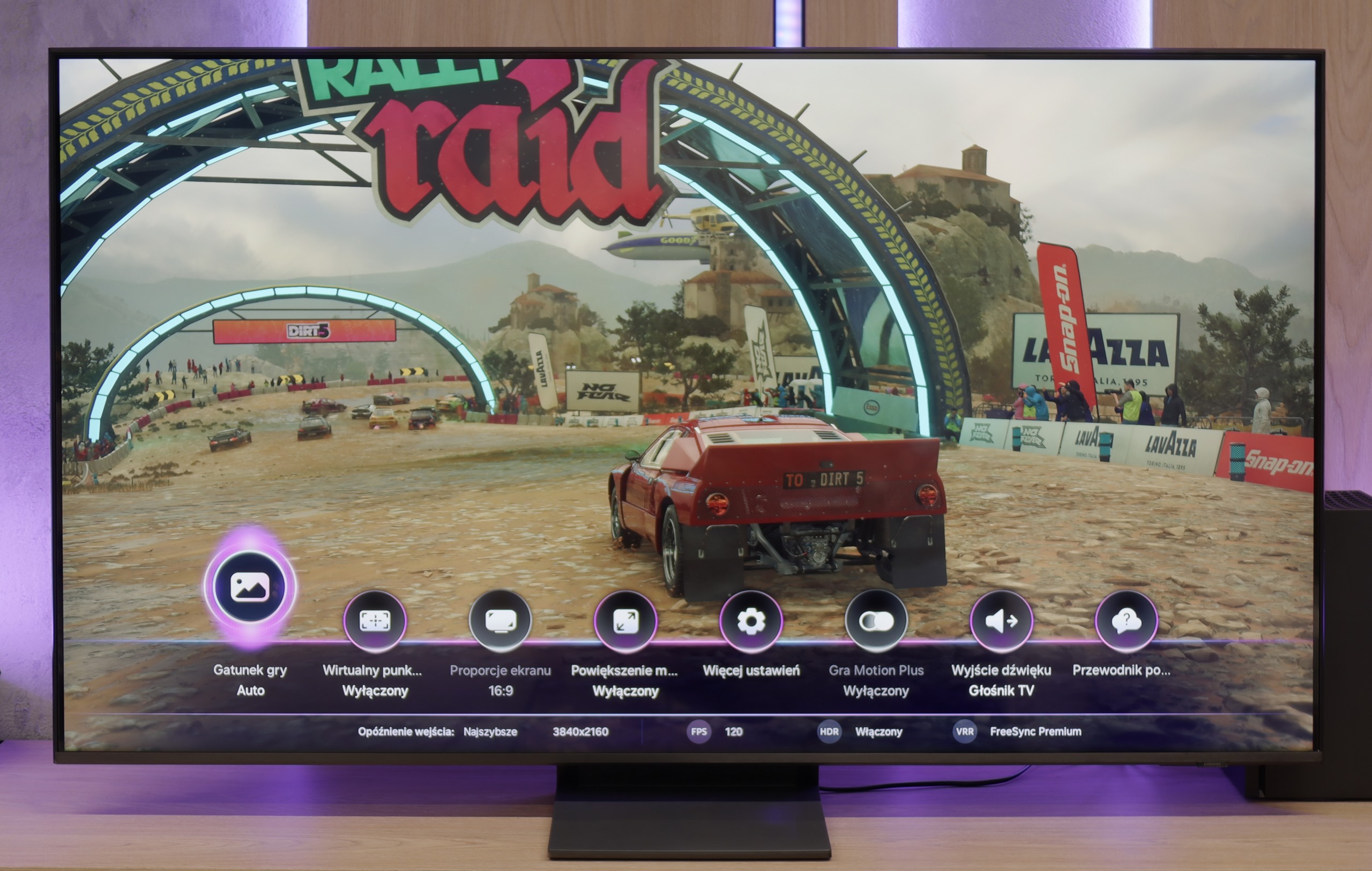
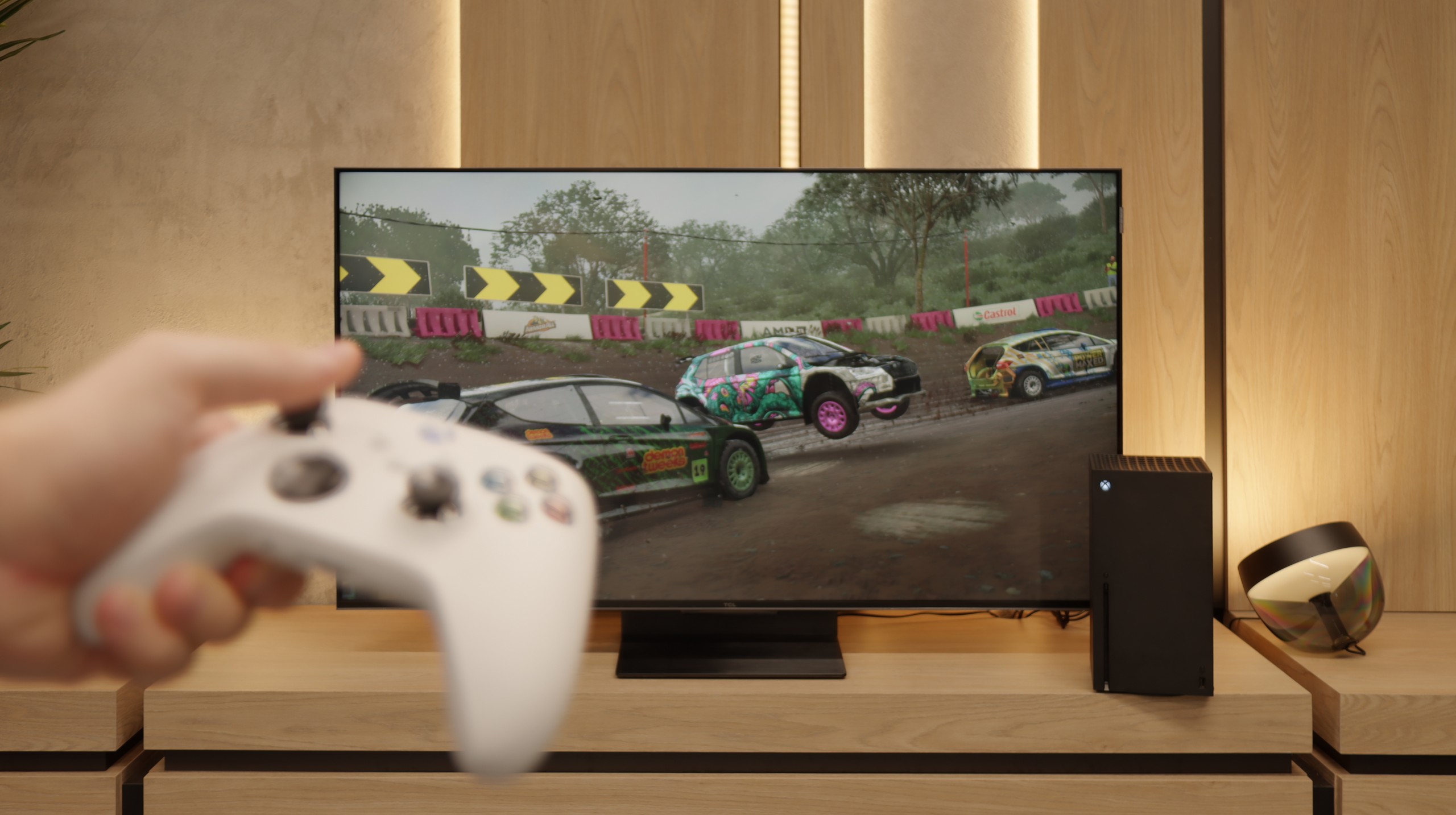
Samsung QN70F is a really solid choice for gamers. It features four HDMI 2.1 ports with full bandwidth of 48 Gbps, which means full support for gaming in 4K at 144 Hz refresh rate. Plus, it has all the basic features we expect today: automatic game mode (ALLM), variable refresh rate (VRR), and a very well-designed, intuitive Game Bar that displays information about the mode, resolution, and frame rate.
The Game Motion Plus feature is also worth noting, as it allows for the addition of artificial frames to games running at 60 fps or less. It works surprisingly well and improves gameplay smoothness in many titles—especially in those where consoles struggle to maintain a stable frame rate—without significant latency.
Unfortunately, there are some drawbacks. The lack of support for Dolby Vision mode is not surprising—it’s a standard for Samsung. However, the absence of the HGiG feature is far more disappointing. Worse still, it was removed in a software update, which might catch users who previously relied on it off guard. Without HGiG, one cannot manually set the maximum HDR brightness from the console, resulting in some games looking slightly overexposed—especially if the TV misinterprets the tonal range. Why Samsung, a brand that has set the standards for gaming features for years, decided to take such a step is hard to say. At the time of writing this review, the tested TV was running on software version 1110—and frankly, if you care about full support for gamers, it’s better to hold off on updates for now.
TCL C7K is a television that on paper looks like the perfect equipment for gamers – and most importantly, it performs well in practice too. Here's some good news: we have two full-bandwidth HDMI 2.1 ports, so we can easily connect both a console and a computer, using all their capabilities. The panel itself supports a refresh rate of 144 Hz, which provides a significant advantage in dynamic games. Additionally, it comes with a full set of gaming features: VRR (variable refresh rate), ALLM (automatic low latency mode), and support for Dolby Vision in games. There's also an HGiG mode that allows for HDR effects that align with the creators' intentions. GameBar, which is an information bar for gamers. It operates quickly, looks clear (like a Nintendo console👌), and shows what's most important: the current frame rate, VRR status, and even HDR parameters.
Input lag
10/10
9.7/10
SDR
HDR
Dolby Vision
The QN70F doesn't disappoint in terms of response time either. For 120 Hz content, the input lag hovers around 8 ms, which can be considered a very good result – especially in the context of online competition or dynamic action games. The screen responds to controller movements almost instantly, with no noticeable delay. This makes for smooth and comfortable gameplay, even in more demanding titles. In this category, Samsung continues to maintain a high standard, and it's hard to find anything that could raise concerns.
When it comes to delays, the C7K gives no reasons to complain. In games at 120 Hz, the input lag is around 10 ms, which means that the TV responds really quickly. Interestingly, even in Dolby Vision mode, the result is very similar, which isn't always the case. Good job, TCL. At 60 Hz, the lag does increase a bit, but that's completely normal and applies to pretty much every TV with a refresh rate of 120Hz and above. The most important thing is that everything still runs smoothly and there's no feeling that something isn't responding to our actions.
Compatibility with PC
8.2/10
8.4/10
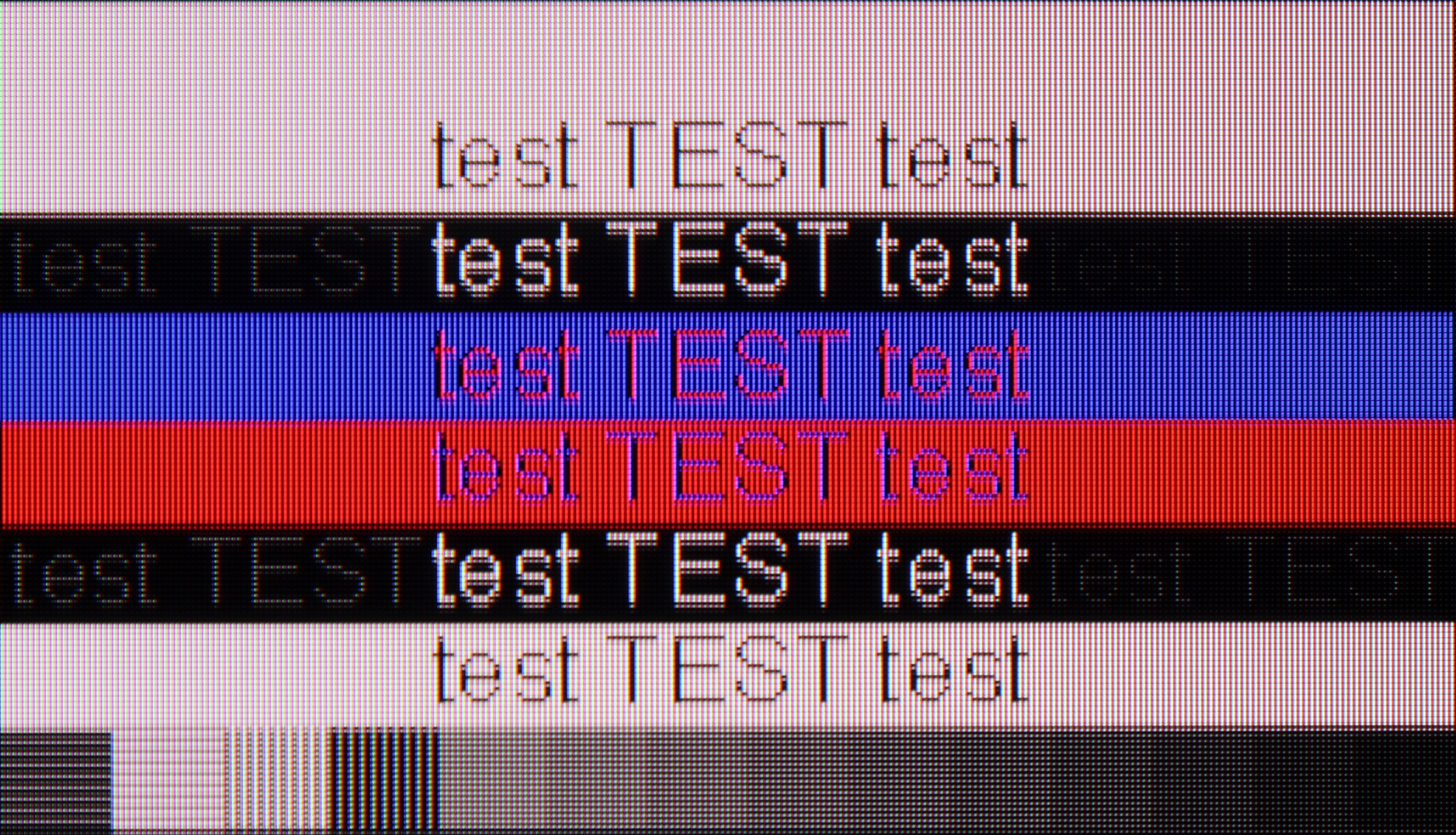
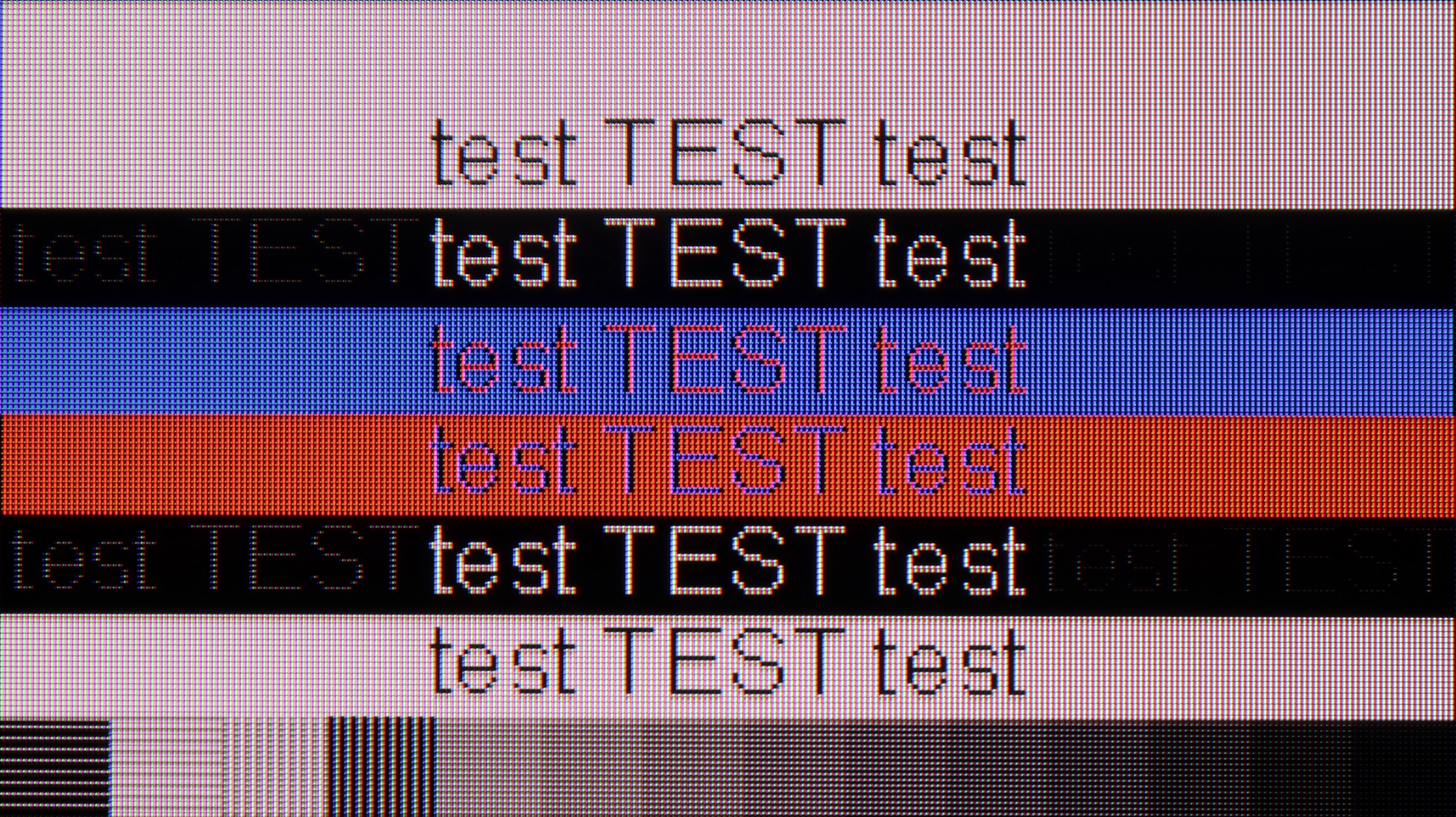
Let's start with the best part when it comes to connecting the QN70F to a computer – that is, gaming. With a refresh rate of 144 Hz, support for G-Sync compatible VRR, and very low input lag, it’s the recipe for almost the perfect screen for PC gamers. In this role, the QN70F really doesn't disappoint – games look smooth, responsiveness is at a very high level, and everything runs steadily.
However, the situation is a bit worse when it comes to working with text. At 4K resolution and a refresh rate of 144 Hz, there is a noticeable slight blurriness in the edges of fonts – text may appear slightly smeared, with a minor “layering” of outlines. This is not a problem that disqualifies the QN70F's usability as a monitor, but those planning to do office work or text editing on this screen should bear this in mind.
If we plan to connect the C7K to a computer – especially for gaming – there's definitely a lot to play with. We have 4K at 144 Hz, which already sounds great, but if we drop the resolution, the TV can even display 280 Hz. In e-sports, where every split second counts, this really makes a difference. On top of that, it supports G-Sync and FreeSync, so no matter what graphics card we have – the image will be smooth, with no stuttering or tearing.
But if we plan to put the C7K on a desk and use it like a monitor, it's a bit less "rosy." Sure, it supports chroma 4:4:4, so fonts should be sharp, but with very dark letters, you can notice slight blurriness and edge dimming. It's not something that immediately stands out during gaming or watching, but when working with text – it can be distracting. In everyday use – relatively worry-free, but if we plan to have a 50-inch screen a metre from our face, it's worth keeping this in mind.
Viewing angles
3.1/10
3/10
For a VA panel, the viewing angles on the QN70F are typical – meaning rather average. The image quickly loses contrast and saturation when we start looking at the screen from a greater angle. Compared to IPS panels, it performs significantly worse. On the other hand – thanks to this panel, we gain better black levels and higher contrast when viewing straight on, which for many users will be more important than wide visibility from the sides.
There's no surprise here – the C7K has classic viewing angles for a VA panel. That is: we sit directly in front – it's excellent. Colours look good, contrast is strong, everything is in place. But just shifting slightly to the side starts to make things worse – the image loses saturation, the blacks turn grey, and the overall impression diminishes a bit. So if we plan to watch together with a few people or have a sofa that takes up half the lounge – it’s worth seating everyone more centrally. You can watch from the side, but don’t expect miracles – it’s simply a characteristic of the VA panel.
TV efficiency during daytime
6.3/10
6.1/10
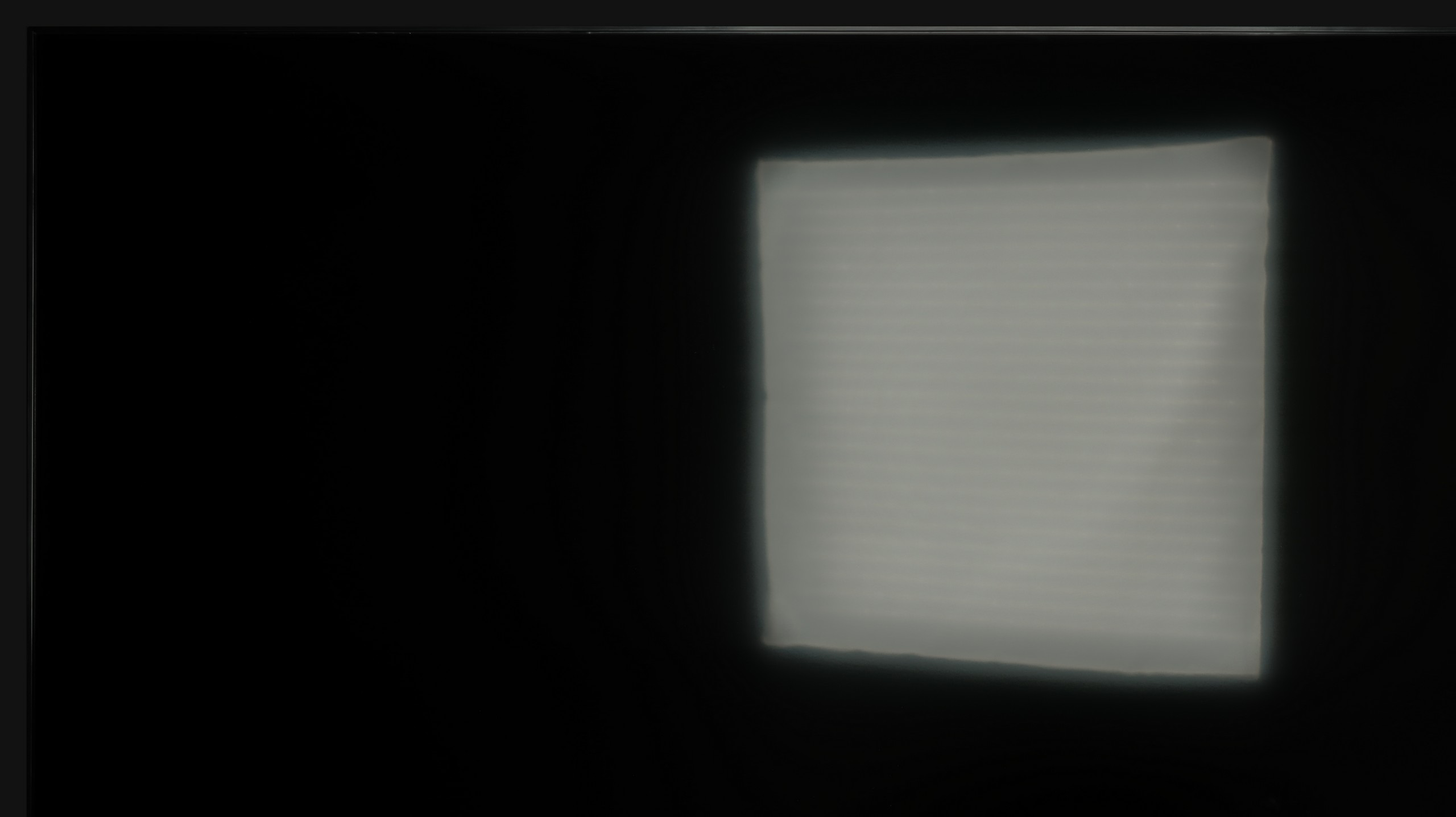

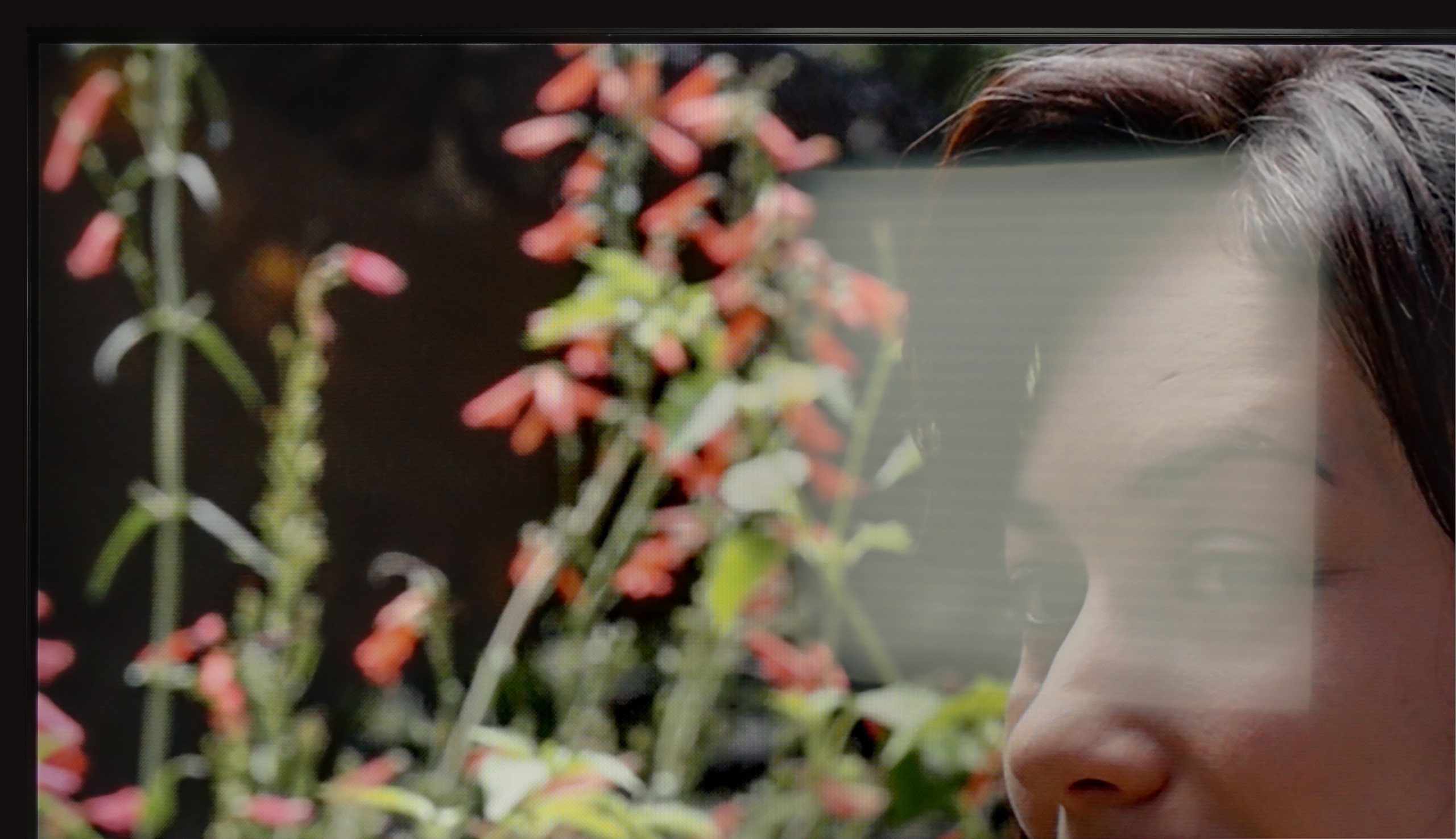
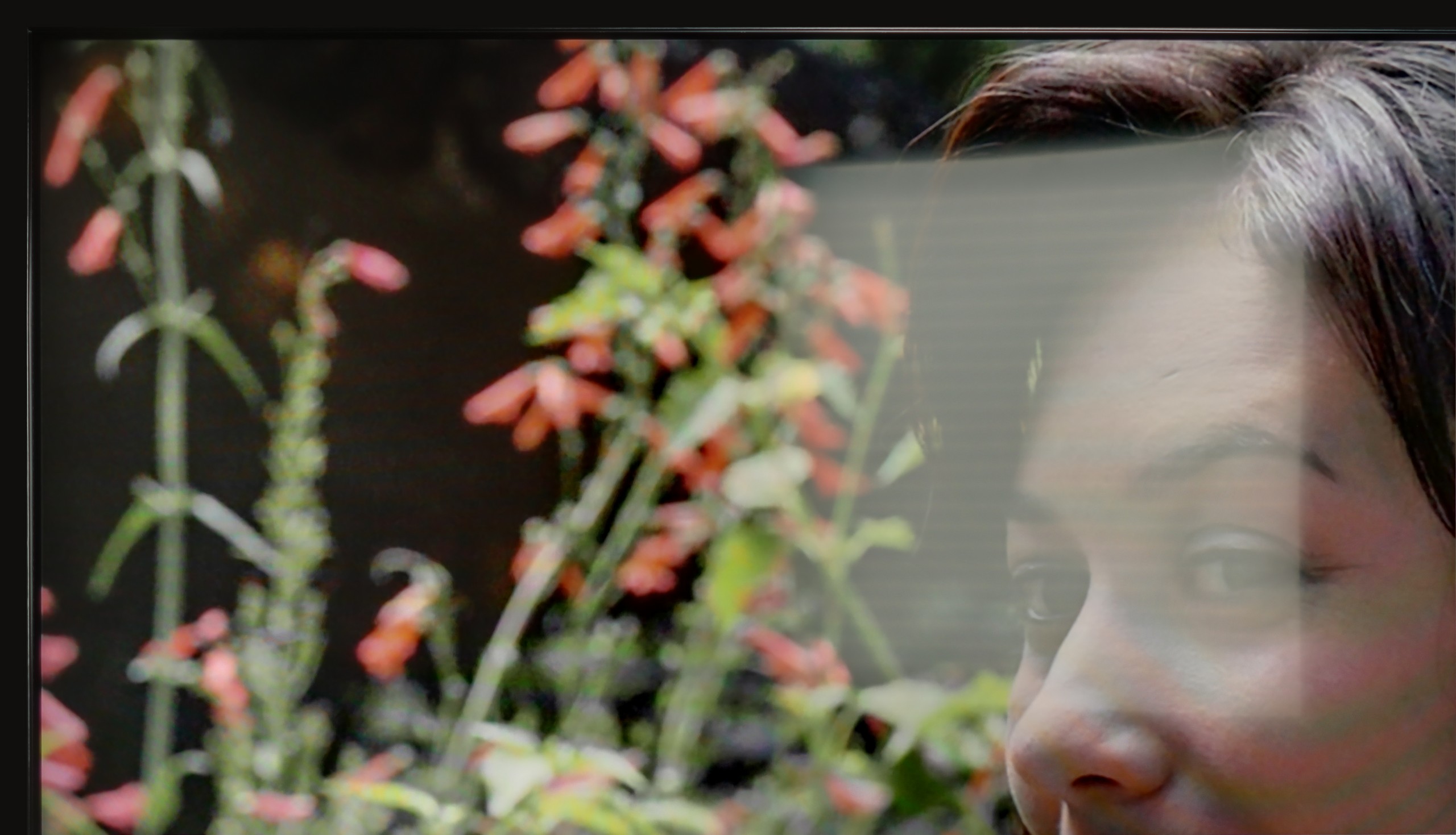
Matrix brightness
Average luminance SDR
TCL C7K / QM7K: 475 cd/m2
Samsung Neo QLED QN70F / QN74F / QN77F: 492 cd/m2
The QN70F handles a bright lounge without any issues. The screen has a satin finish that effectively reduces reflections, so you don't have to immediately draw the blinds to see anything. Even when there's quite a bit of light in the room – for example, with a window on the side – the image still looks sharp and vibrant. The brightness is also at a solid level. In SDR mode, the television averages around 500 nits, which is more than adequate for daytime viewing. It may not be the level of top-end models, but in practice – for everyday watching of TV, sports, or YouTube – it performs very well.
Luckily, the TCL C7K performs quite well in bright rooms. The applied panel has a satin finish that effectively reduces reflections, so even on sunny days we don't have to worry about reflections from lamps or windows. Importantly, the colours maintain their intensity and don't wash out, as can happen with weaker matte panels. As for brightness, the average for content like YouTube or regular television reaches just below 500 nits. It's not a record result – for example, the MQLED85 (C765) performs better in this regard. However, for everyday viewing during the day, it should work without major issues, as long as we don't plan to place it opposite a south-facing window without curtains.
Details about the matrix
Subpixel Structure:

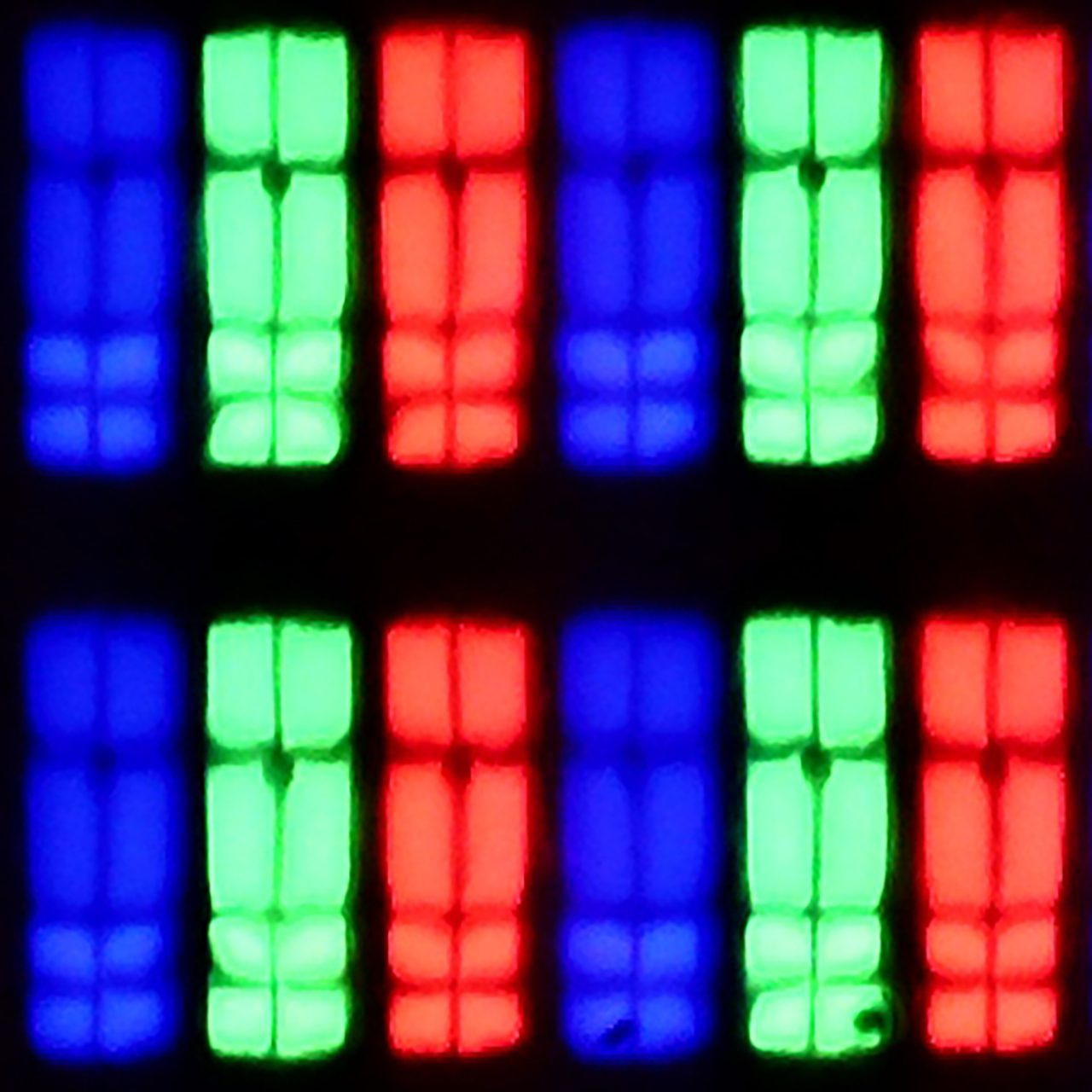
Panel uniformity:
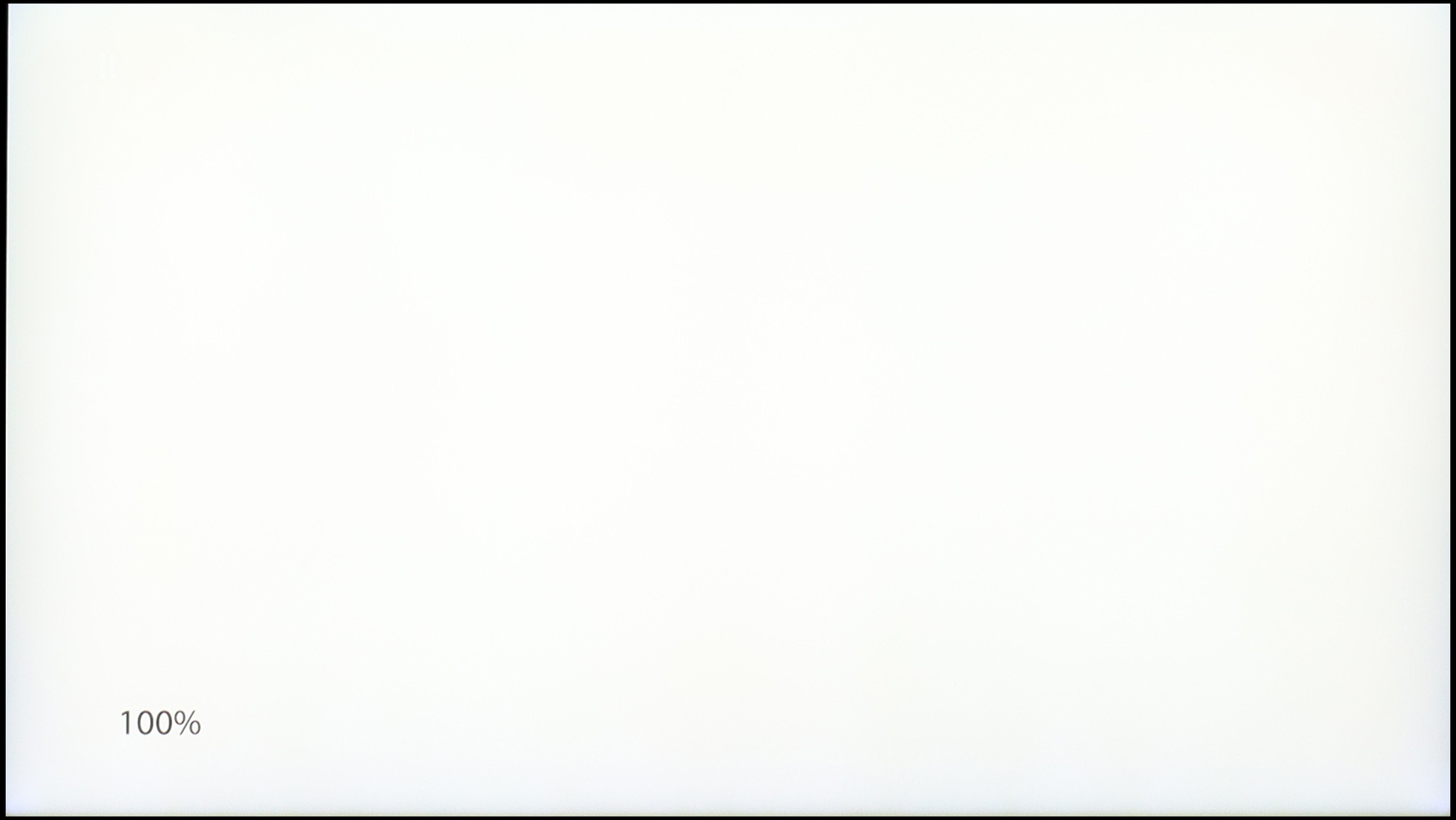
Samsung Neo QLED QN70F / QN74F / QN77F
TCL C7K / QM7K
TV features
7.5/10
7.7/10
- HDMI inputs0 x HDMI 2.0, 4 x HDMI 2.1 48Gbps2 x HDMI 2.0, 2 x HDMI 2.1 48Gbps
- OutputsToslink (Optical audio), eARC (HDMI), ARC (HDMI)Toslink (Optical audio), eARC (HDMI), ARC (HDMI)
- Network InterfacesWi-Fi 2.4GHz, Wi-Fi 5GHz, Ethernet (LAN) 100MbpsWi-Fi 2.4GHz, Wi-Fi 5GHz, Ethernet (LAN) 100Mbps
- TV receptionDVB-T, DVB-T2, DVB-S, DVB-S2, DVB-CDVB-T, DVB-T2, DVB-S, DVB-S2, DVB-C
Classic features:
- Recording to USB (terrestrial TV)
- Recording programming
- Picture in Picture (PiP)
- RF remote control (no need to aim at the screen)
- Backlit remote control
- Teletext
- Audio only mode
- Possibility to connect Bluetooth headphones to the TV
- Possibility to simultaneously use Bluetooth headphones and the TV speaker
Smart features:
- AirPlay
- Screen mirroring (Windows Miracast)
- Wyszukiwanie głosowe
- Voice search in native language
- Ability to connect a keyboard and mouse

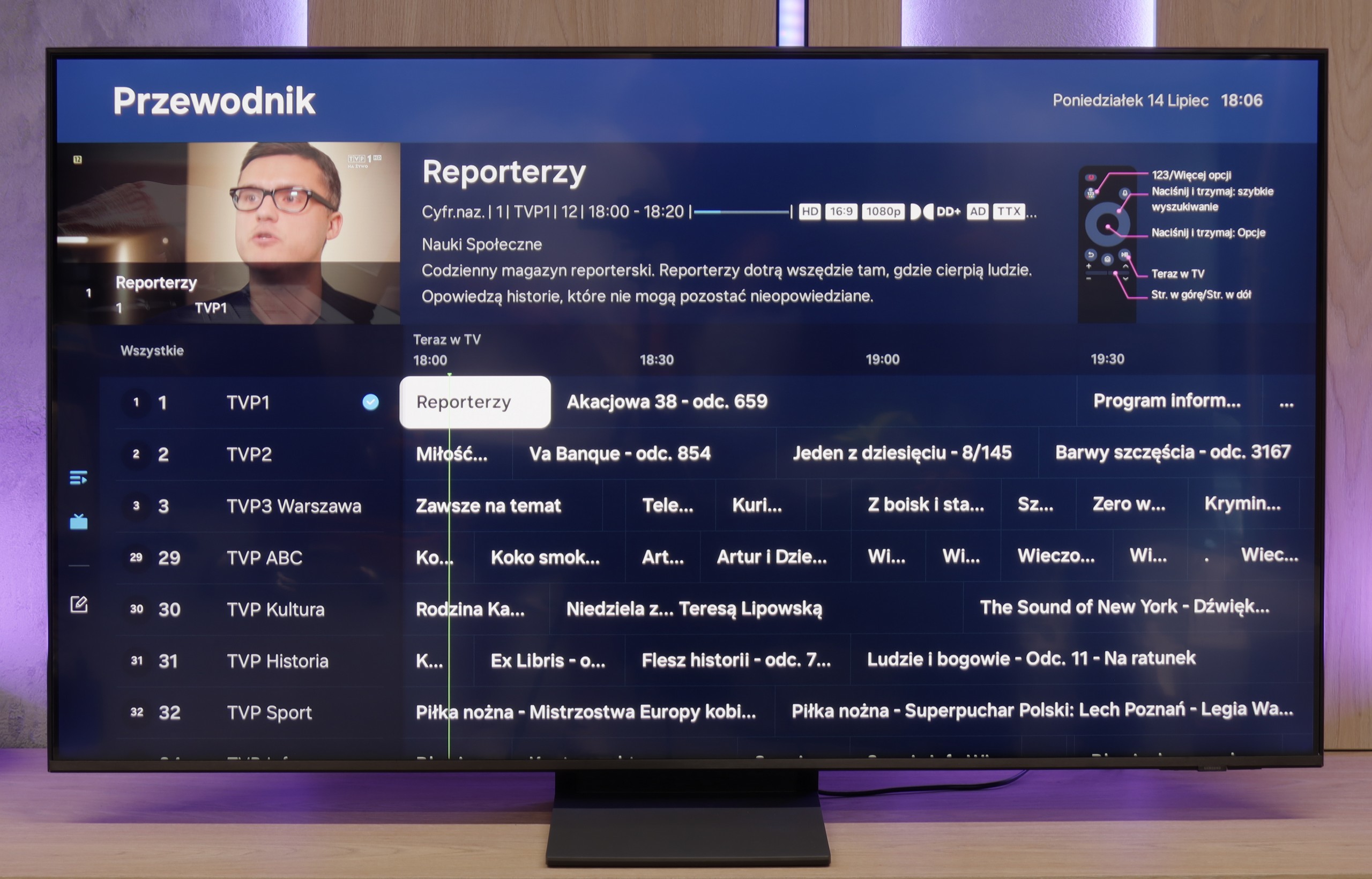
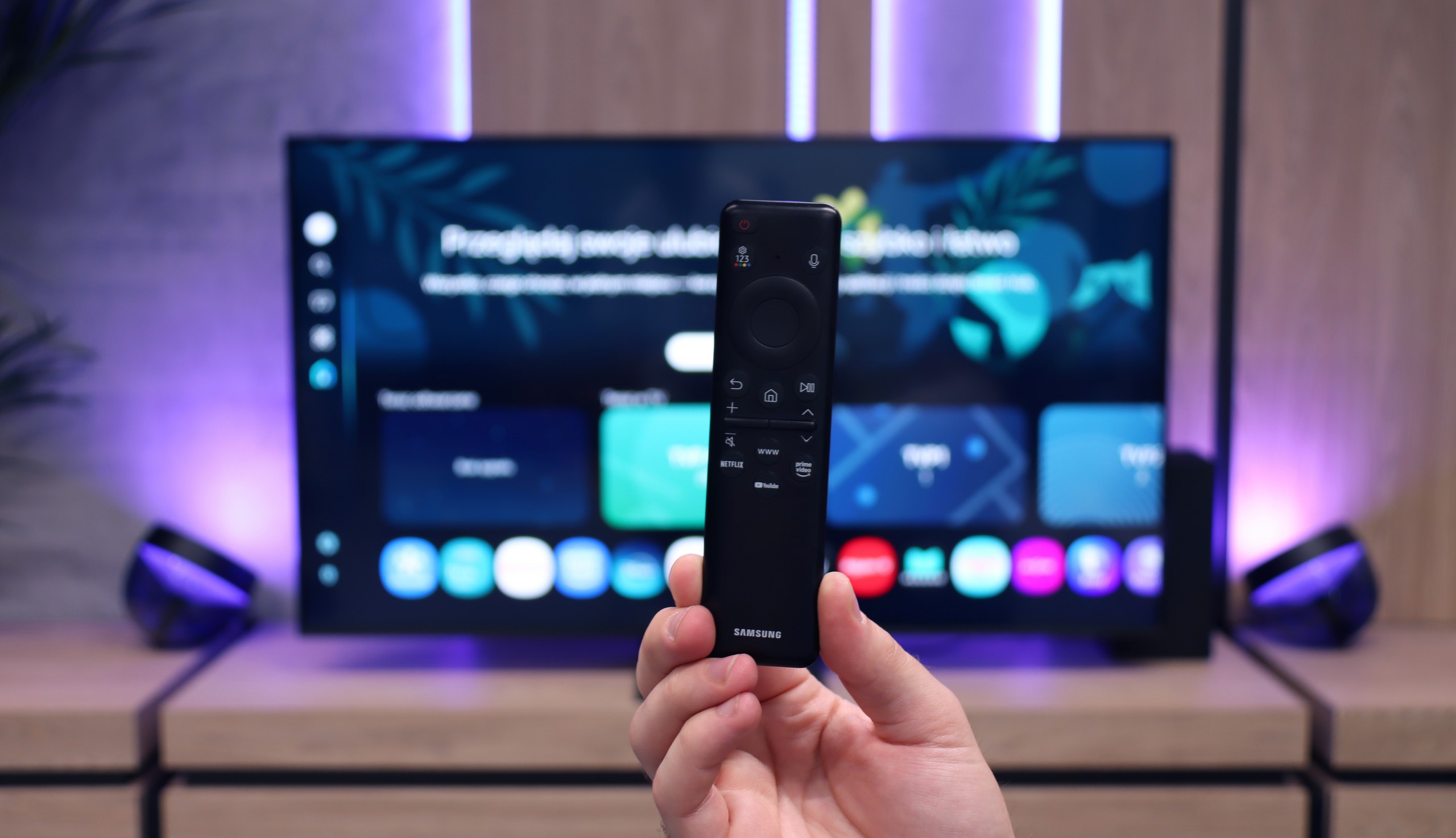
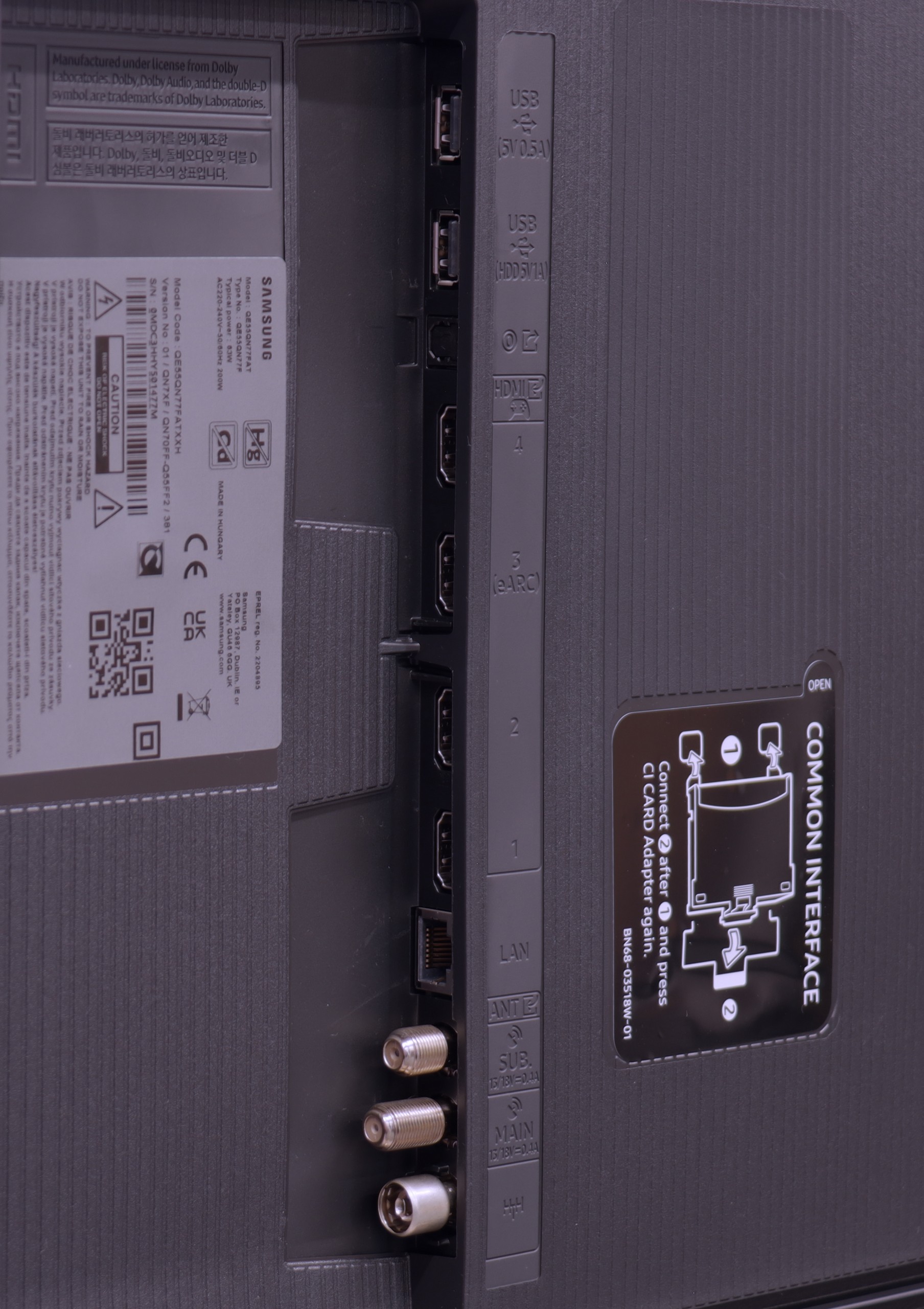
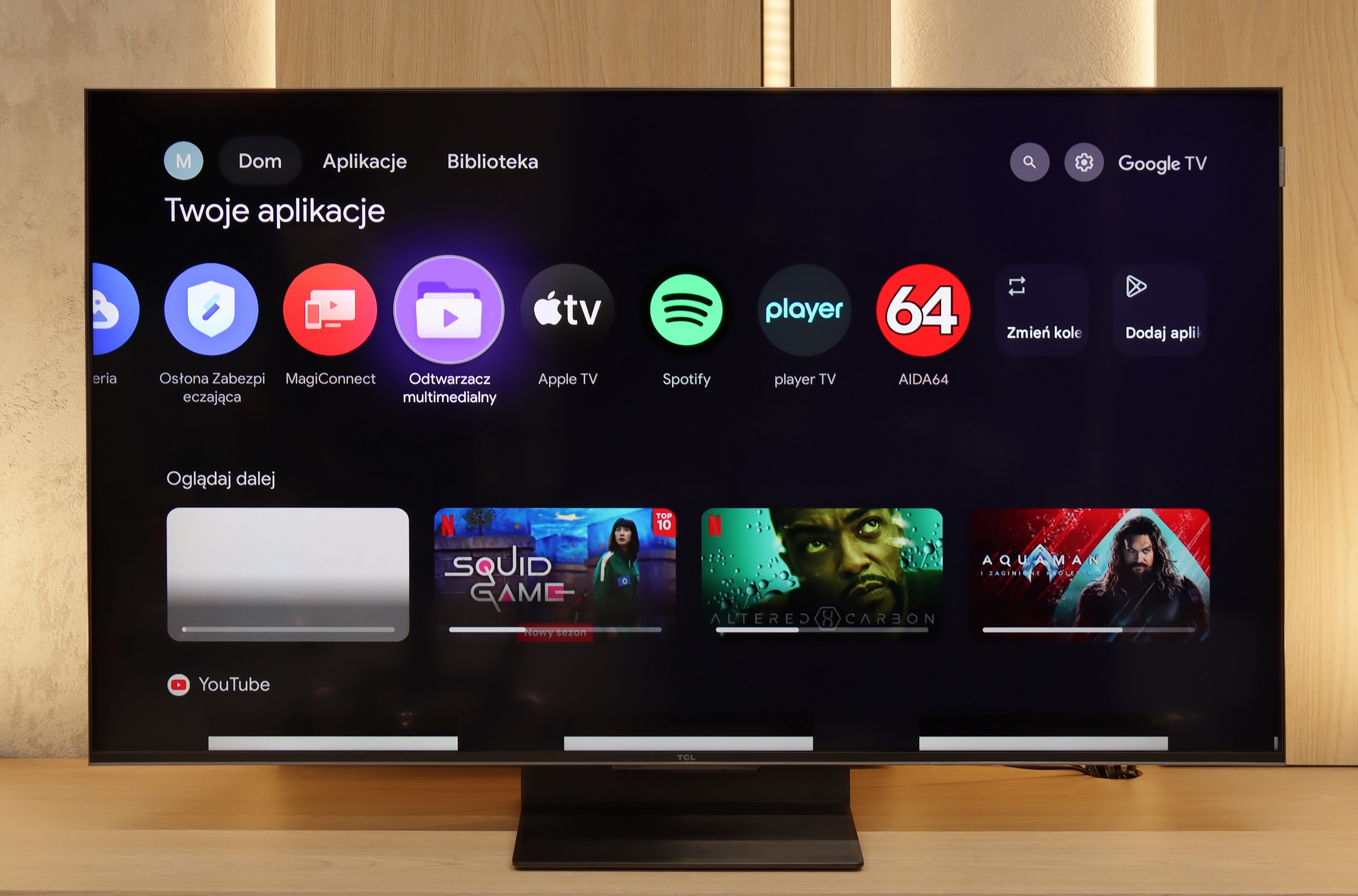
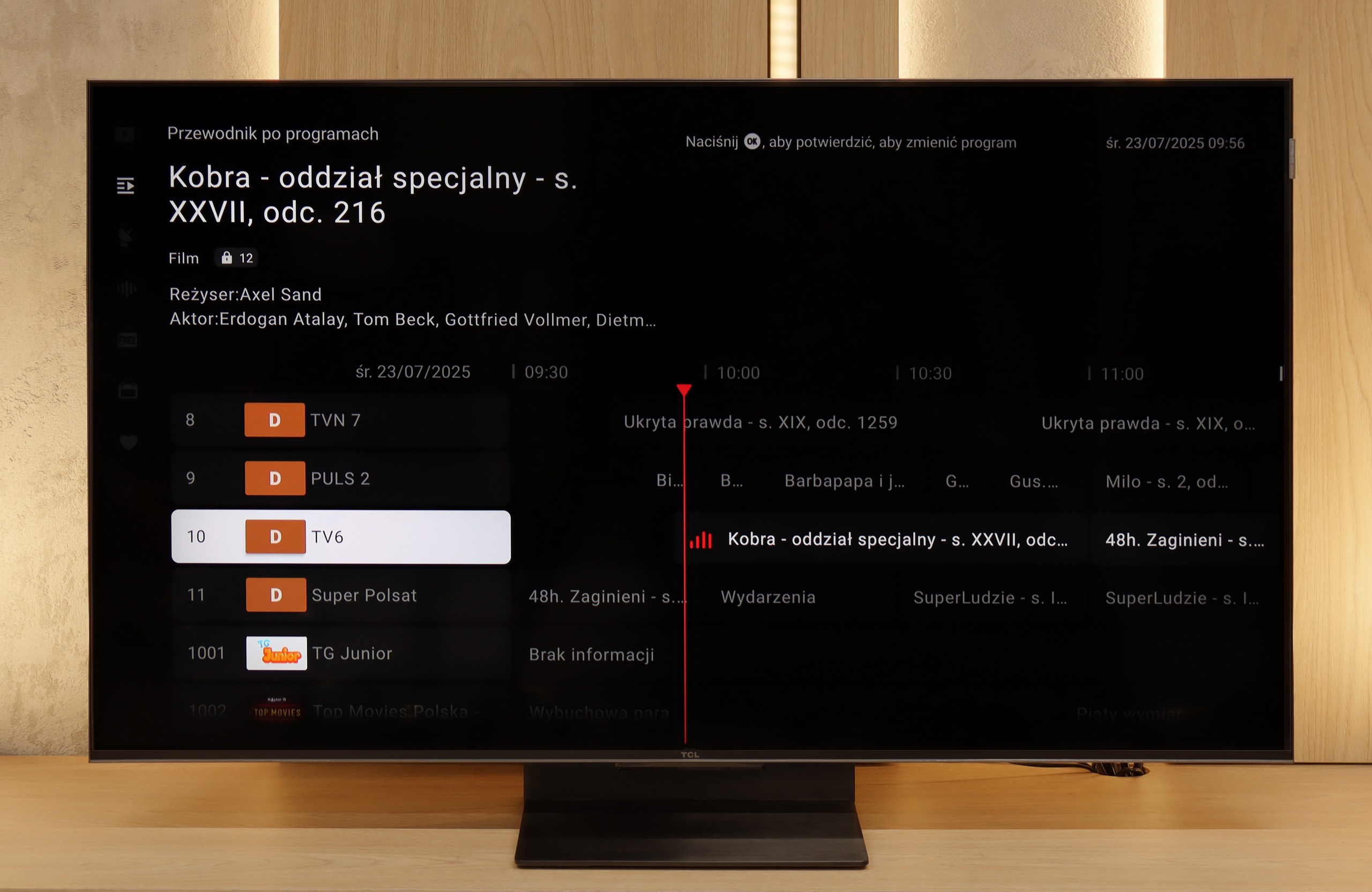
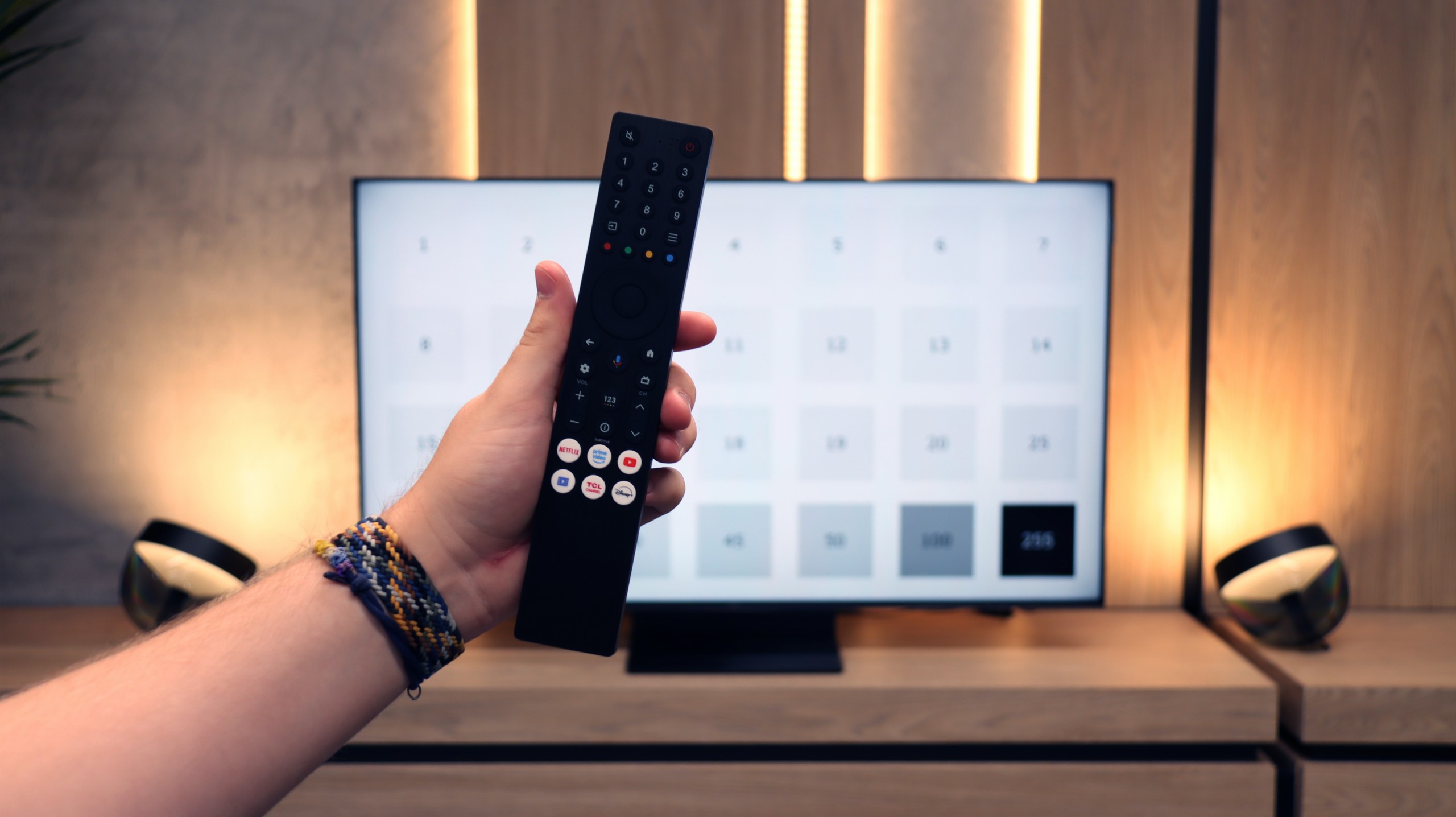
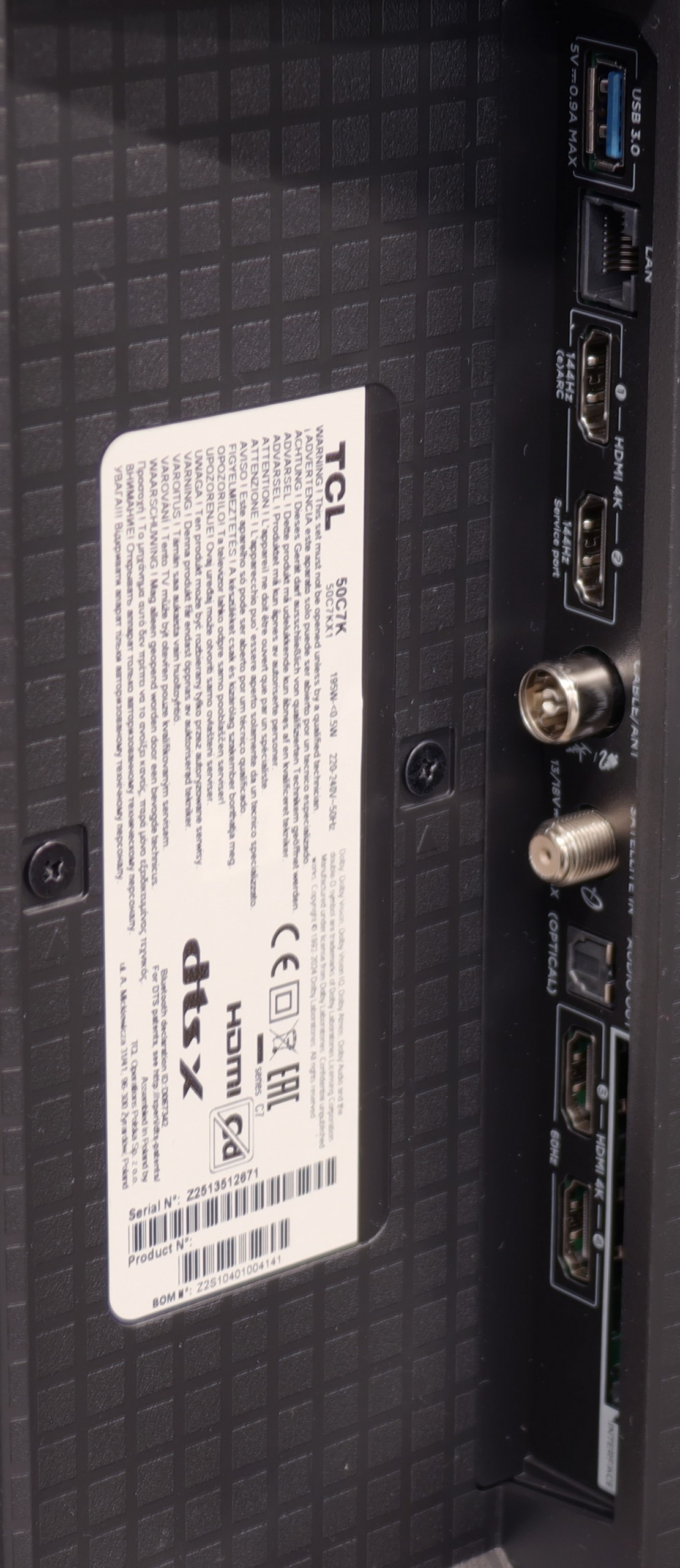
Television Features
QN70F does not forget about the classic features that still matter to many users. Onboard, we find, among other things, a picture-in-picture (PiP) mode, thanks to the presence of two tuners, teletext, and a "Sound Only" mode – perfect if we want to use the television like a radio. We can easily pair headphones or a soundbar via Bluetooth, and the remote – despite lacking a numeric keypad – works reliably, allowing control of other devices and additionally does not require us to aim at the screen. It should be noted, however, that like all new Samsung models – we will not find the USB recording feature here. This is a systemic limitation, to which the brand apparently consistently adheres.
Smart TV QN70F – Tizen
The Tizen system, developed by Samsung for years, is one of the most refined Smart TV interfaces. It is fast, clear, and feature-rich. The QN70F supports voice search (also in Polish), wireless image streaming from a phone (both via AirPlay and Miracast), as well as integration with watches and other devices in the Samsung ecosystem. All of this is tied together by the SmartThings app, which allows you to control devices, automate tasks, and connect devices in one network. (Not just Samsung brand). However, it is not perfect. Tizen is a closed system, so the choice of apps can be somewhat limited – especially compared to Google TV. All the major streaming services are available, but if you are using less popular services, it's worth checking in advance whether they are available in the Samsung store.
SmartTV: GoogleTV
The biggest strength of the TCL C7K in everyday use is undoubtedly the Google TV system. It is thanks to this that we have access to an almost endless library of applications, including some more niche ones that are often unavailable on other platforms. The built-in Google Assistant understands Polish, so we can easily ask what is on TV, what the weather is like, and even give a few voice commands to control the television. The presence of Chromecast and AirPlay, which work smoothly and make life easier, is also a plus.
Usability Features
However, the traditional functions are a bit lacking. Of course, we have the basics – teletext, EPG, or the ability to connect headphones – but that’s pretty much where it ends. There's a lack of USB recording features or picture-in-picture (PiP) mode, which can still be found among competitors. It's also worth remembering that Google TV in the TCL version sometimes has strangely translated menu sections or minor interface errors. These aren’t issues that hinder daily use, but detail-oriented individuals may notice them.
Playing files from USB
8.4/10
9.2/10
Supported photo formats:
Maximum photo resolution:
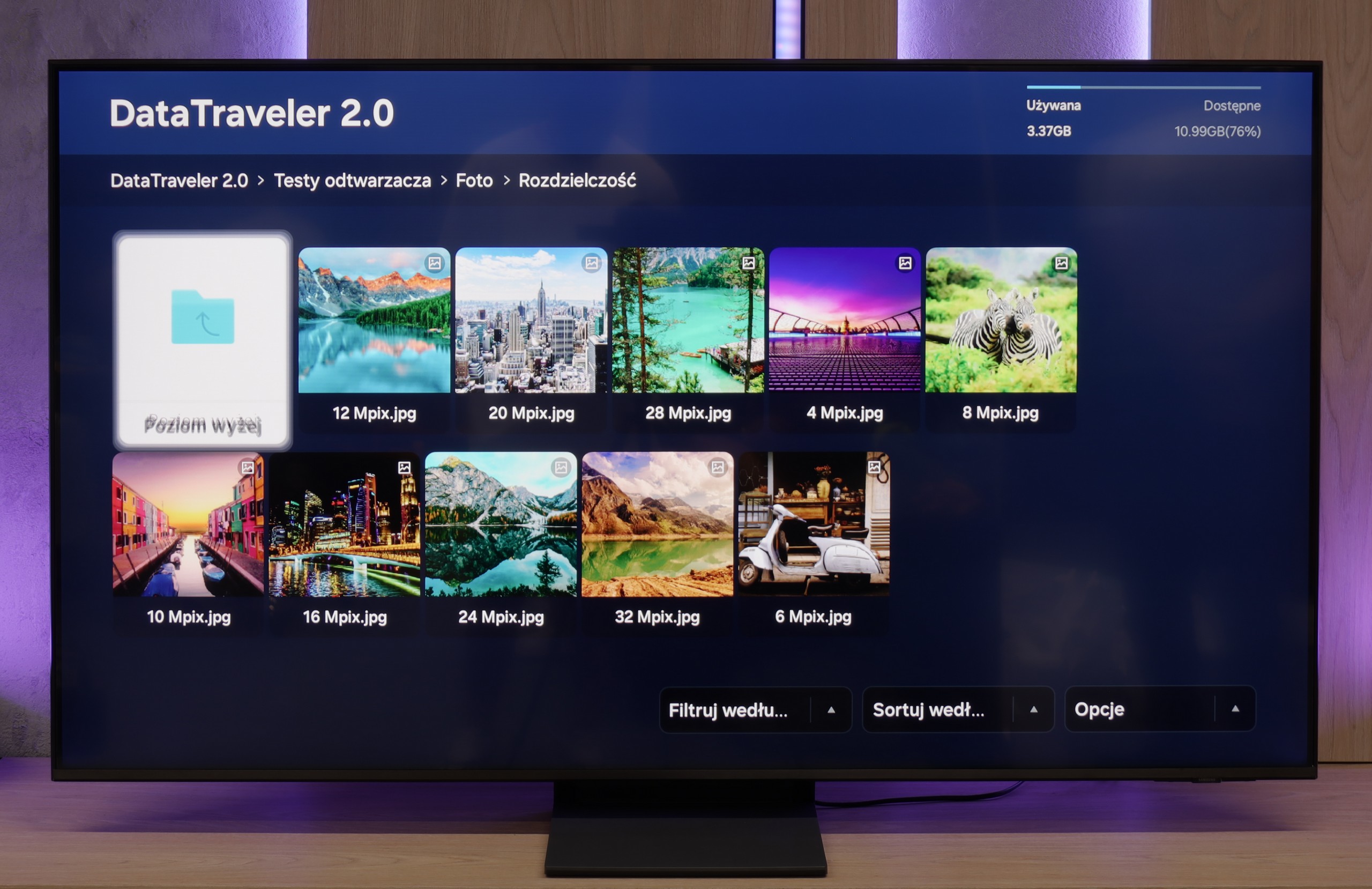

Samsung QN70F handles multimedia playback well – it easily runs photos, music, and videos in the most commonly used formats. During testing, it opened JPG files, MP4s, and TXT subtitles without any trouble, so for most people, this will simply be sufficient. However, there were a few files – despite having the correct extensions – that refused to play. It may be an issue with a particular version of the system, and the problem might disappear after future updates.
The built-in file player in the TCL C7K performs really well. It supports most popular audio and video formats, so if we want to quickly plug in something from a USB drive and get it going – there shouldn't be any problem. Of course, as is often the case, you can find some minor shortcomings – not every exotic codec will work (Apple's HEIC), not all subtitles will be perfectly synchronised (txt.). However, the biggest advantage of this television comes to the rescue, which is Google TV. With access to the Google Play Store, we can easily install an alternative player, such as VLC, and then no files will frighten us.
Apps
8.7/10
9.6/10














































Sound
6.4/10
7/10
- Subjective sound quality:6.4/107/10
- Dolby Digital Plus 7.1:
- Dolby True HD 7.1:
- Dolby Atmos in Dolby Digital Plus (JOC):
- Dolby Atmos in Dolby True HD:
- DTS:X in DTS-HD MA:
- DTS-HD Master Audio:
The Samsung QN70F is quite average in terms of sound, which shouldn't come as a surprise considering the exceptionally slim design of the television. The built-in speakers will adequately handle daily watching of news or simpler content, but it's hard to talk about any depth or spaciousness of sound here. It's simply a compromise that must be accepted when choosing an elegant and thin design over a bulkier casing with a better audio system.
To be honest, we didn't expect much from the sound of the 50-inch version of the C7K model. Usually, in such sizes, it's hard to find anything more than thin, flat sound. But here – a pleasant surprise. The sound turned out to be really enjoyable, with good clarity and even a subtly noticeable bass. This is probably linked to TCL's new collaboration with the Bang & Olufsen brand, which is a novelty for 2025. Whether the C7K actually contains original drivers from the Danish premium brand – we can't confirm that. But the end result still deserves a thumbs up. For a TV without a soundbar – it sounds quite nice.


